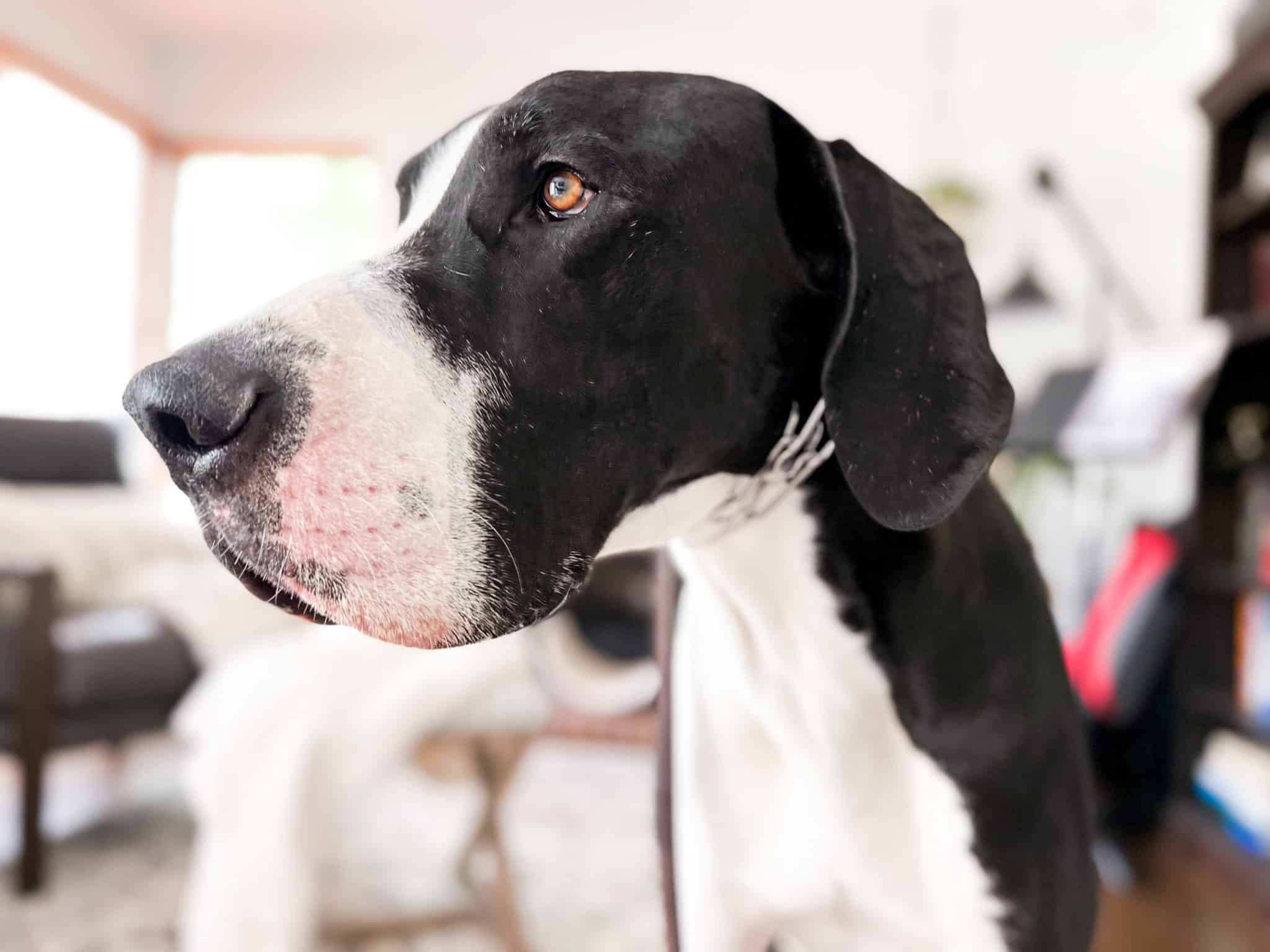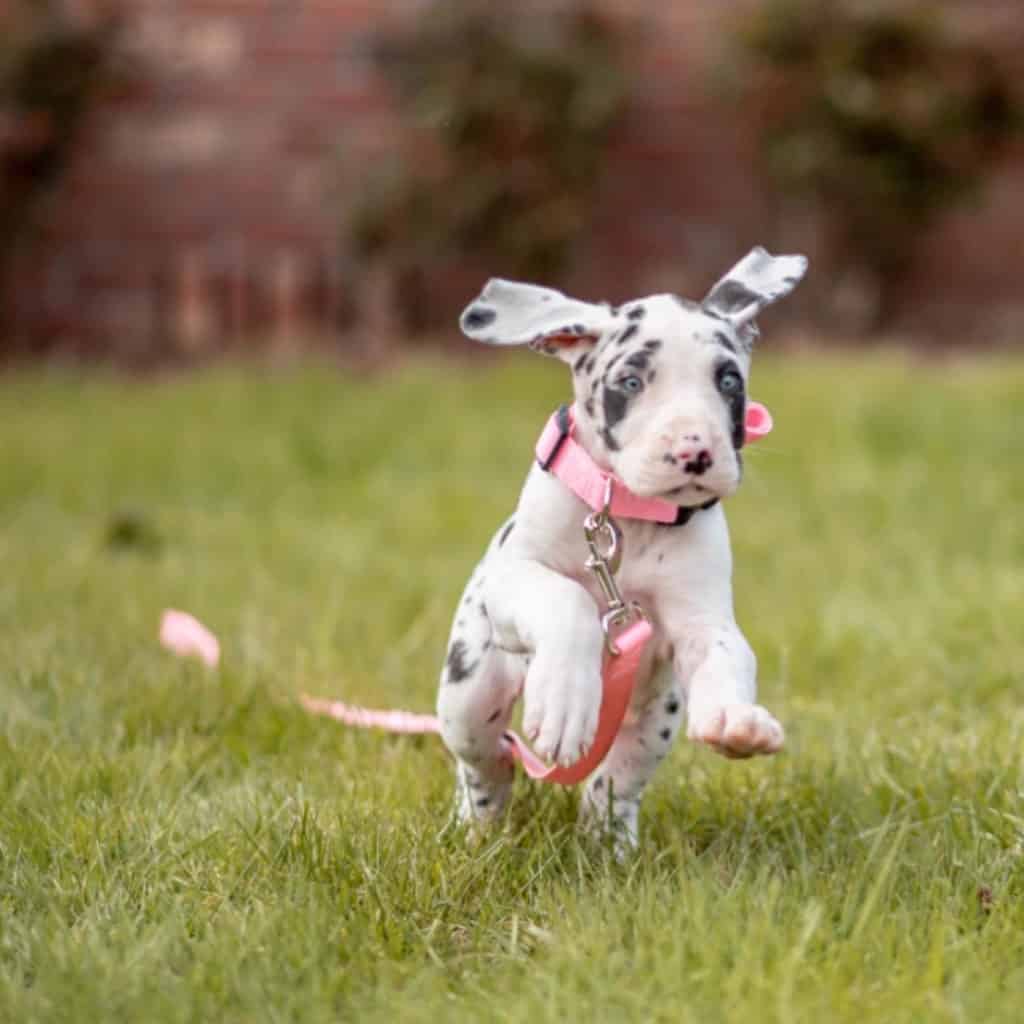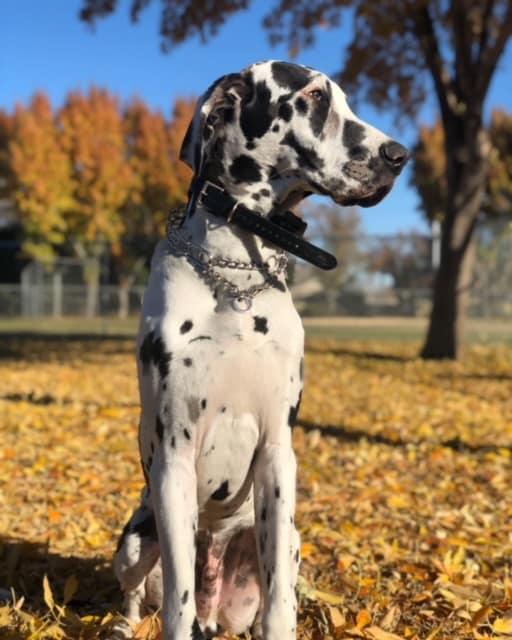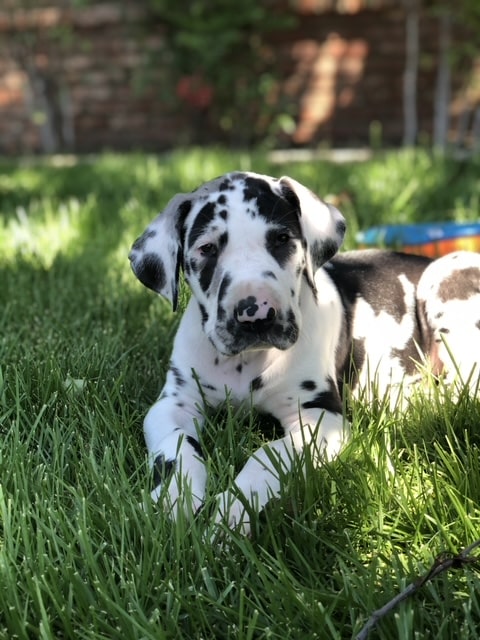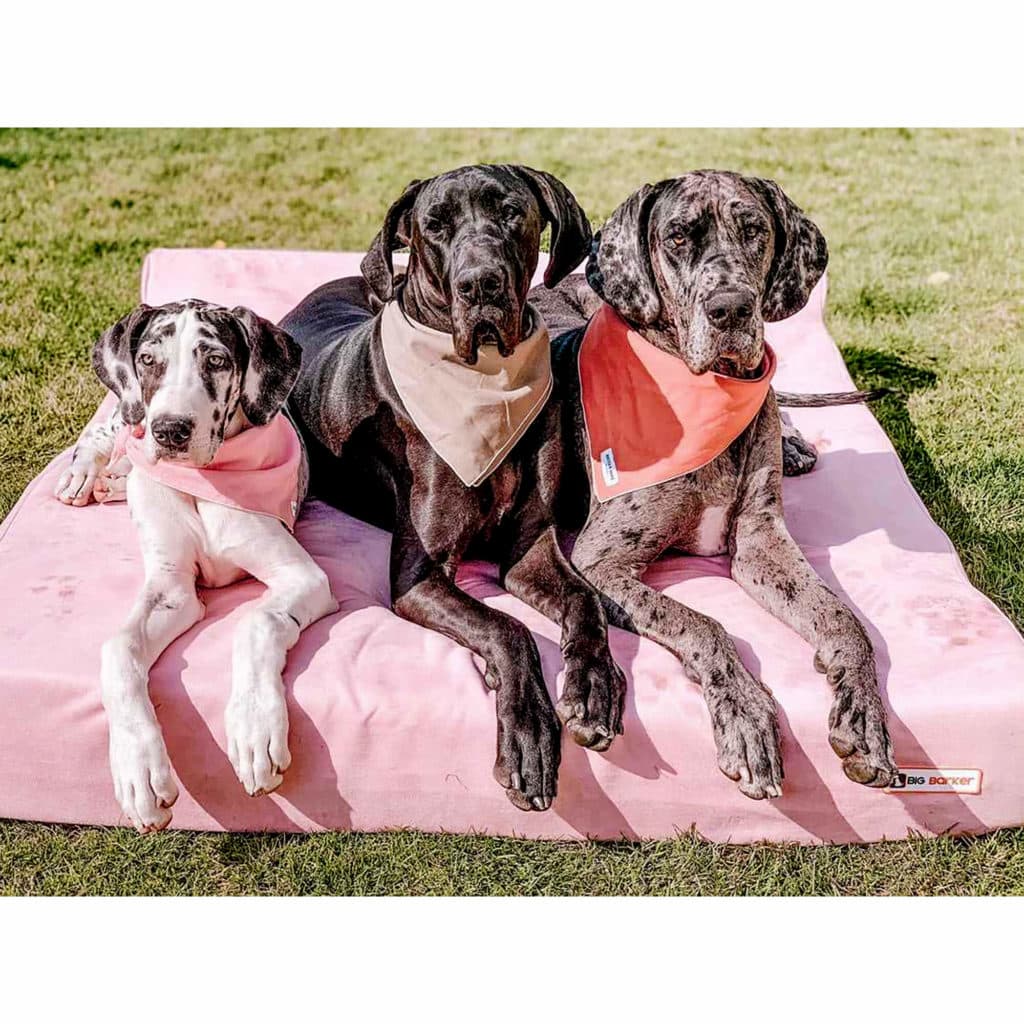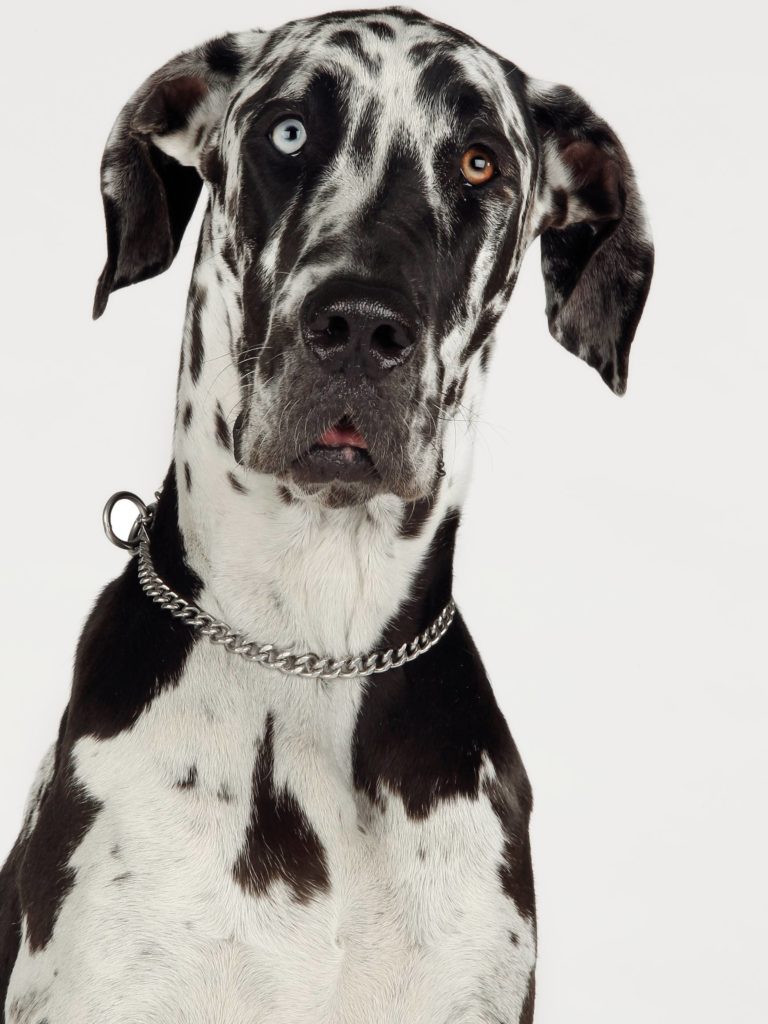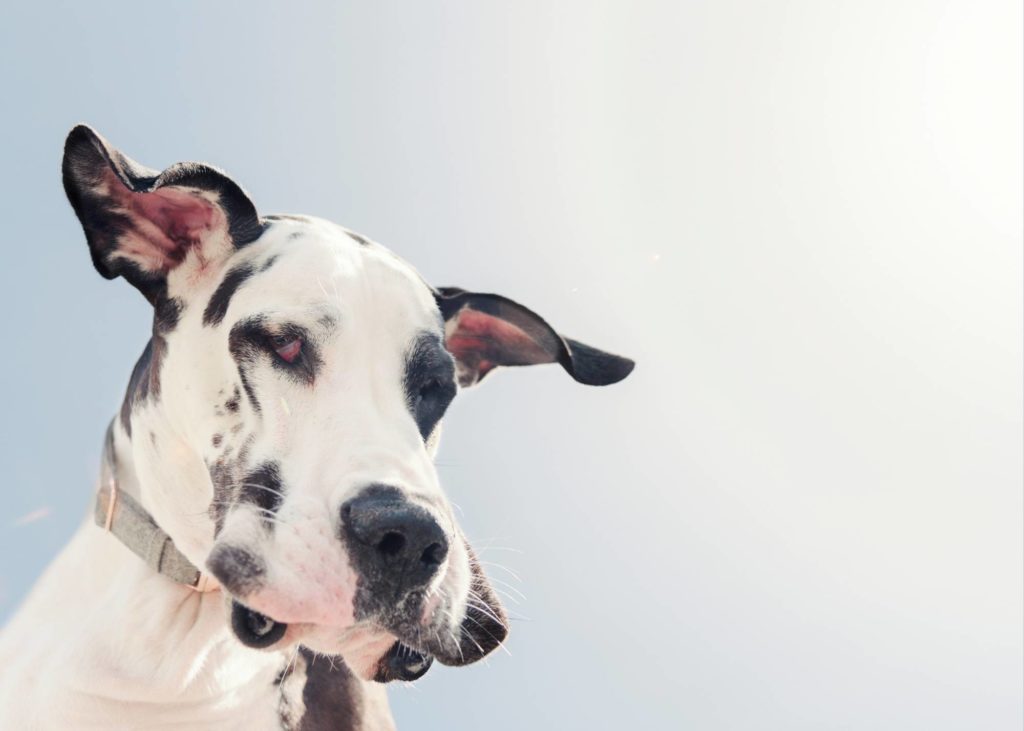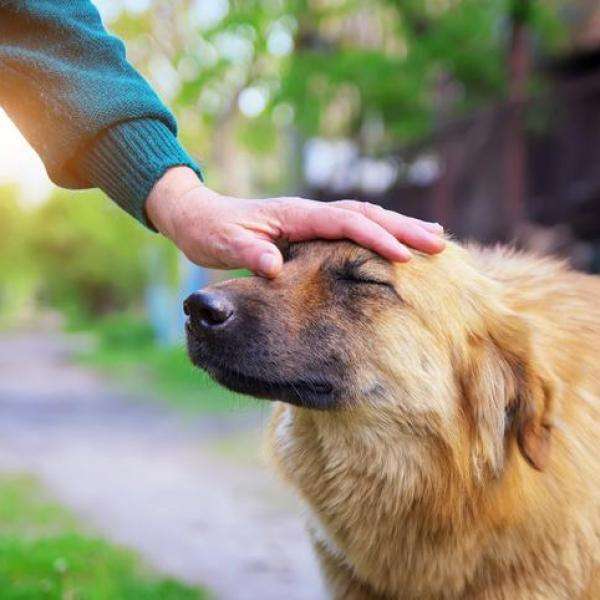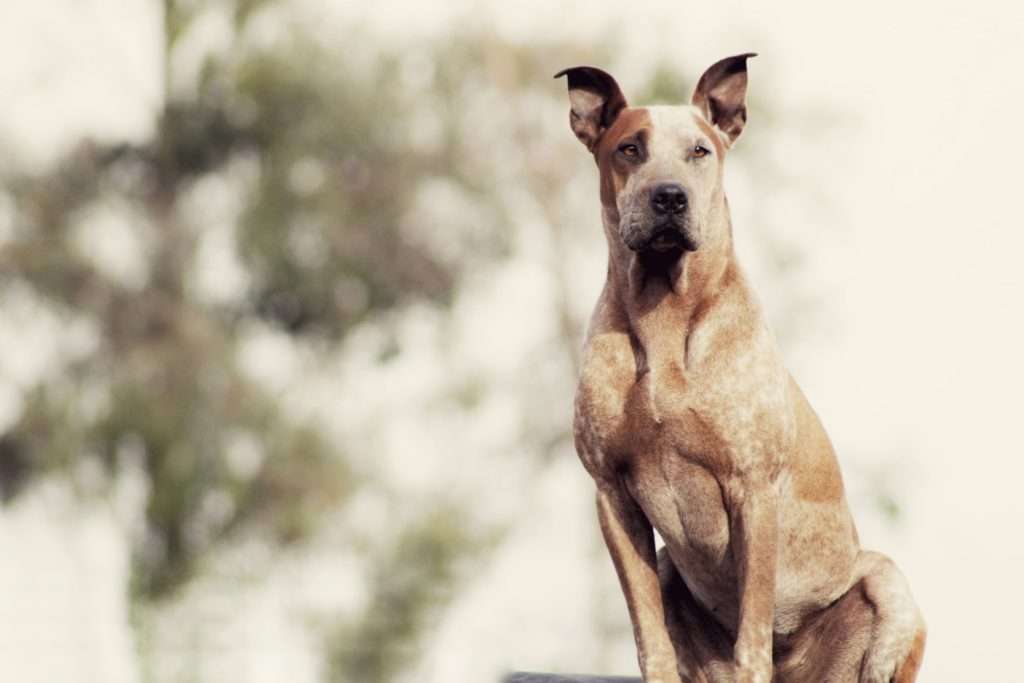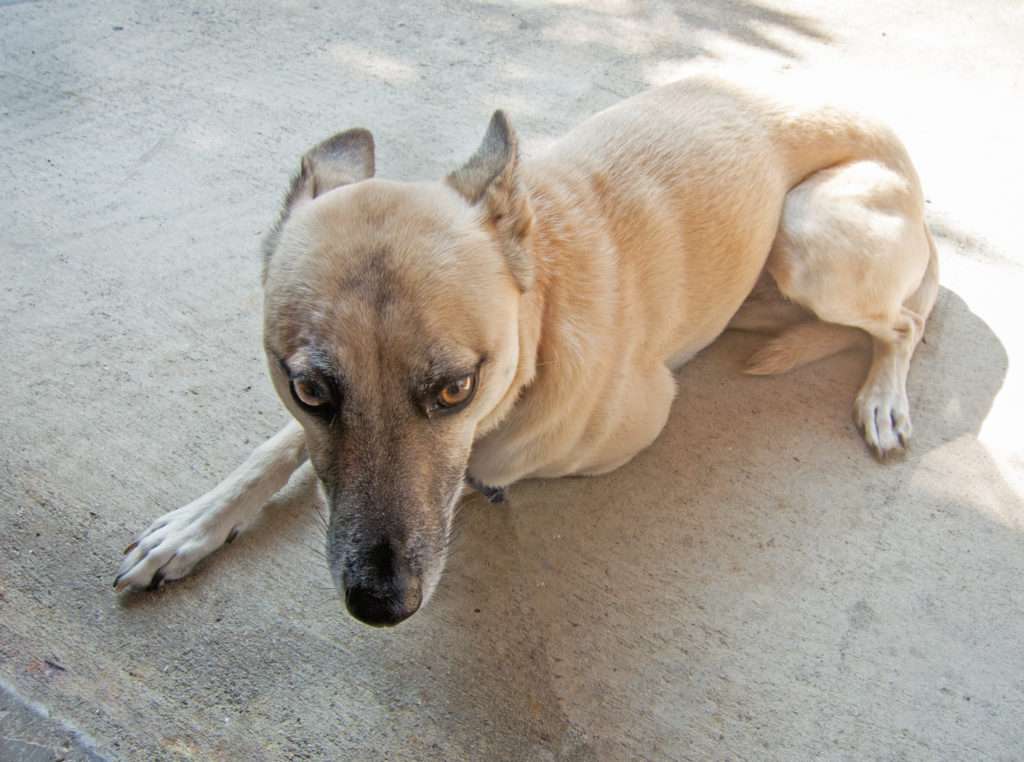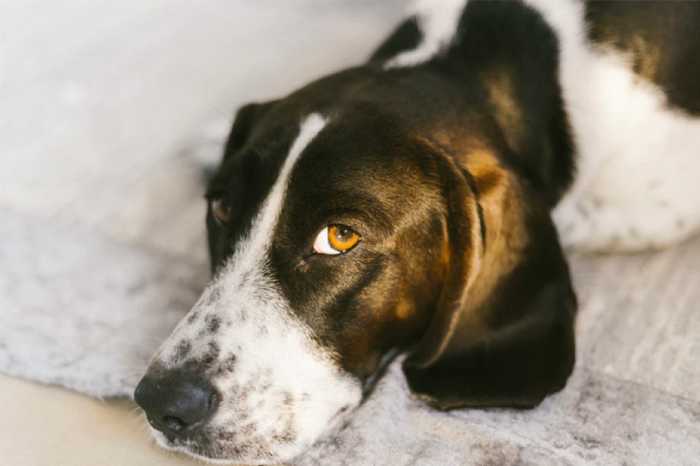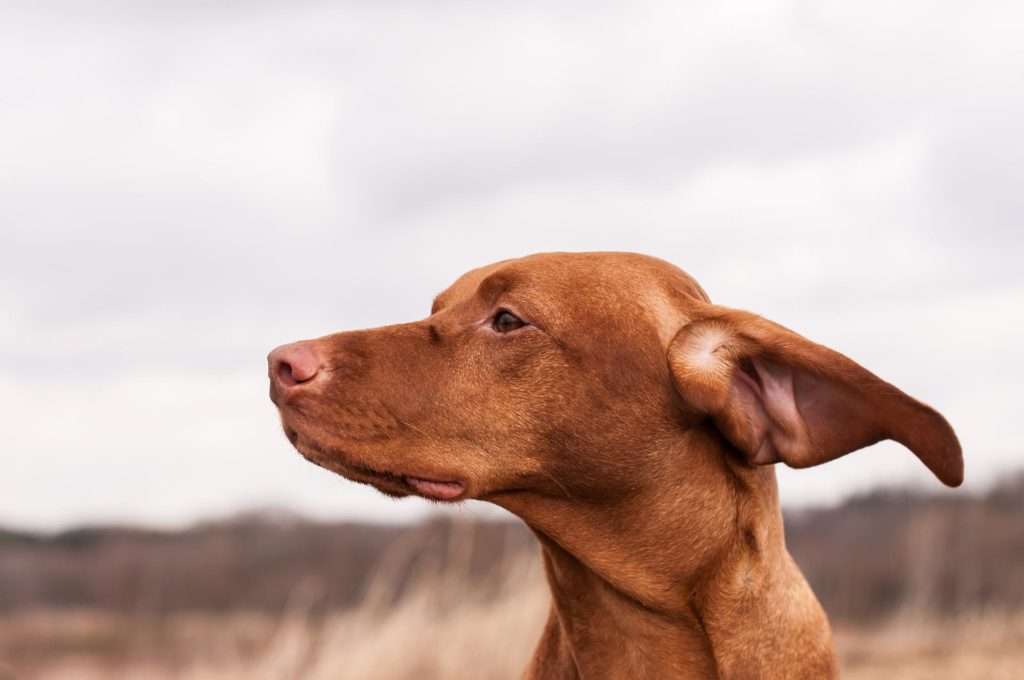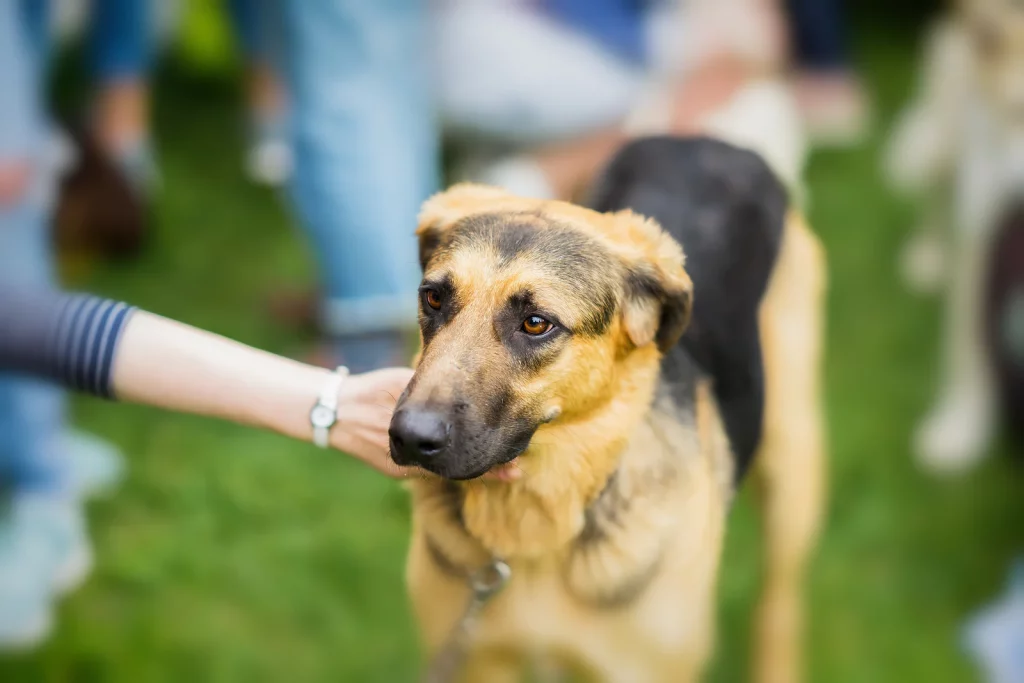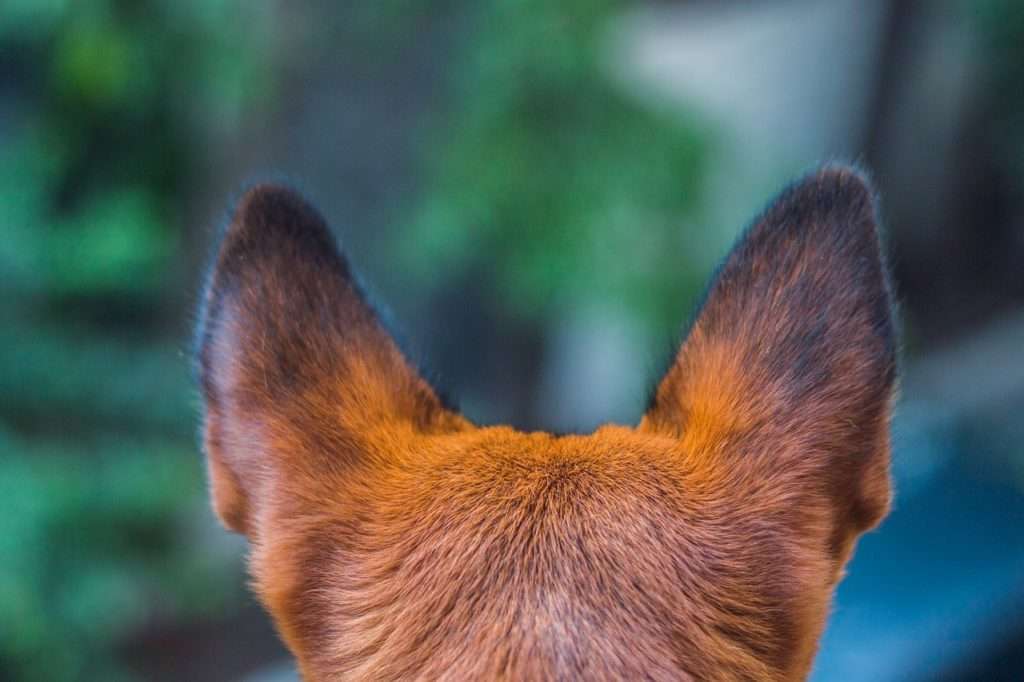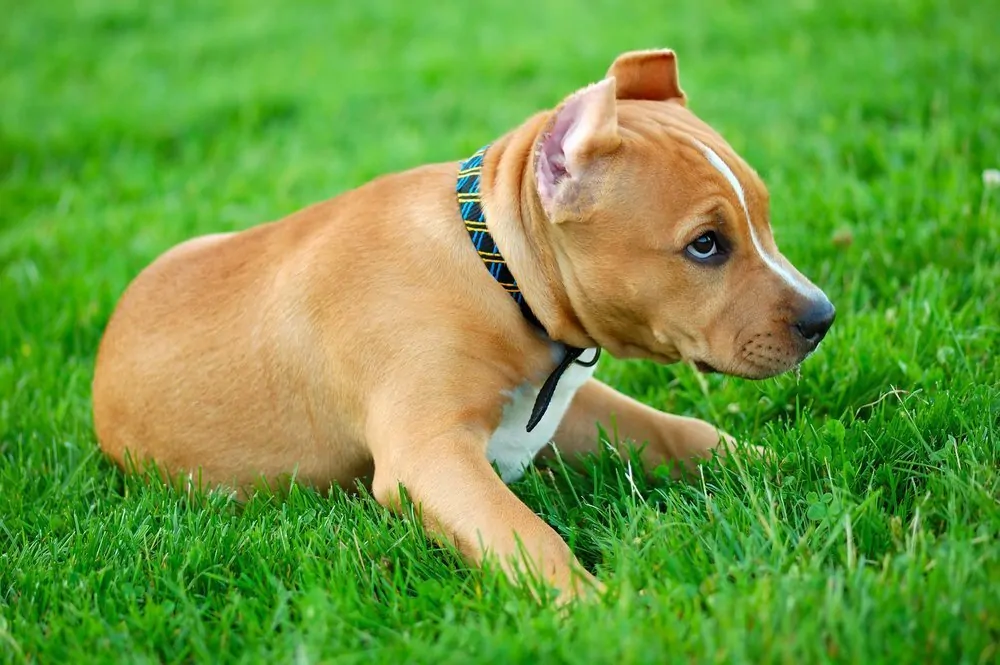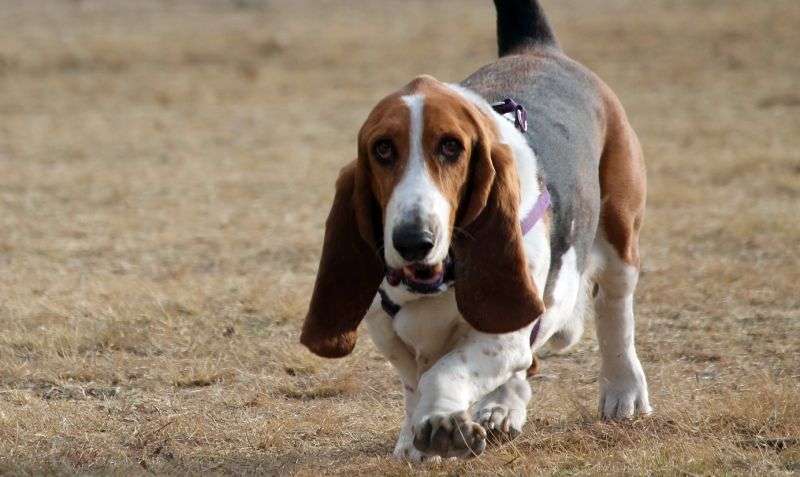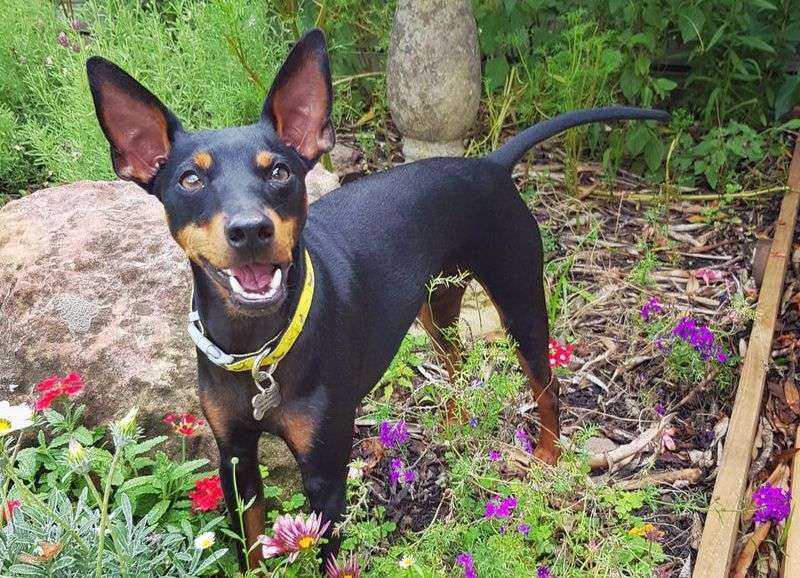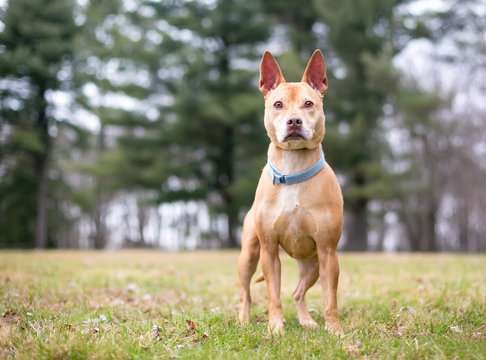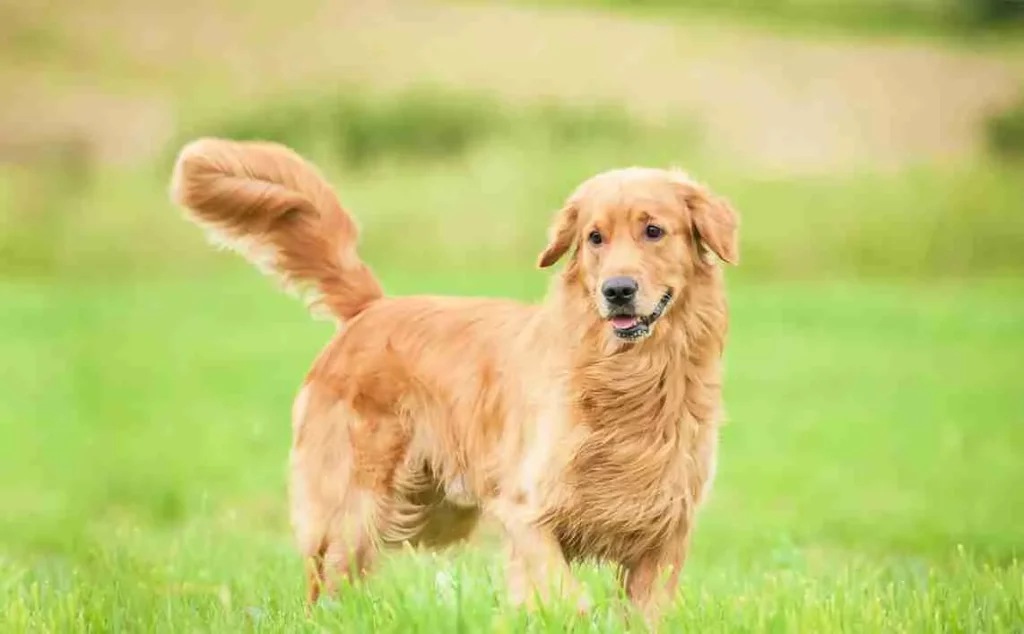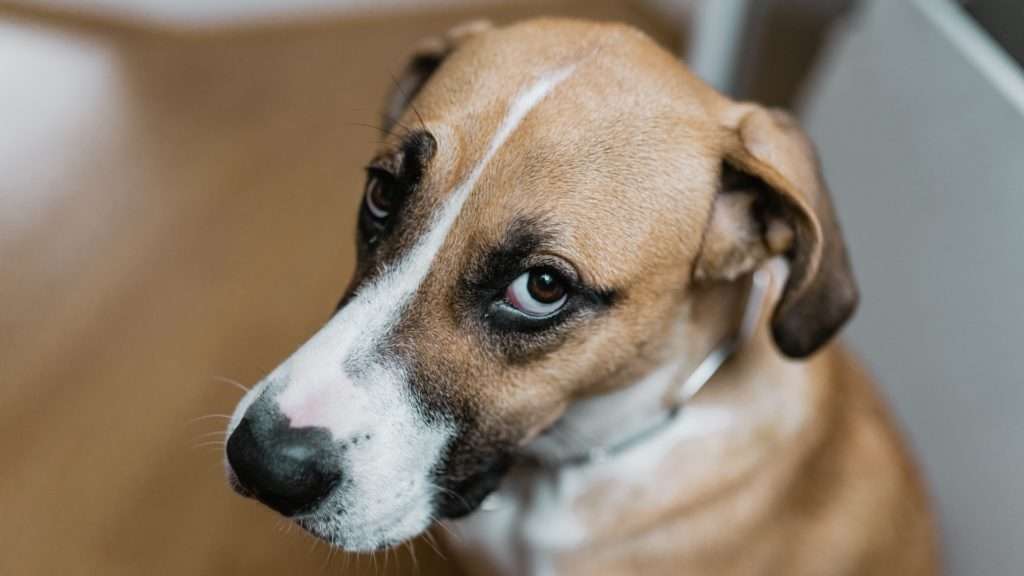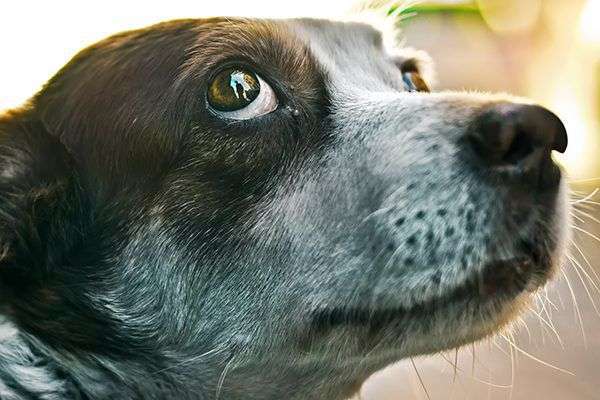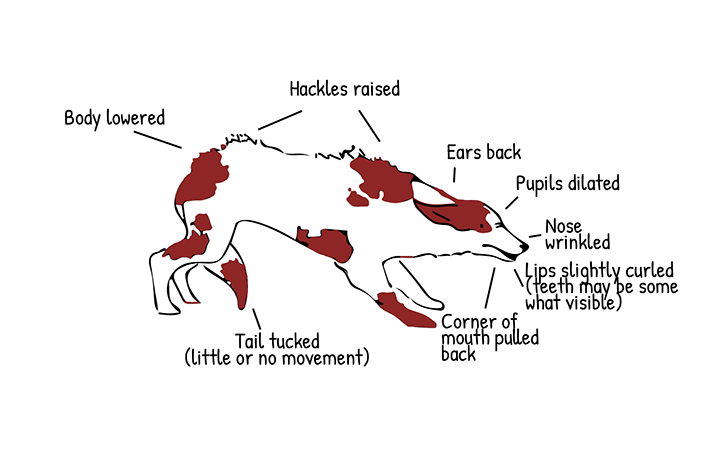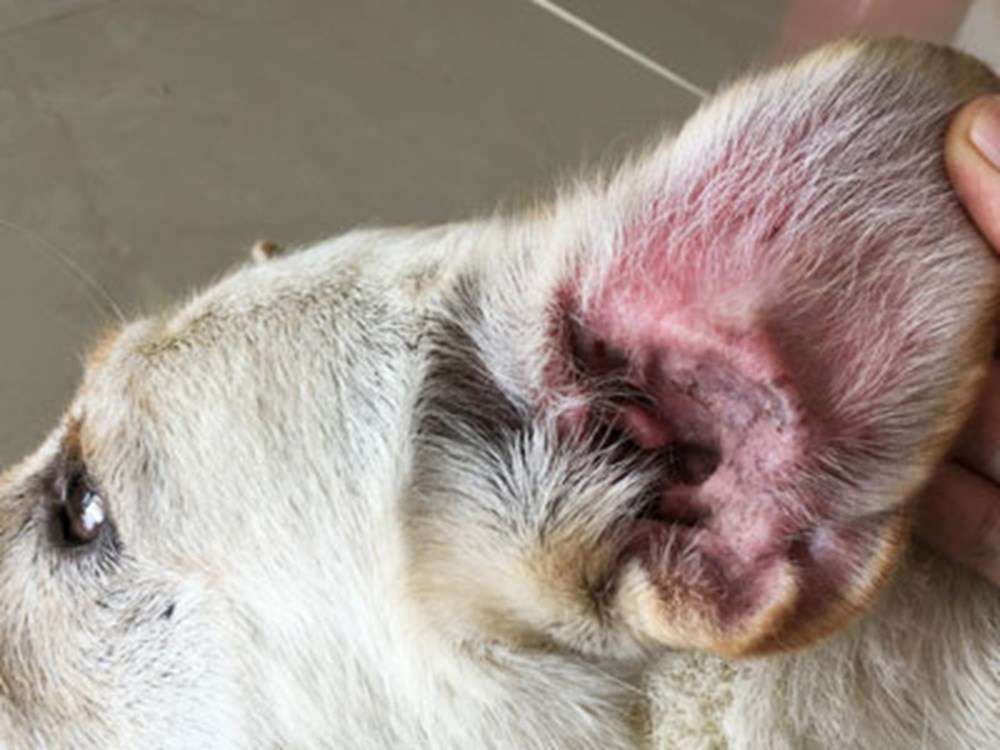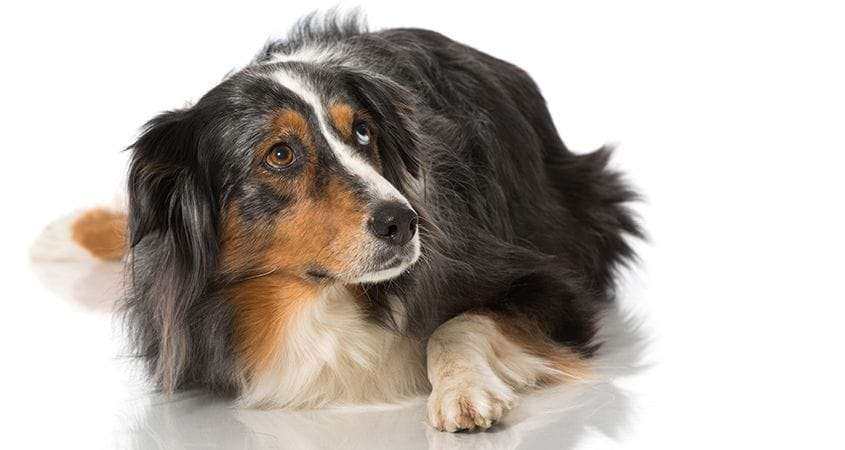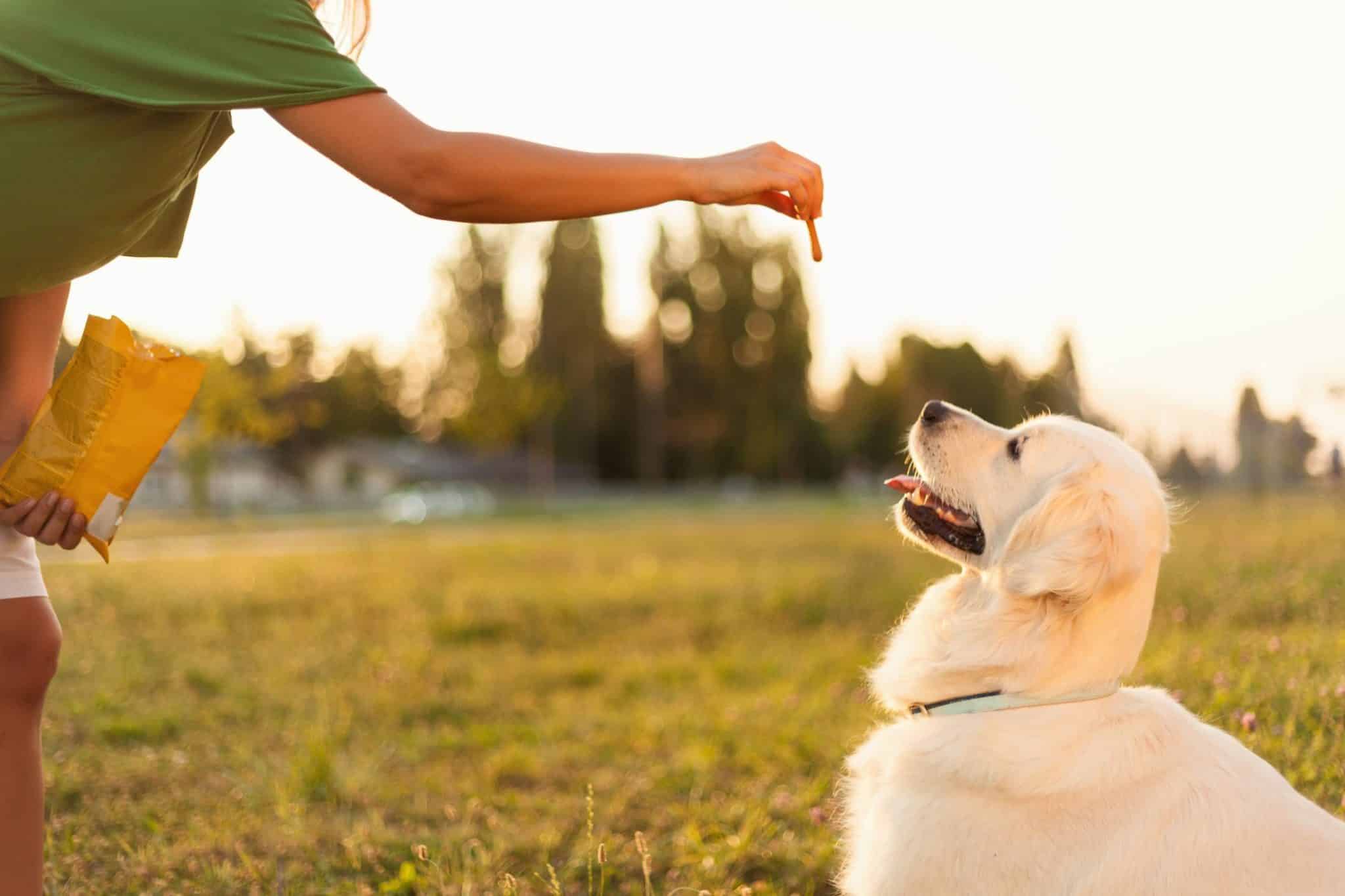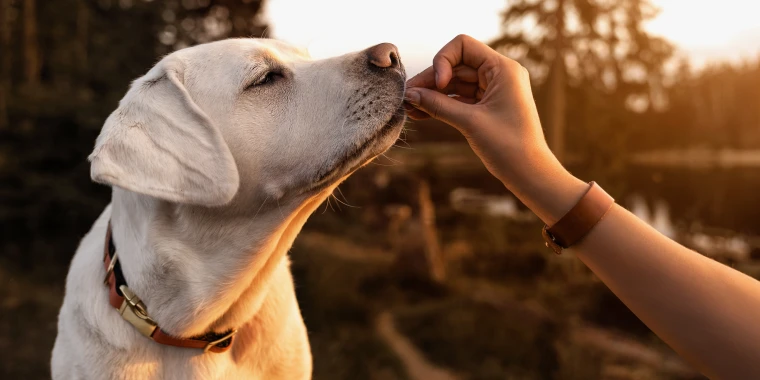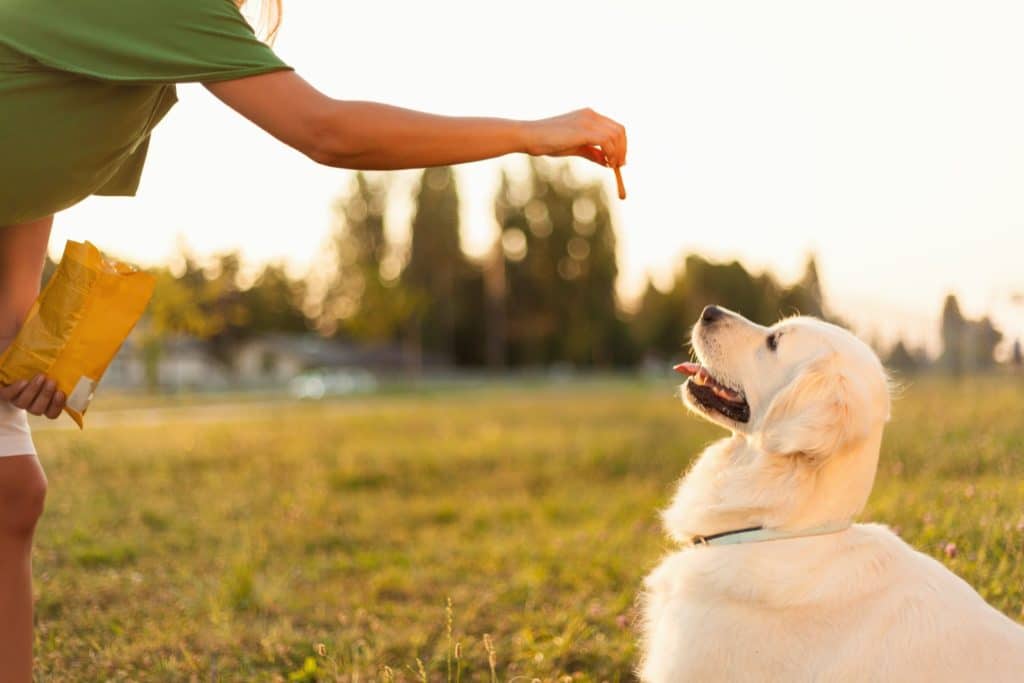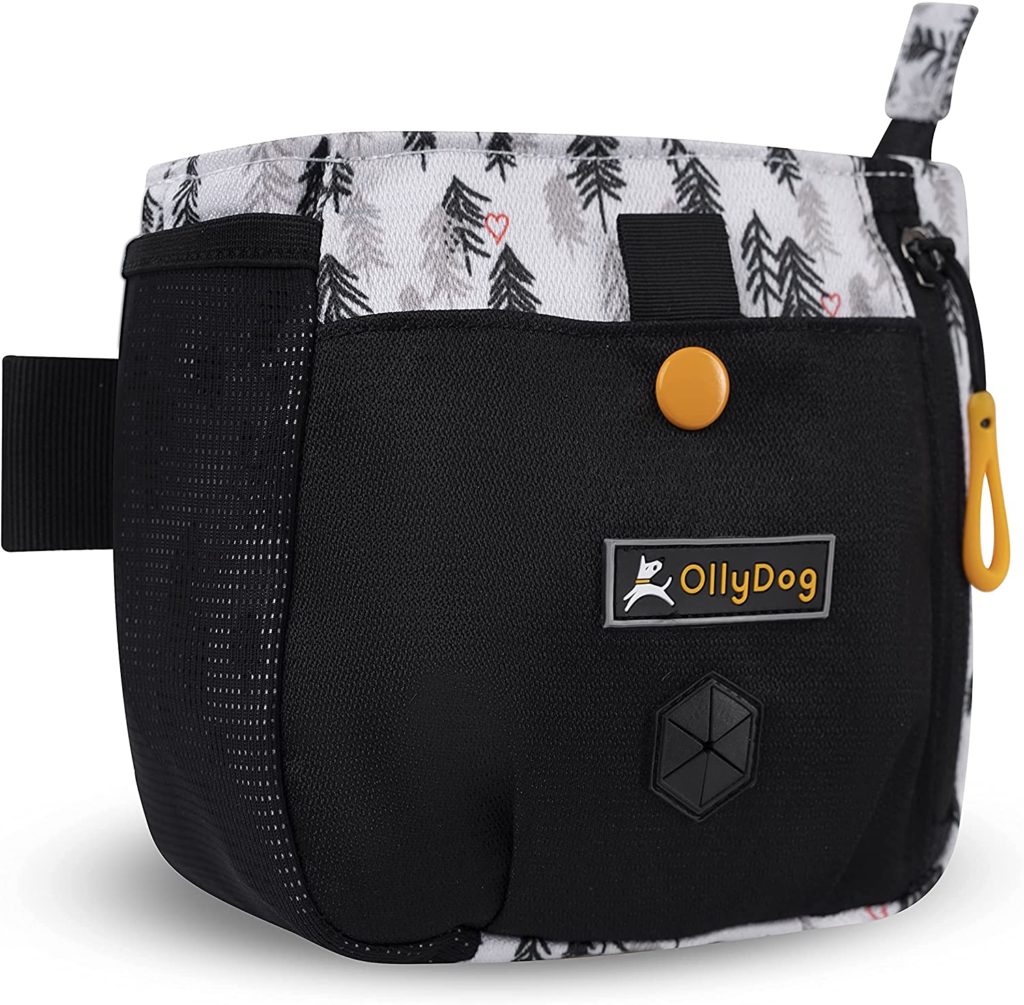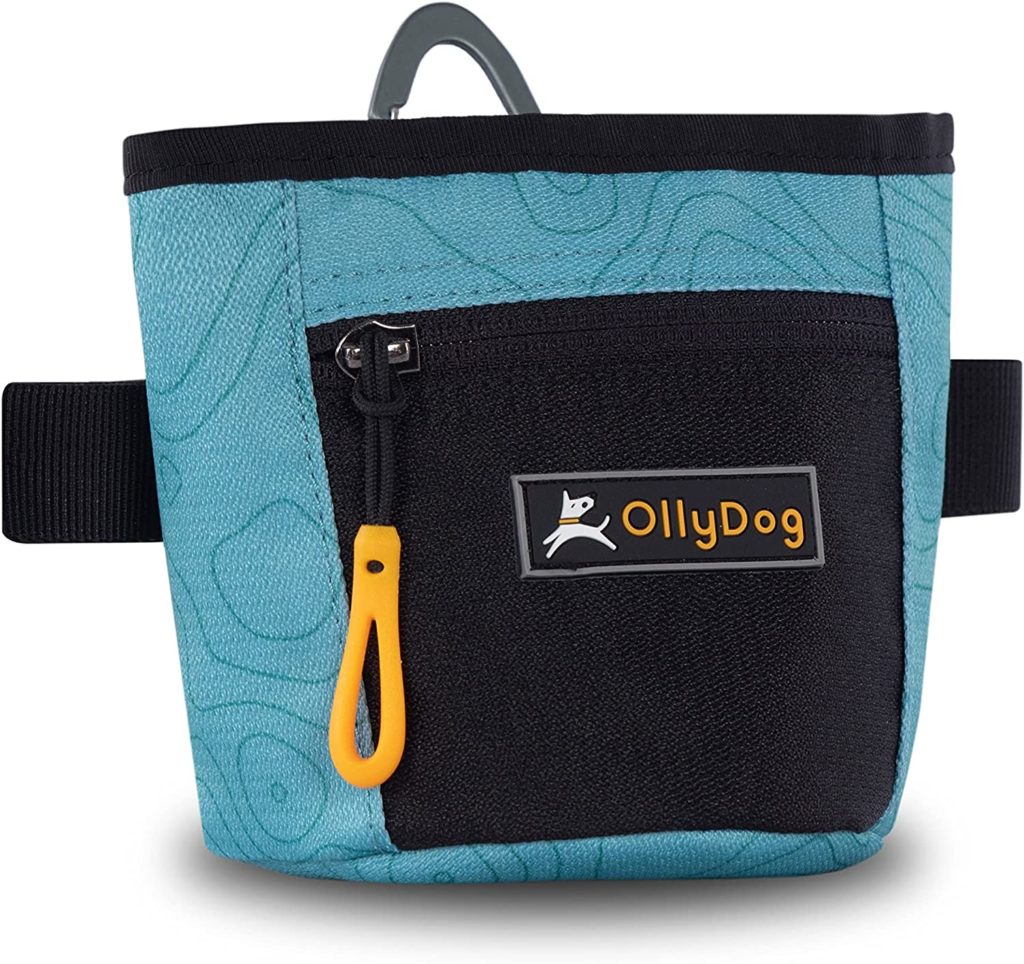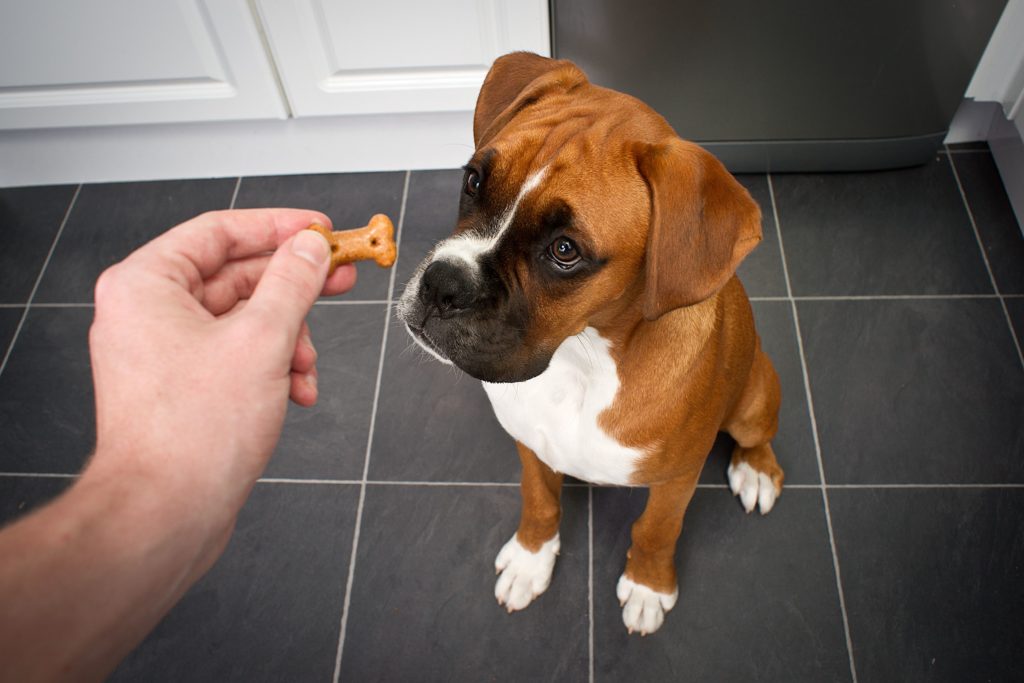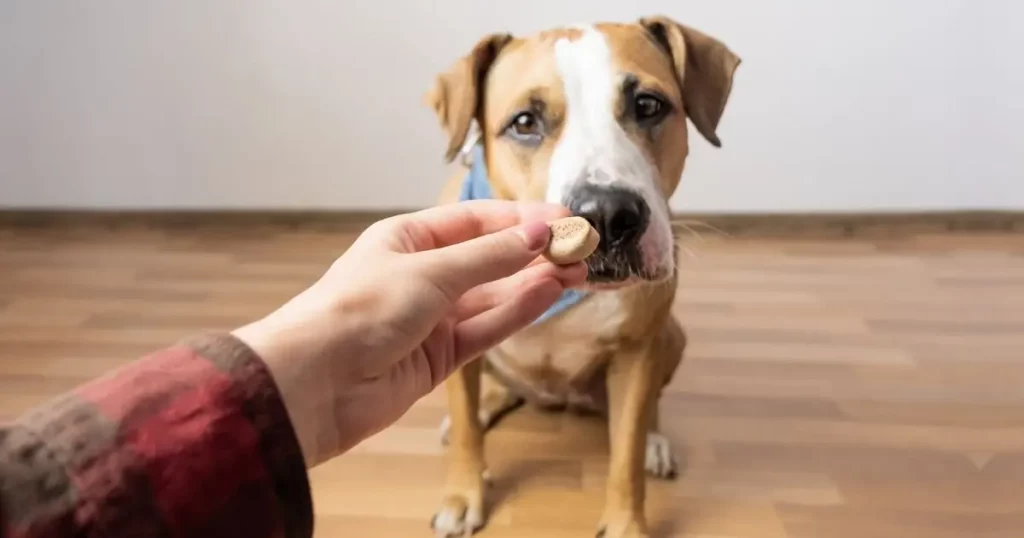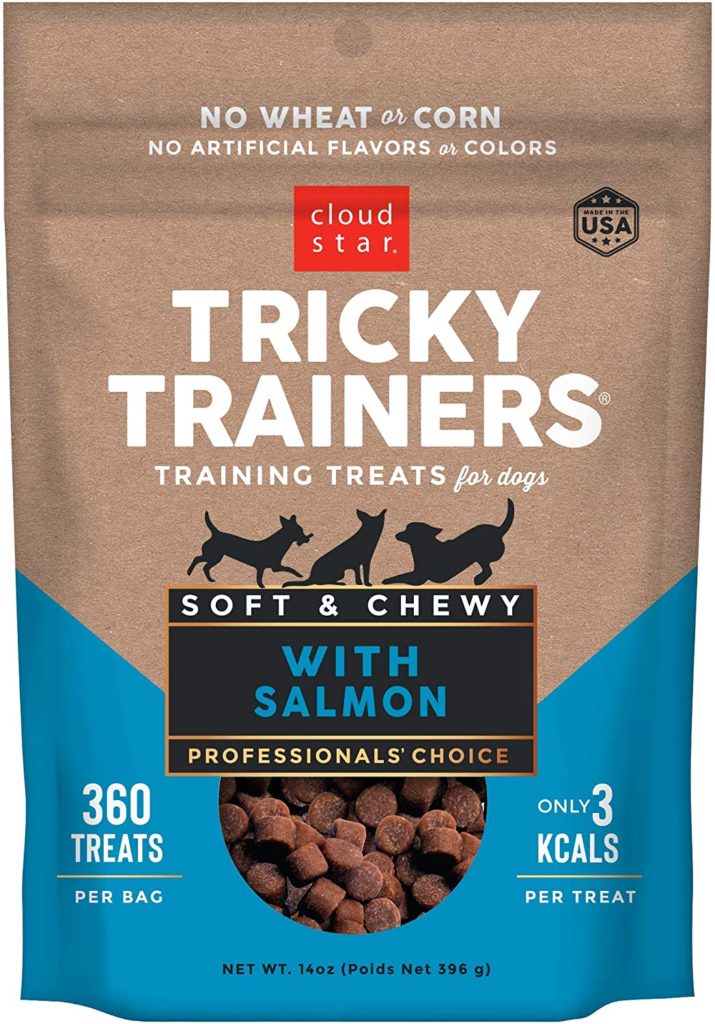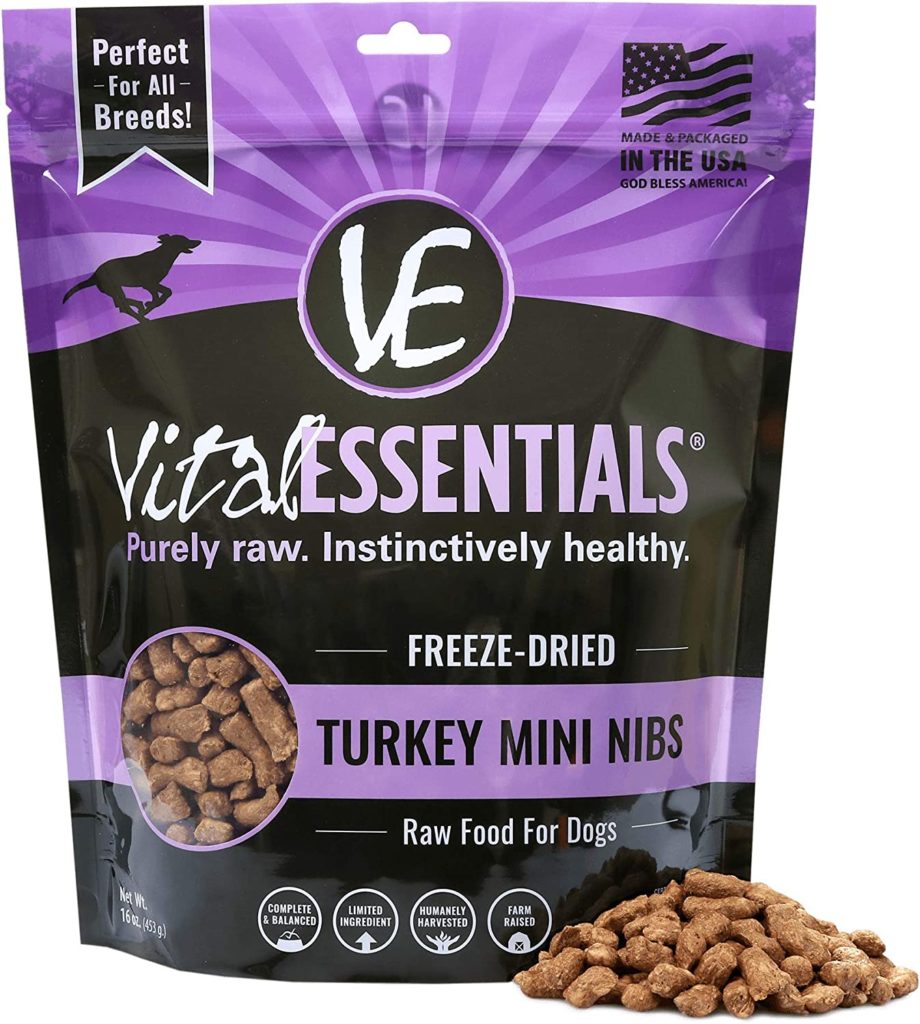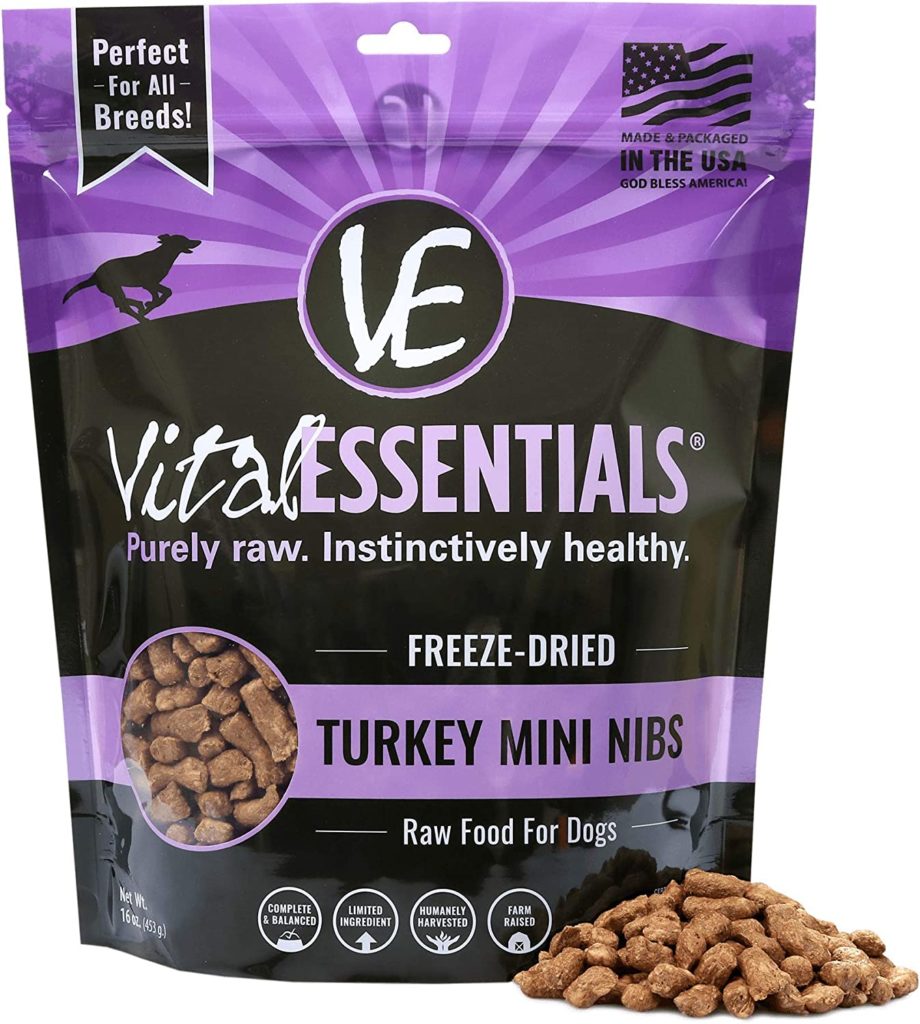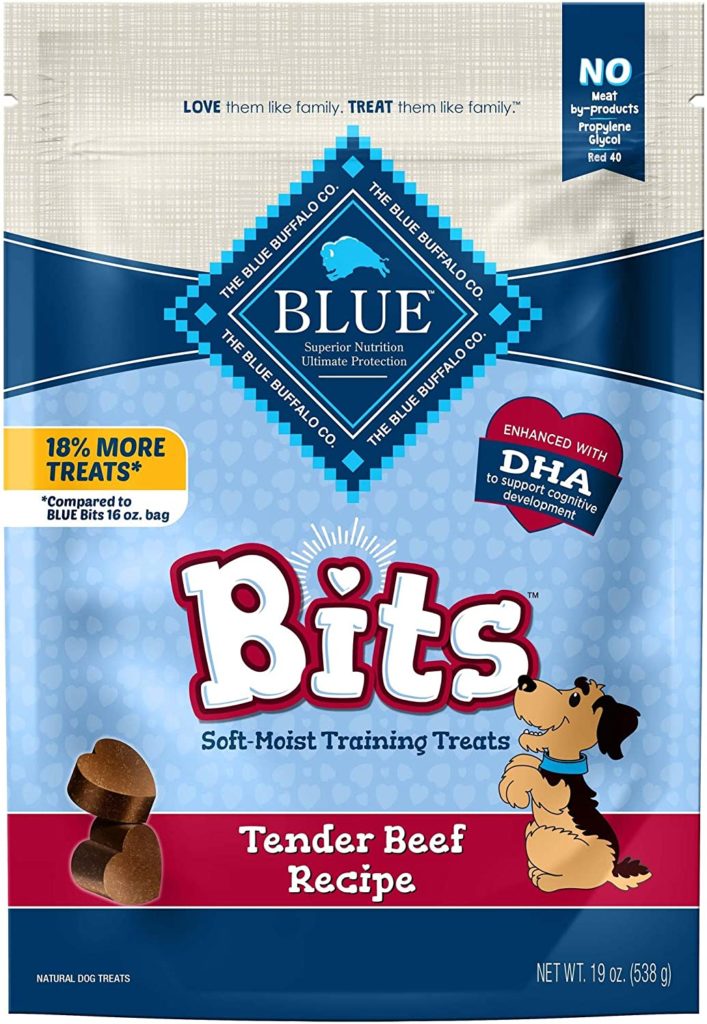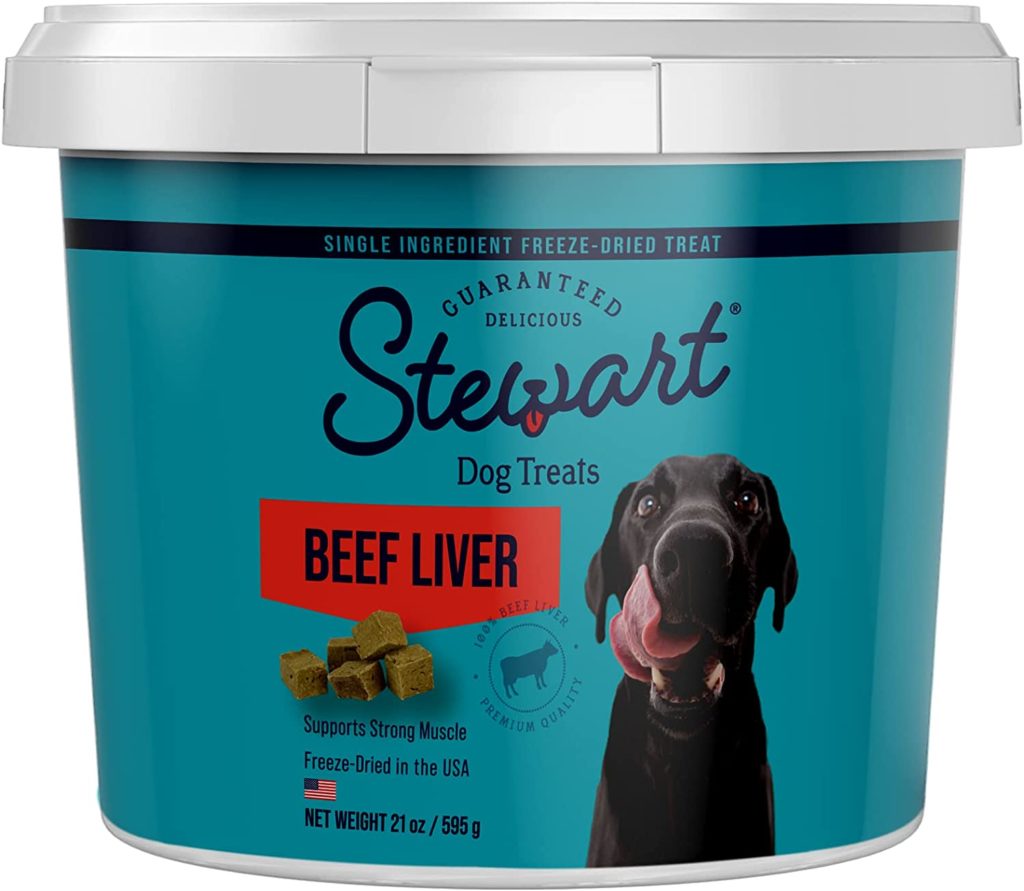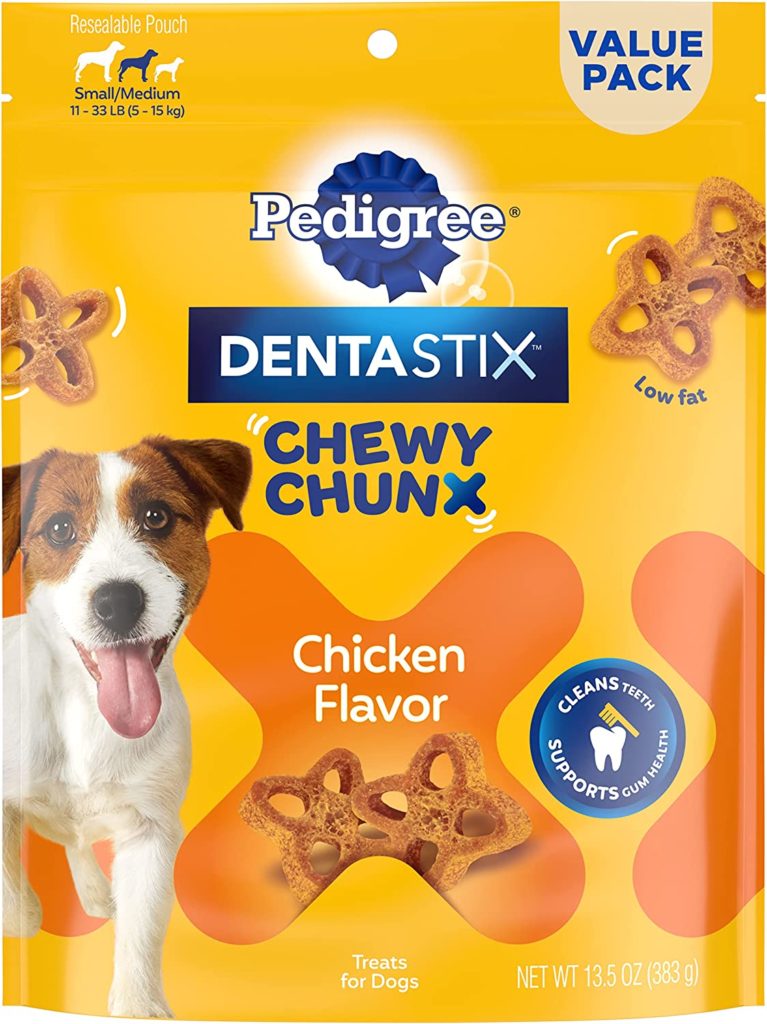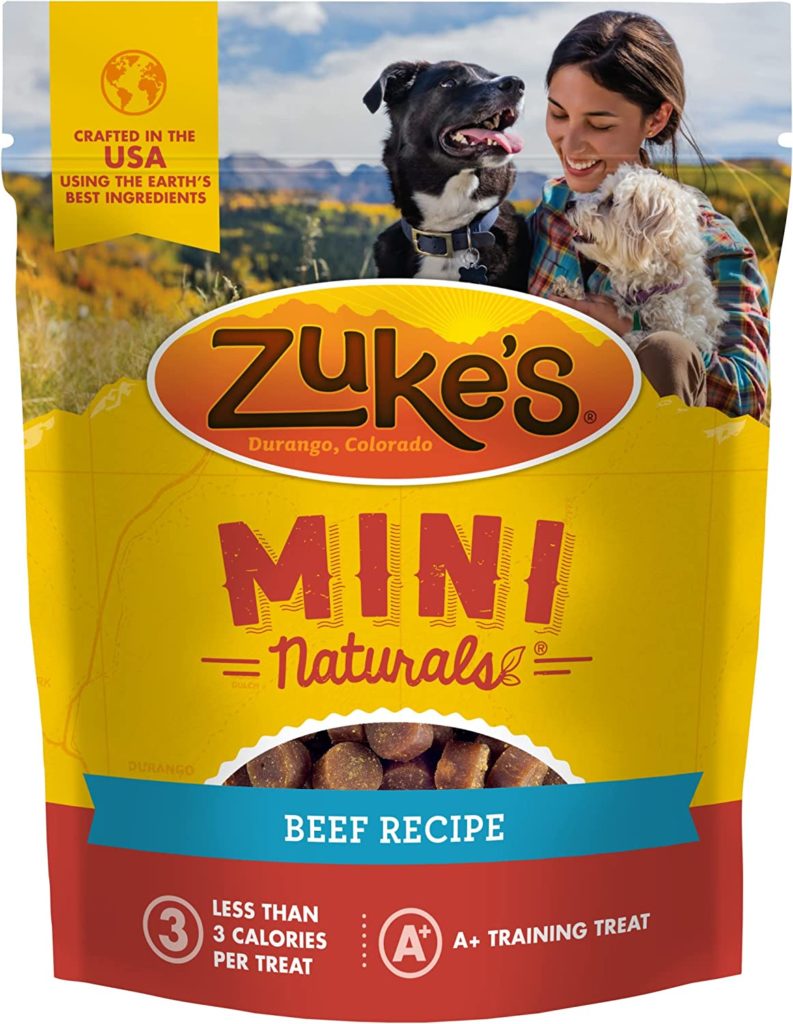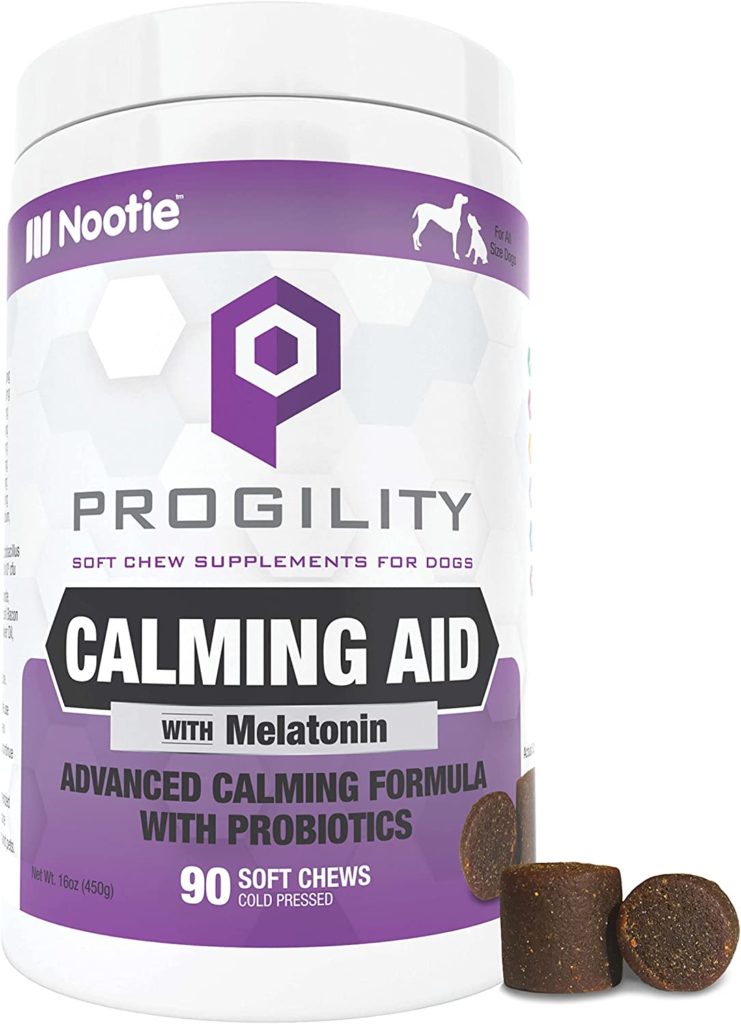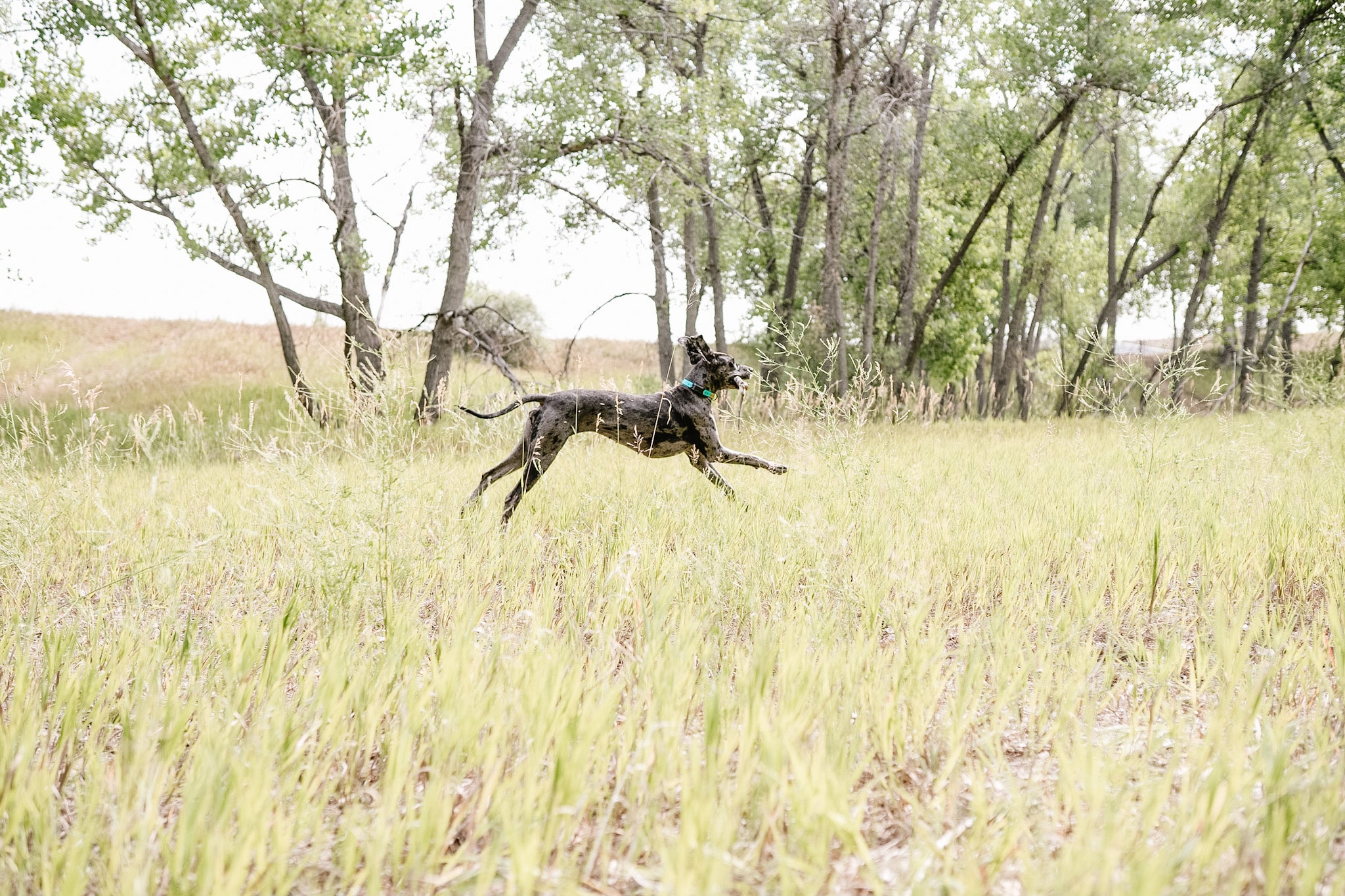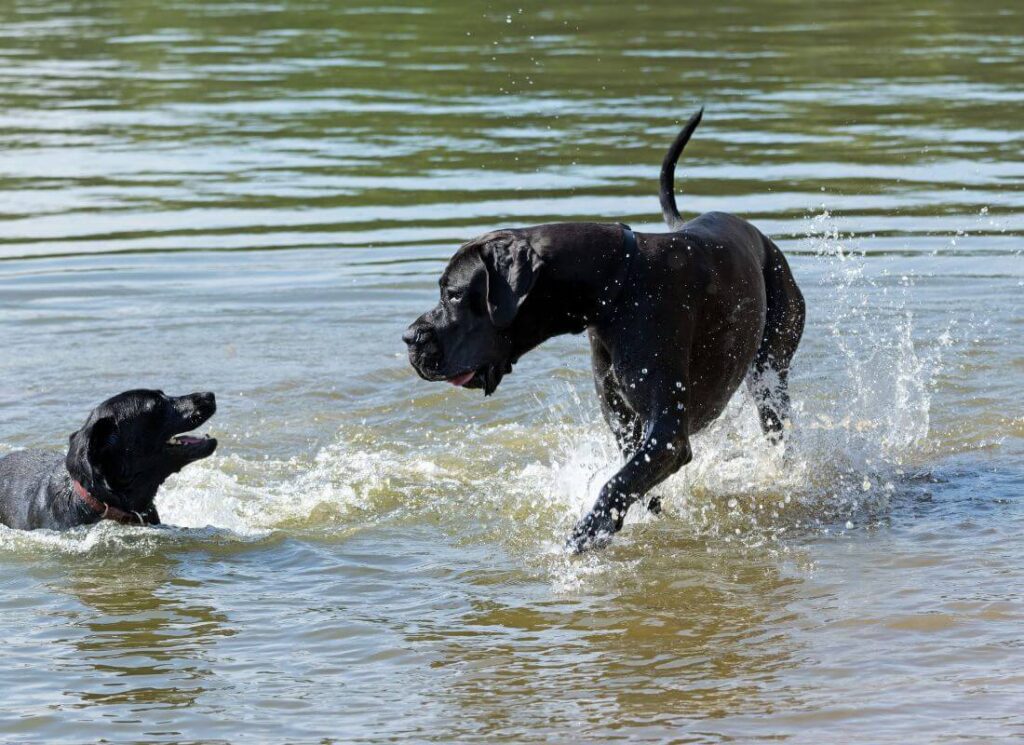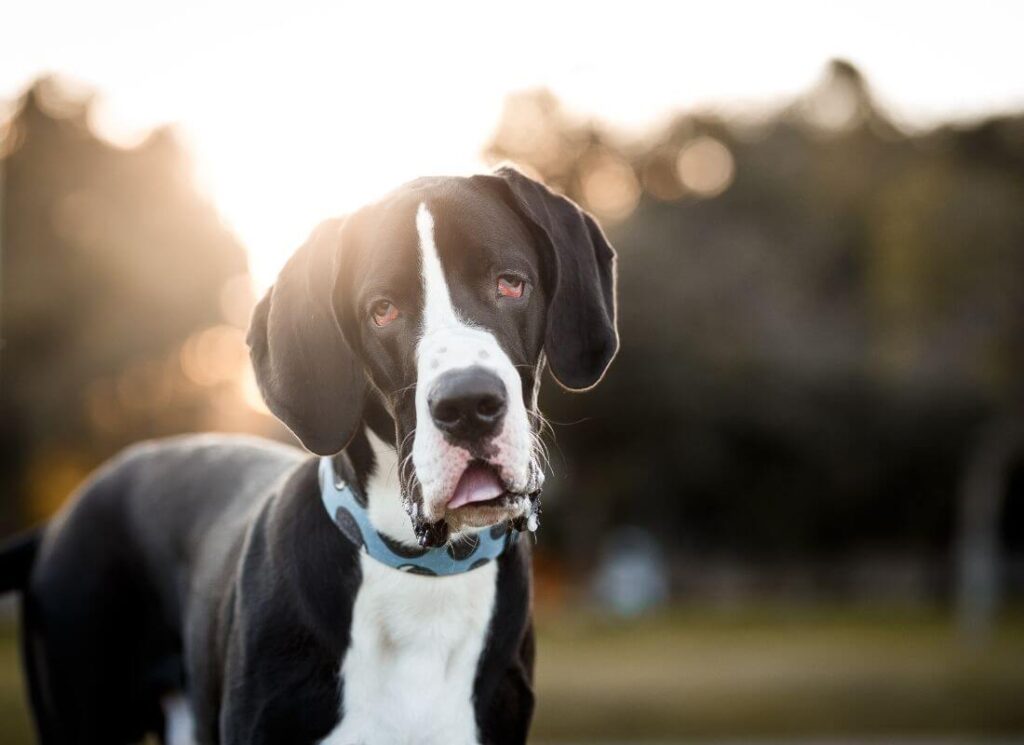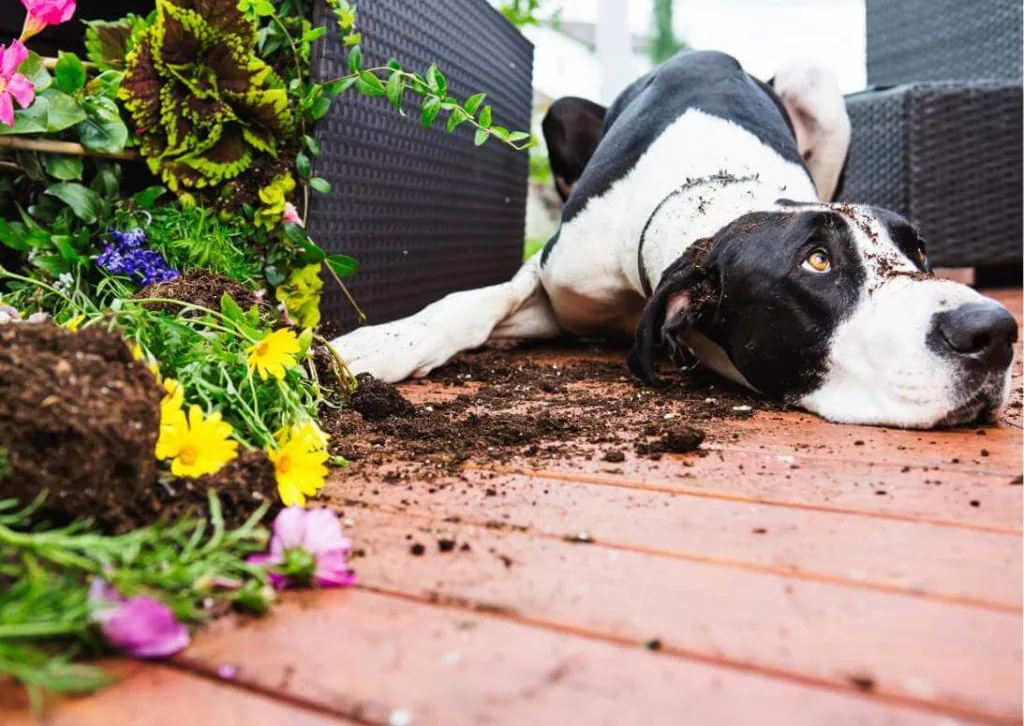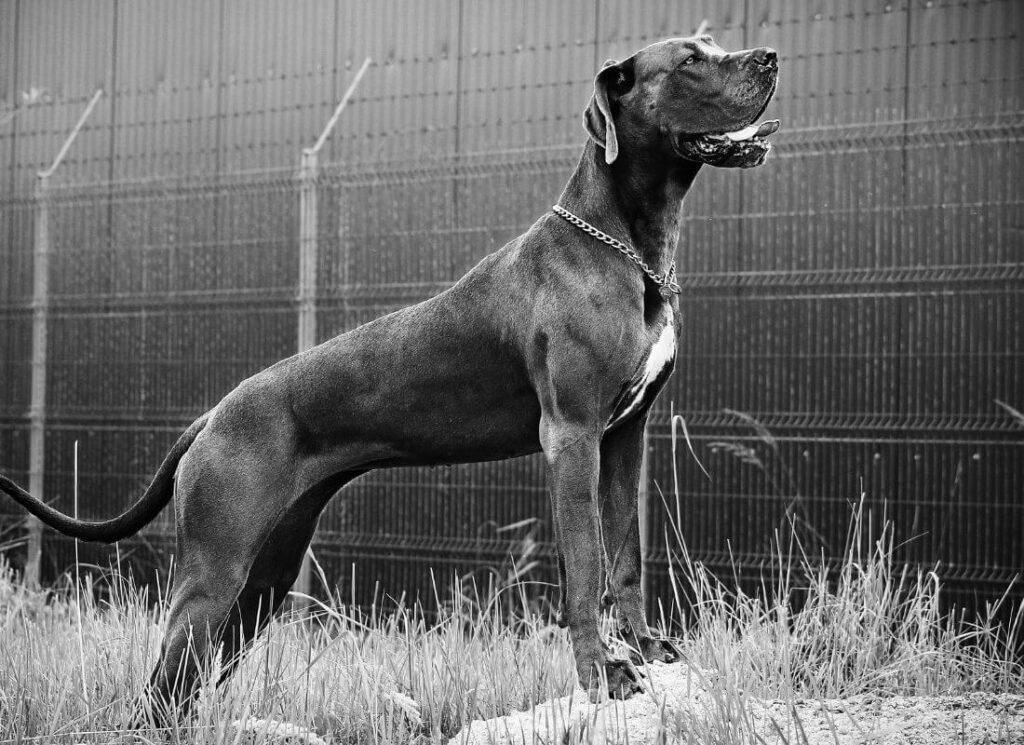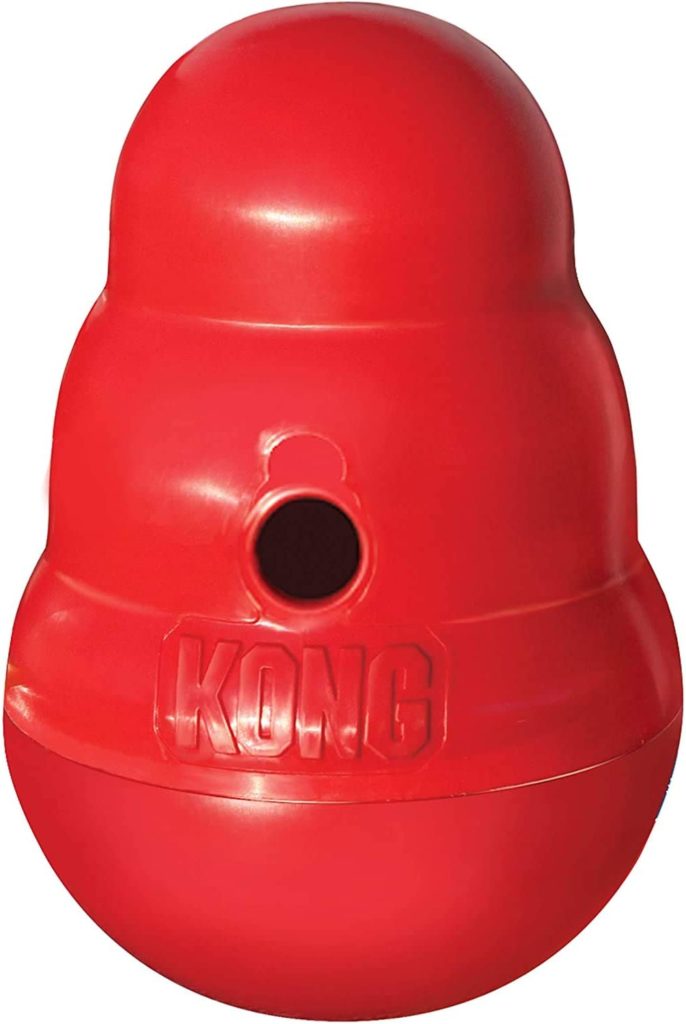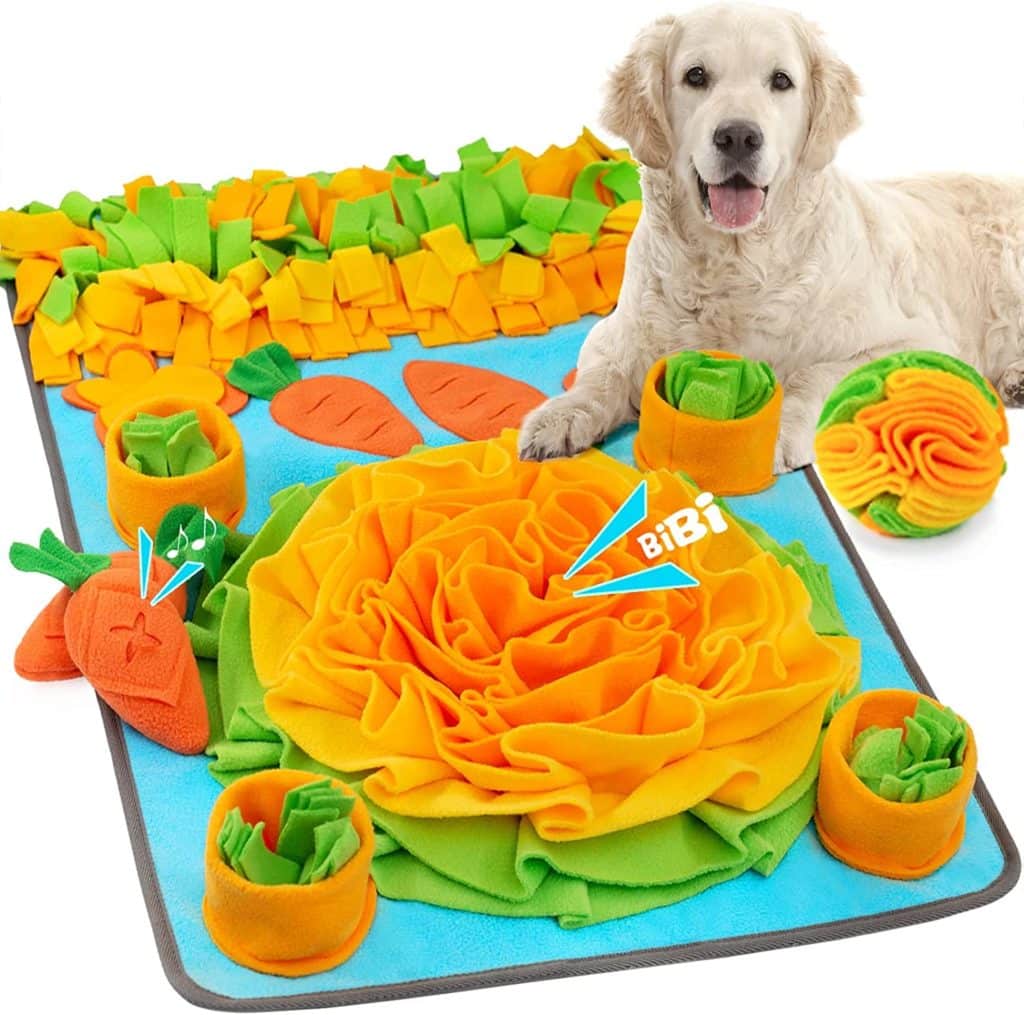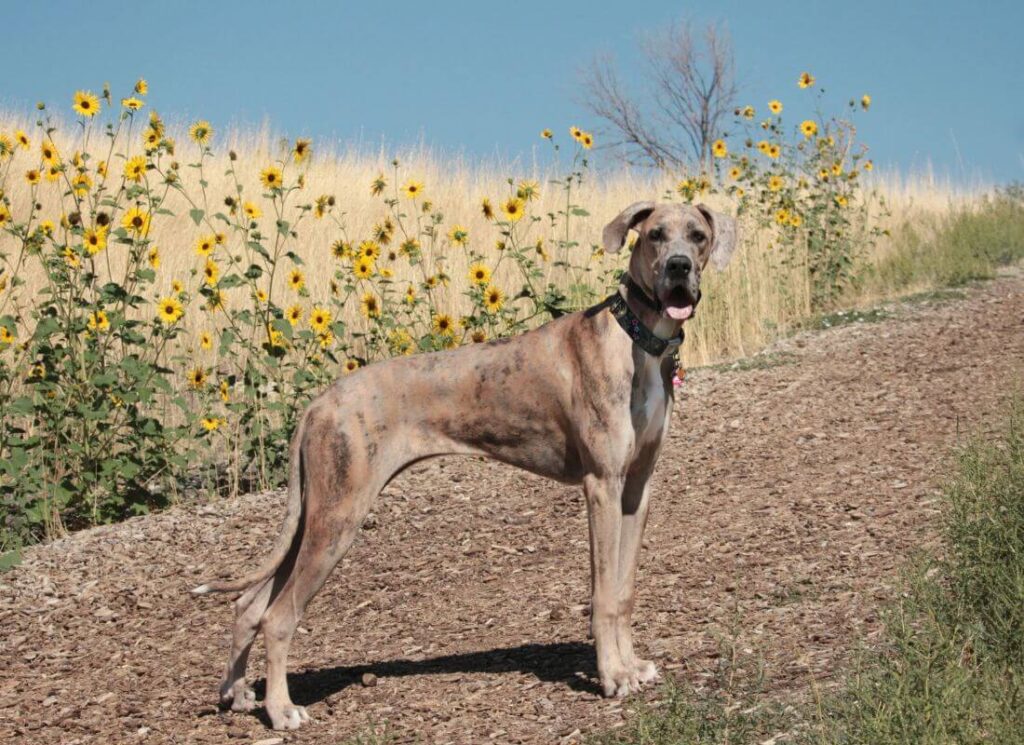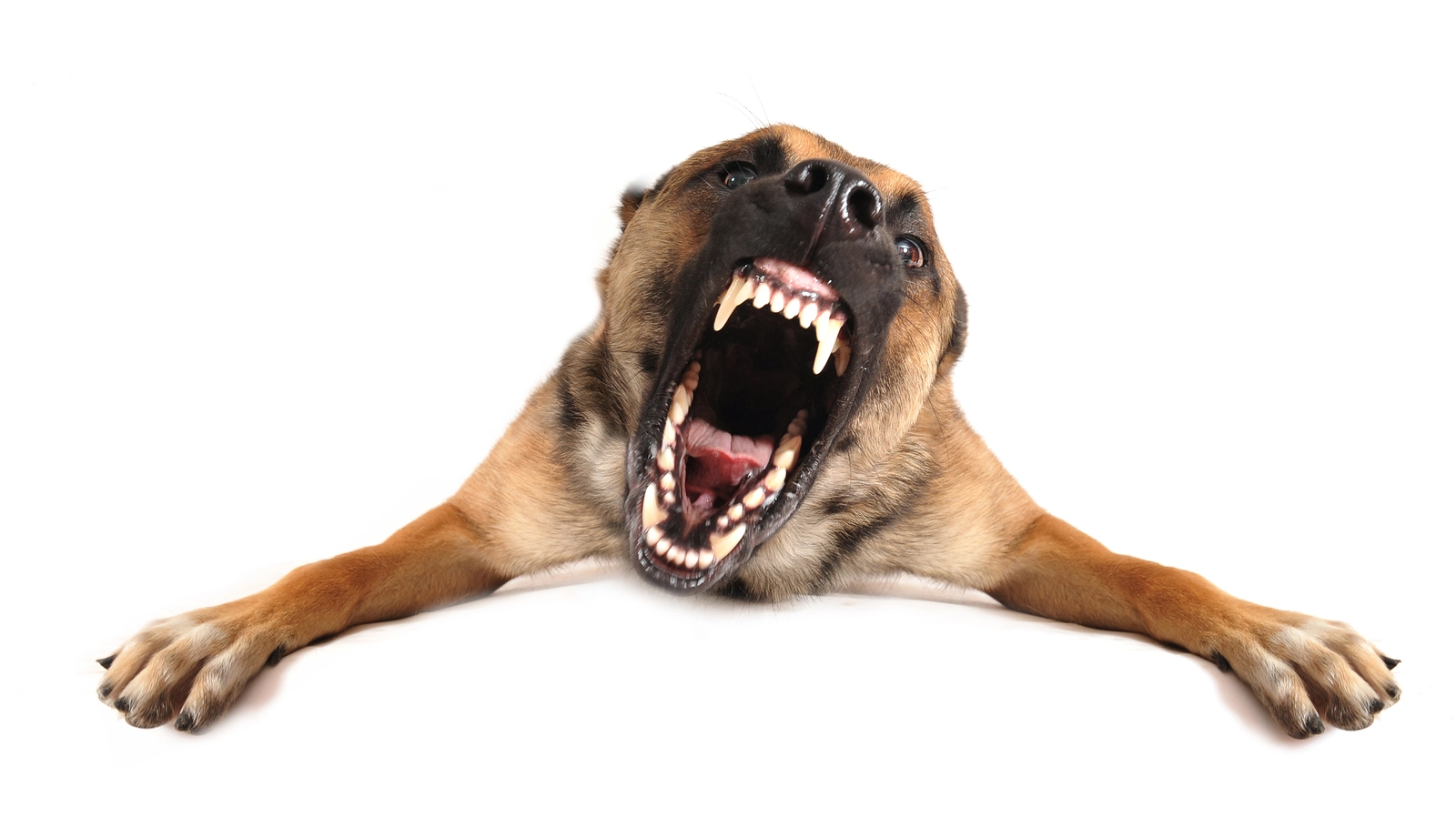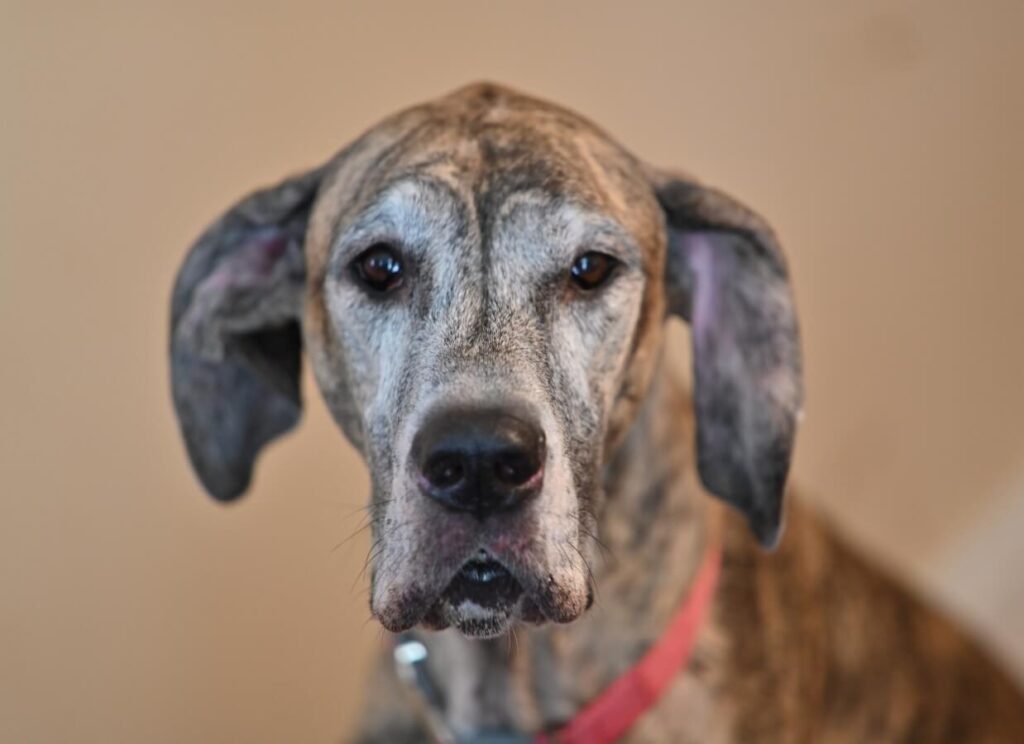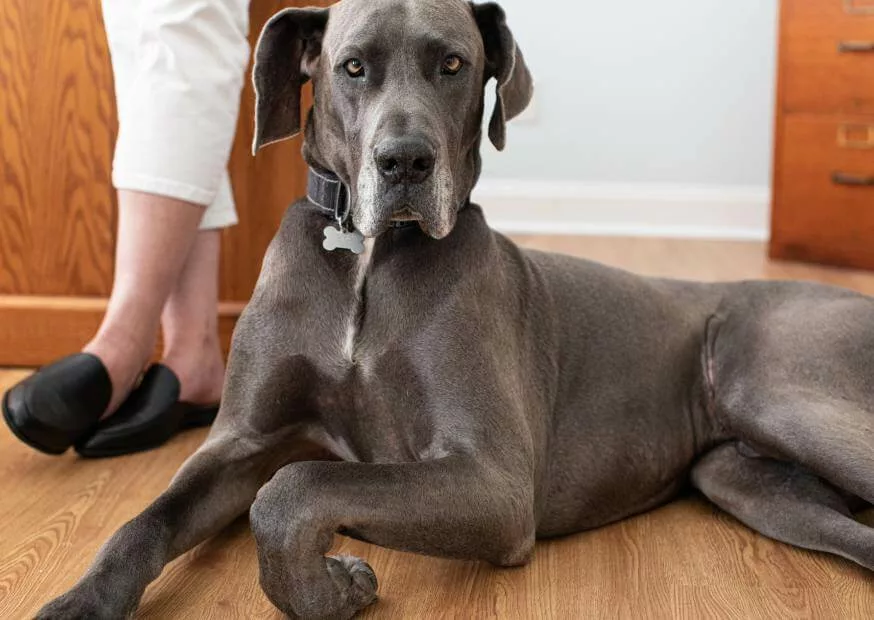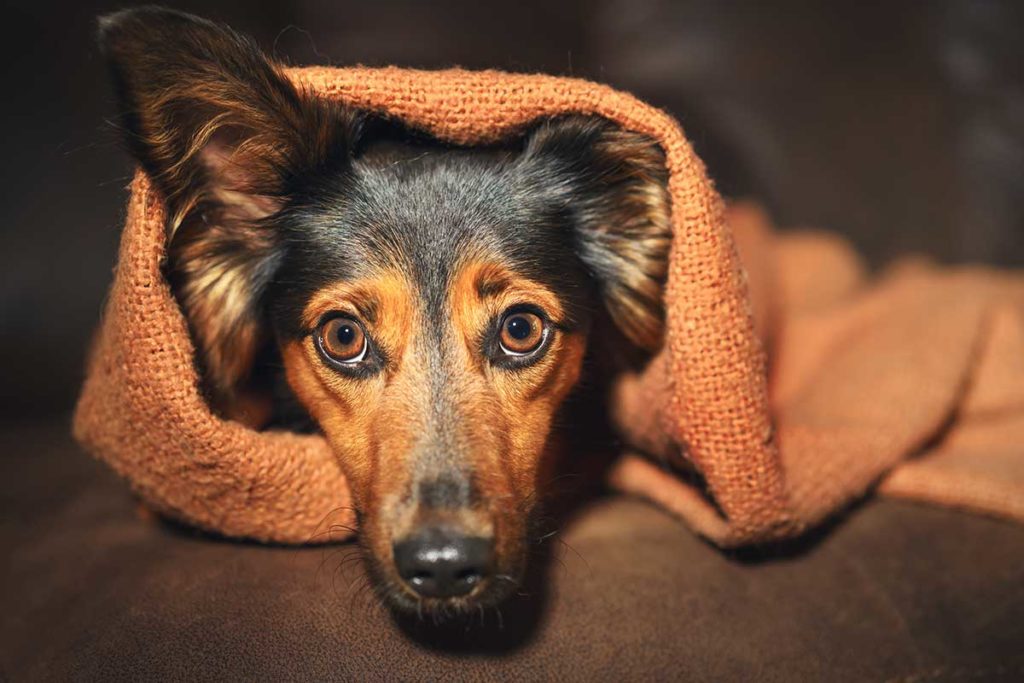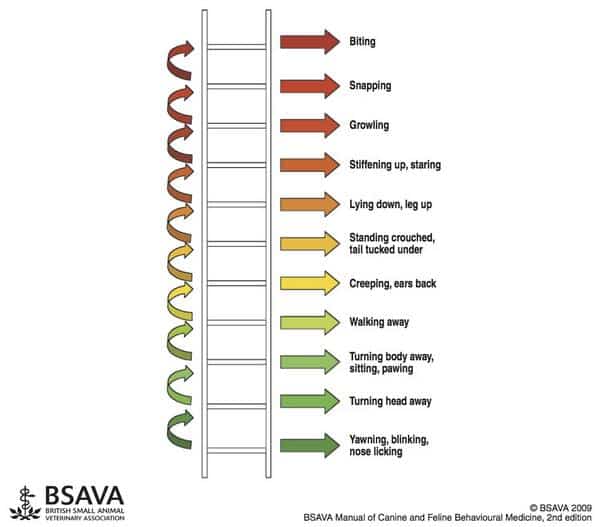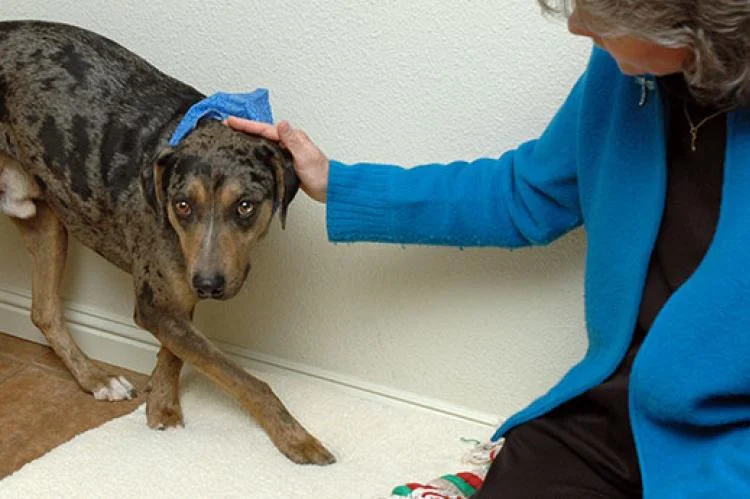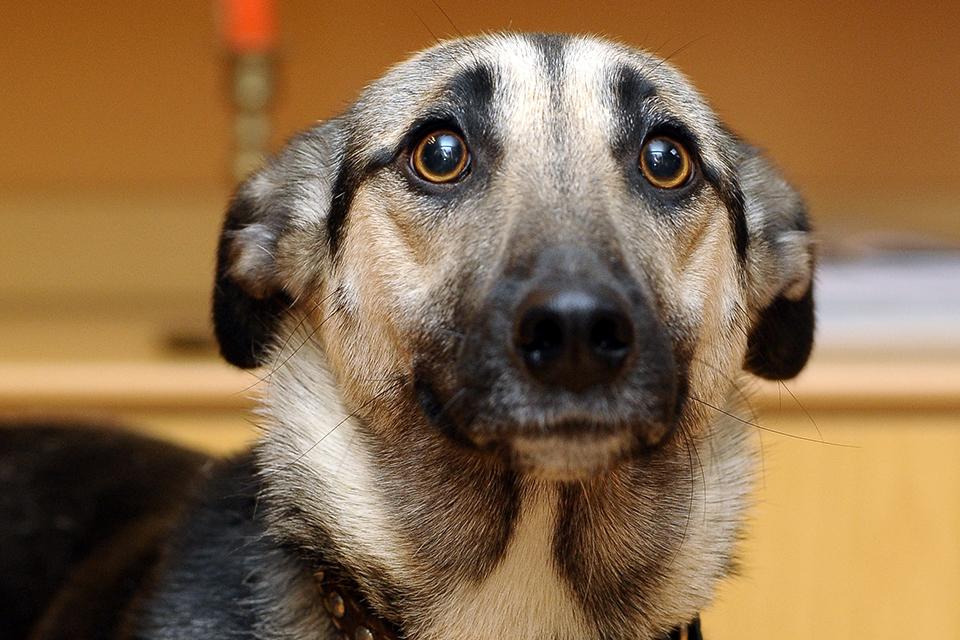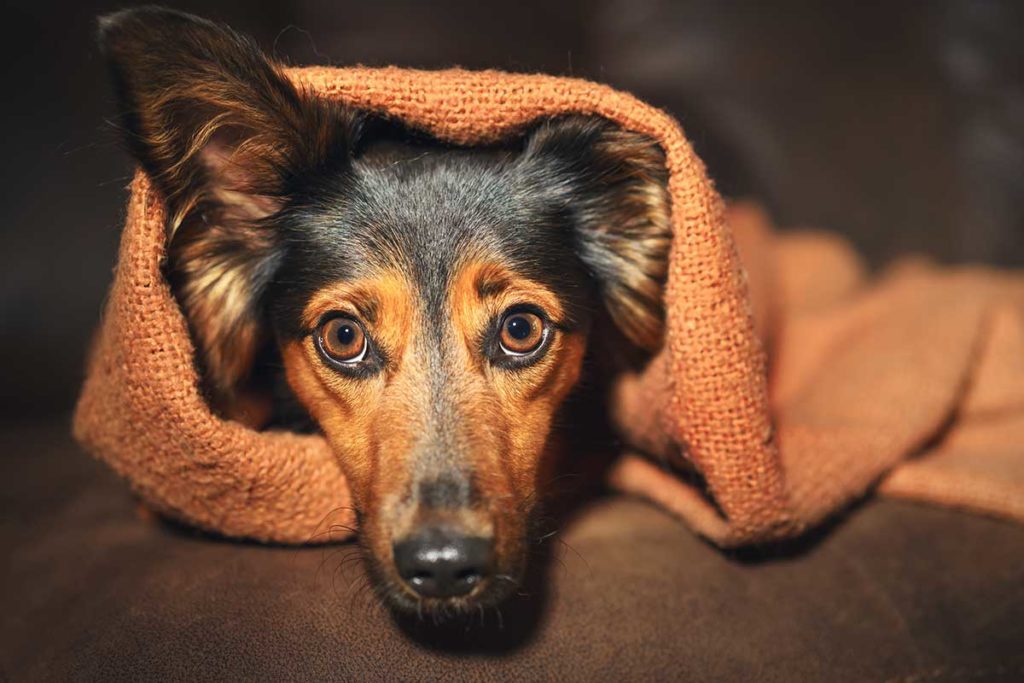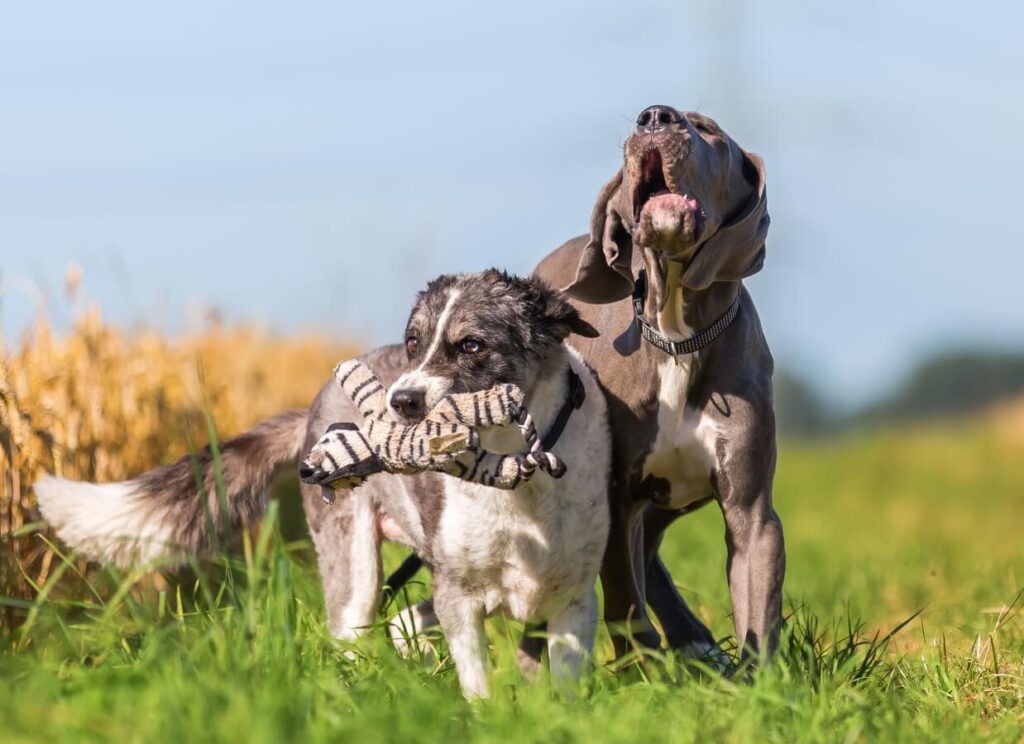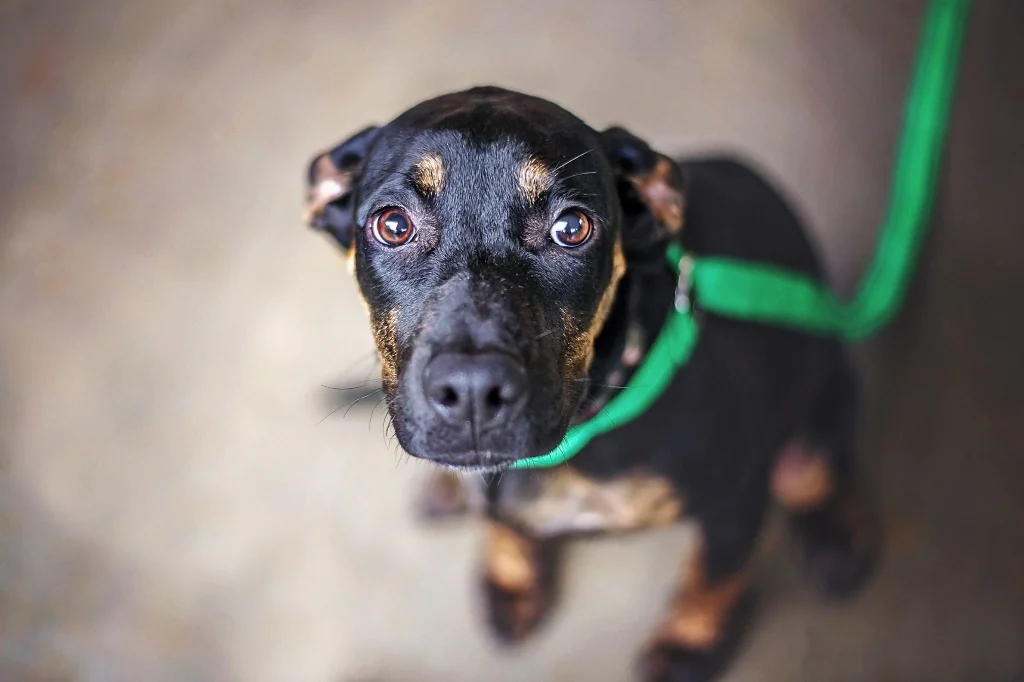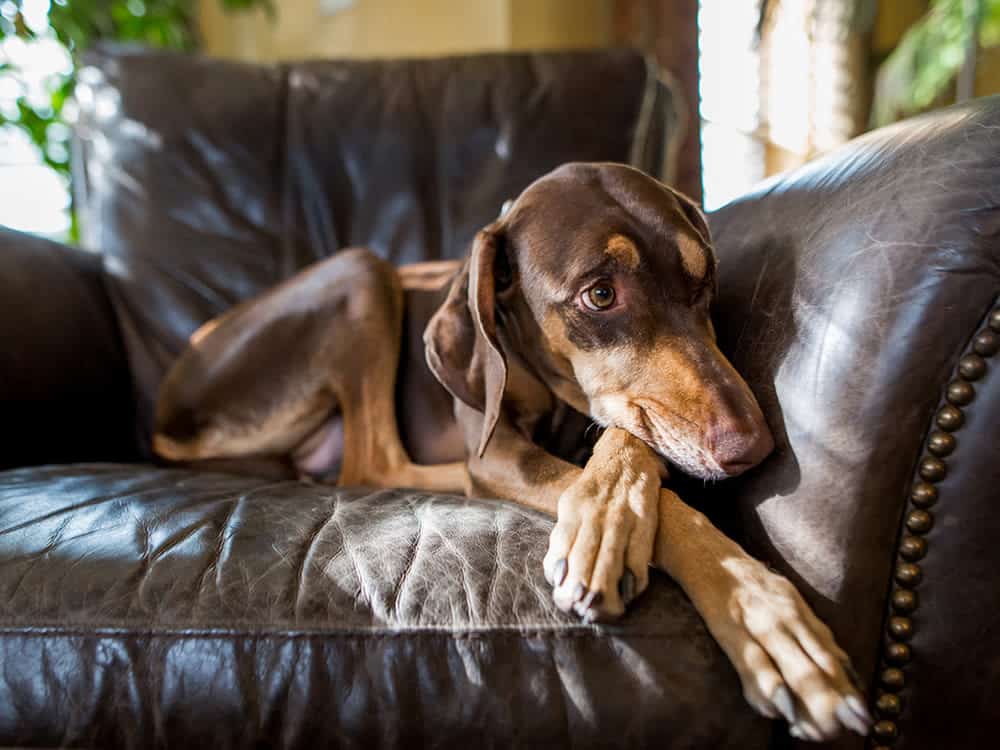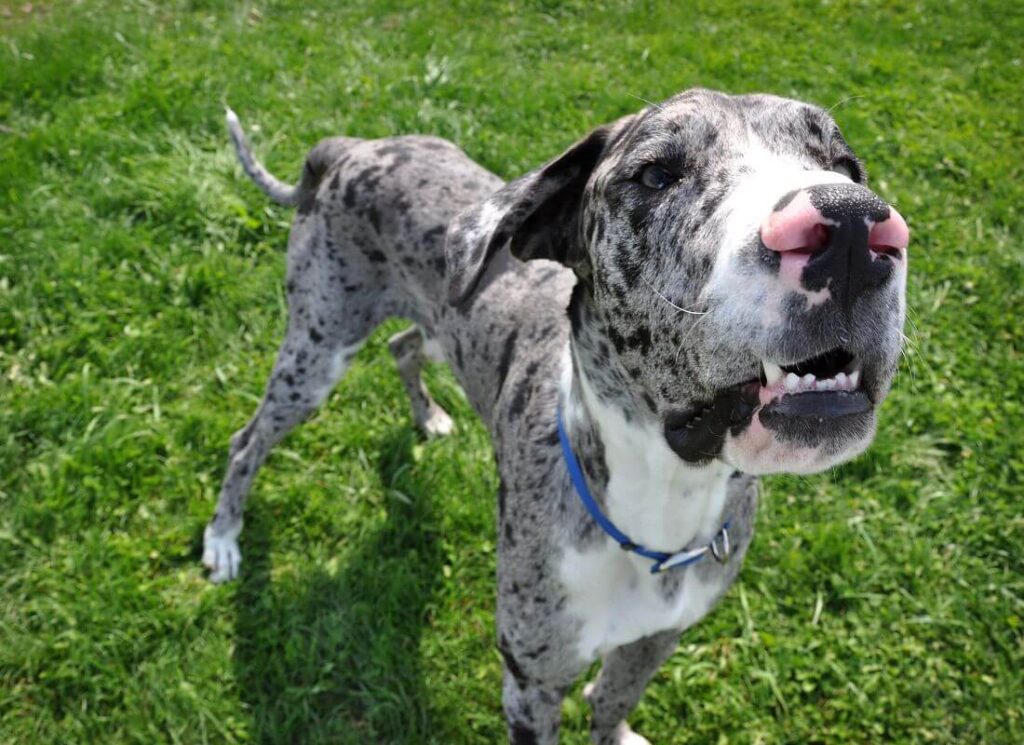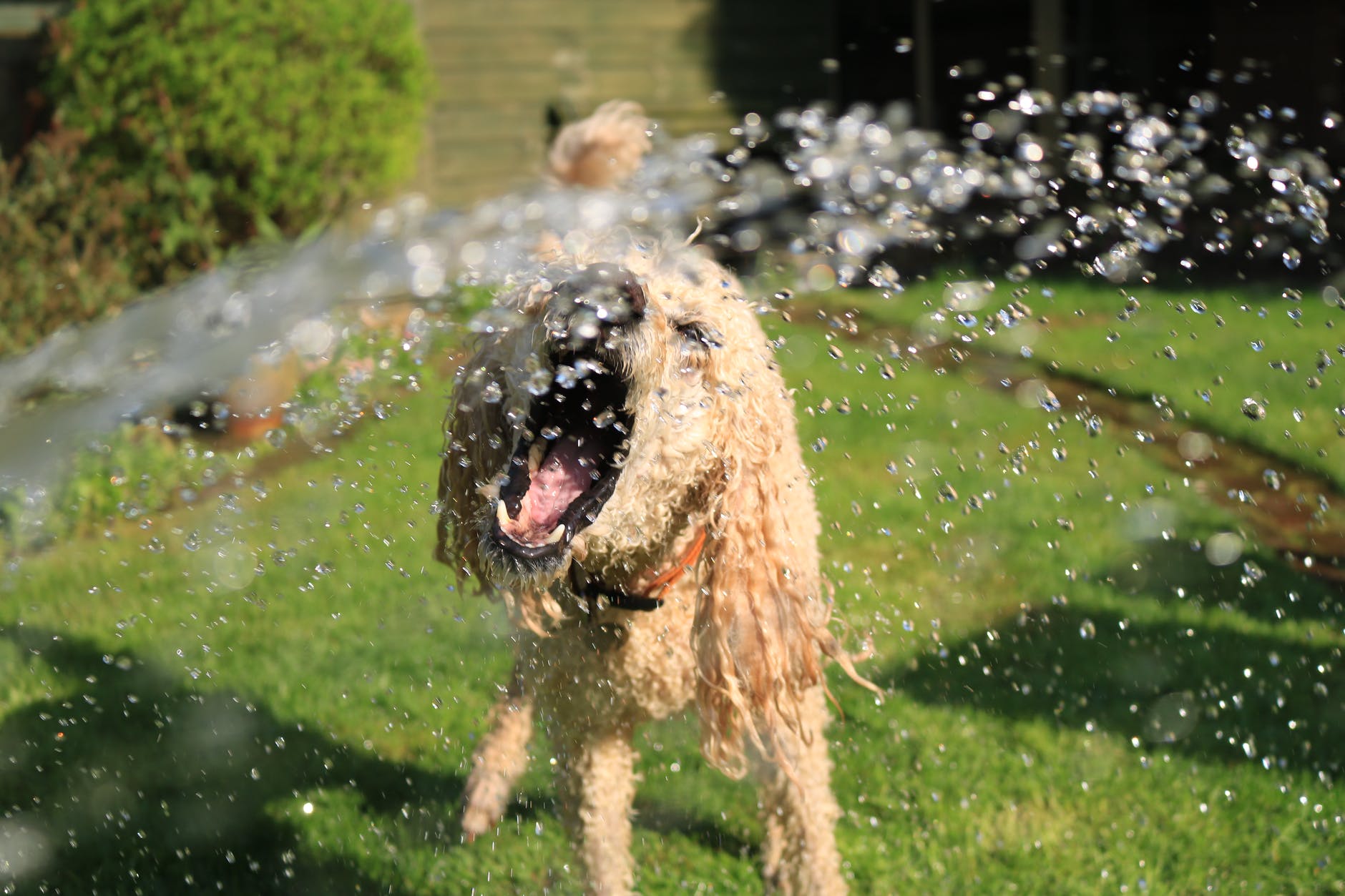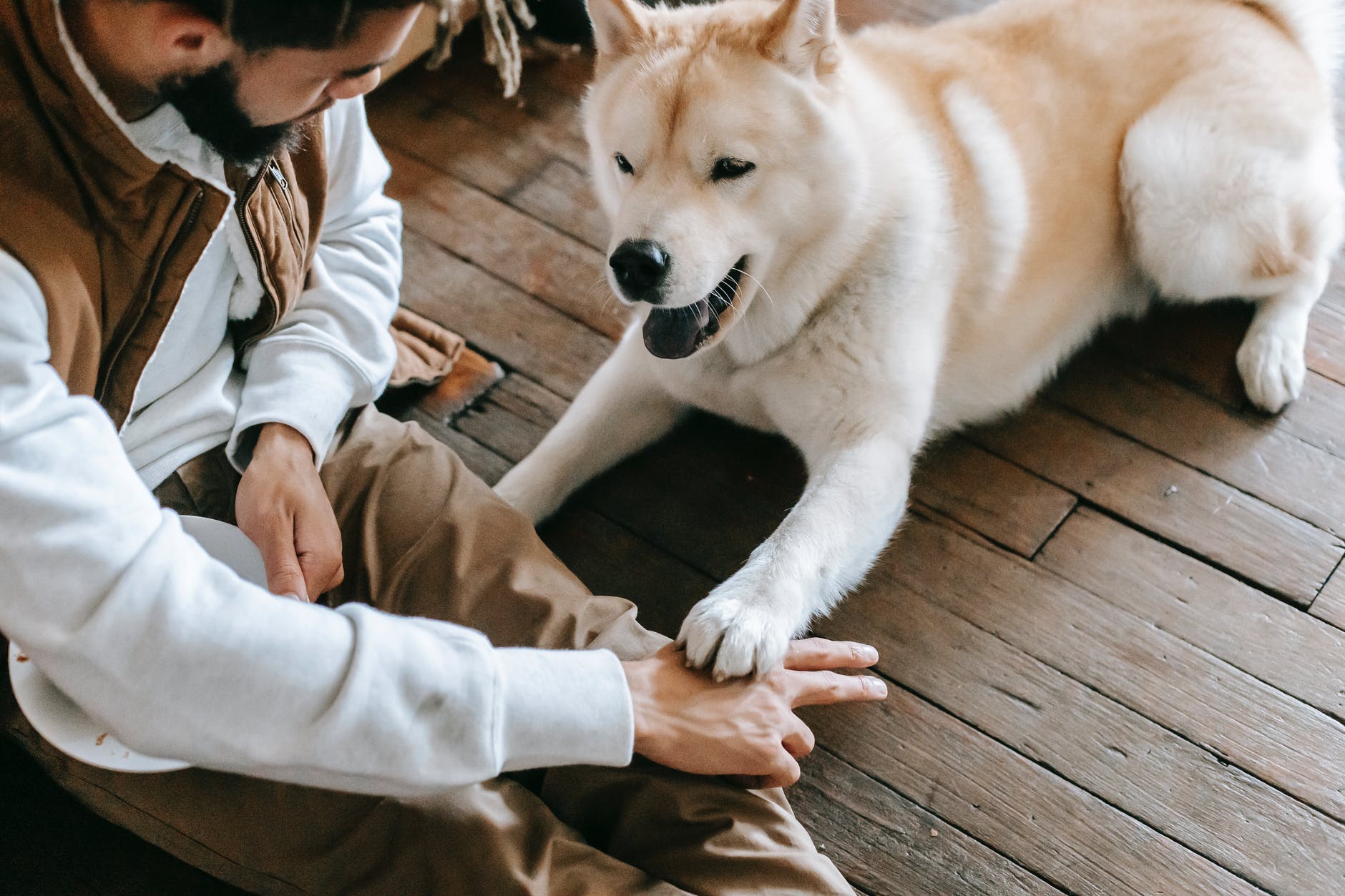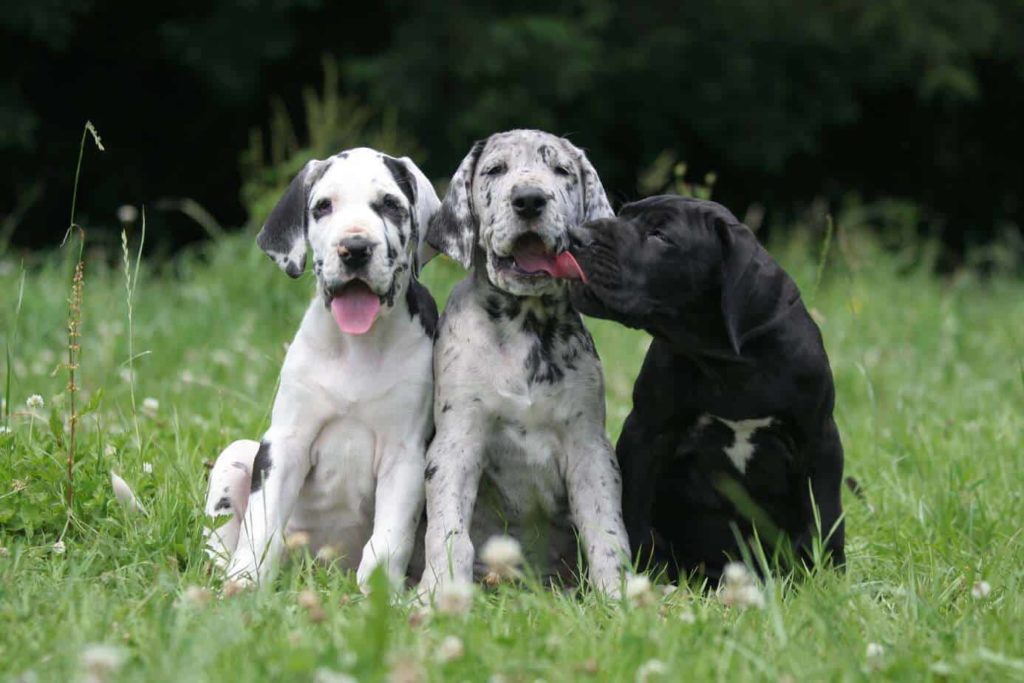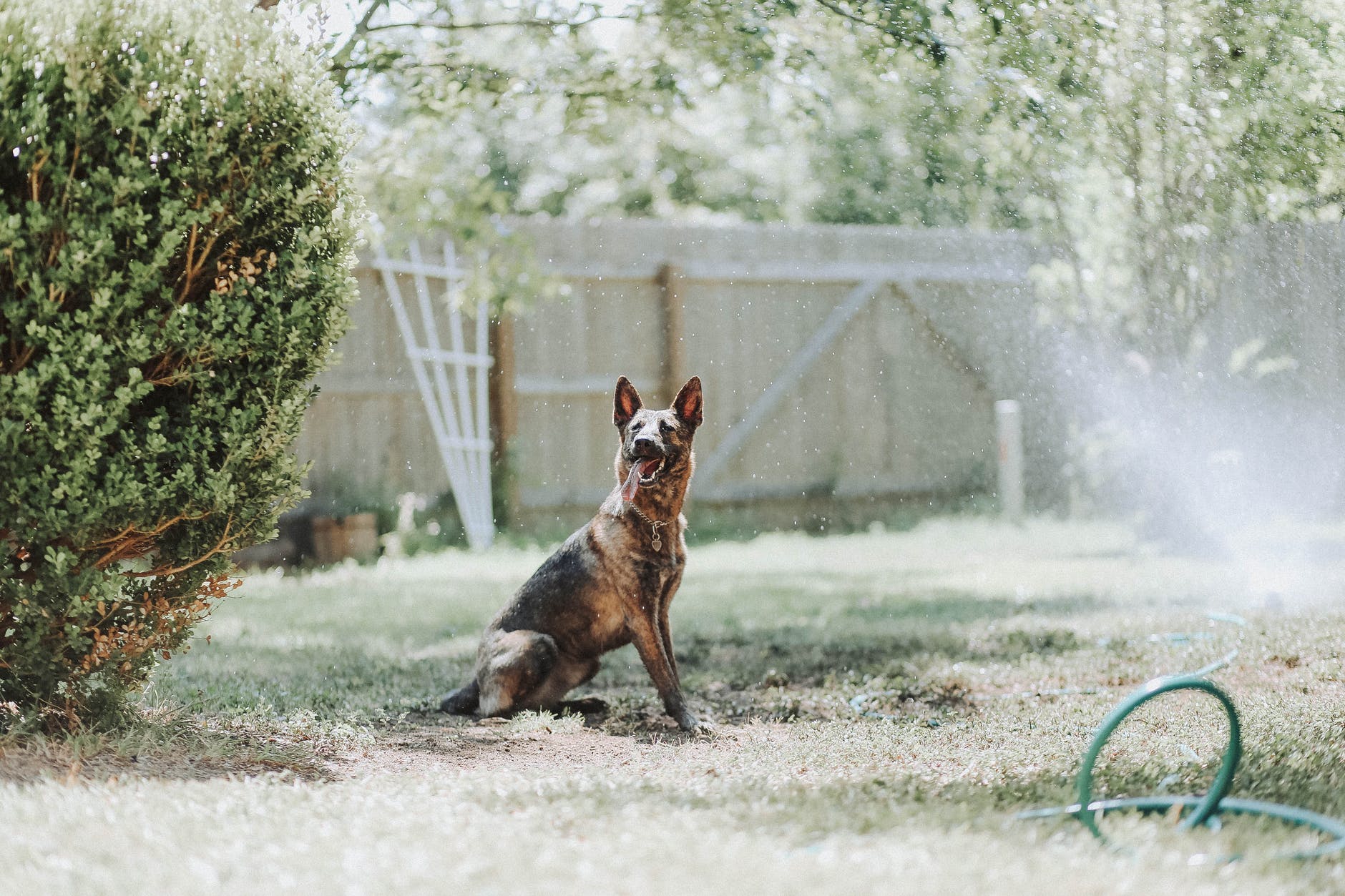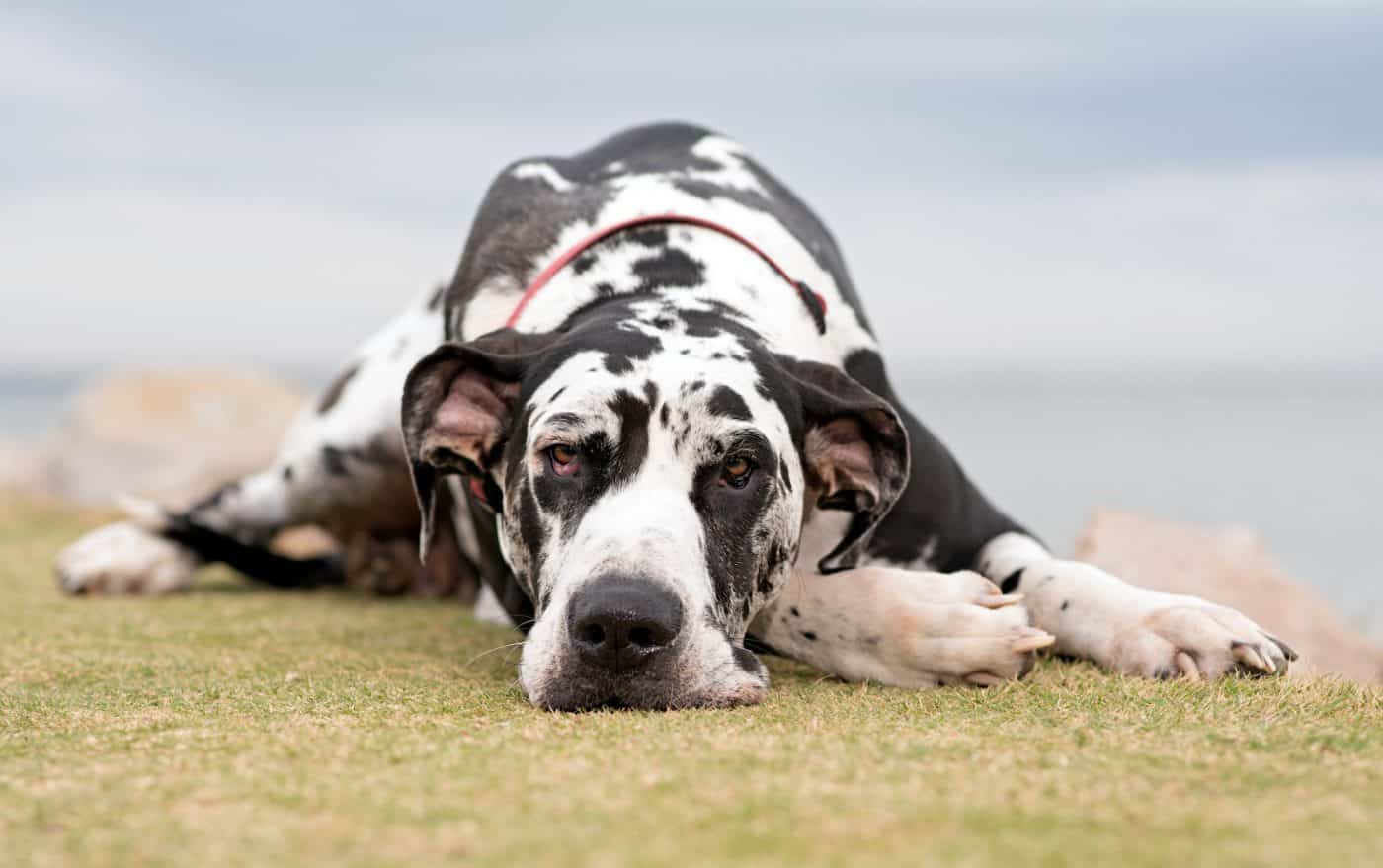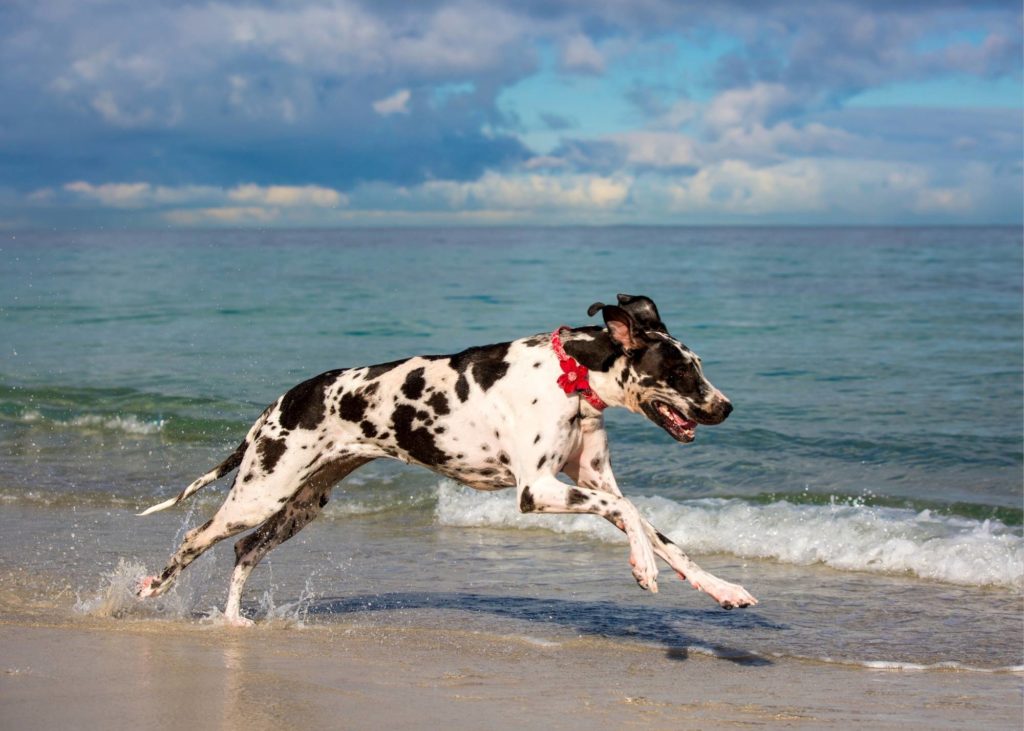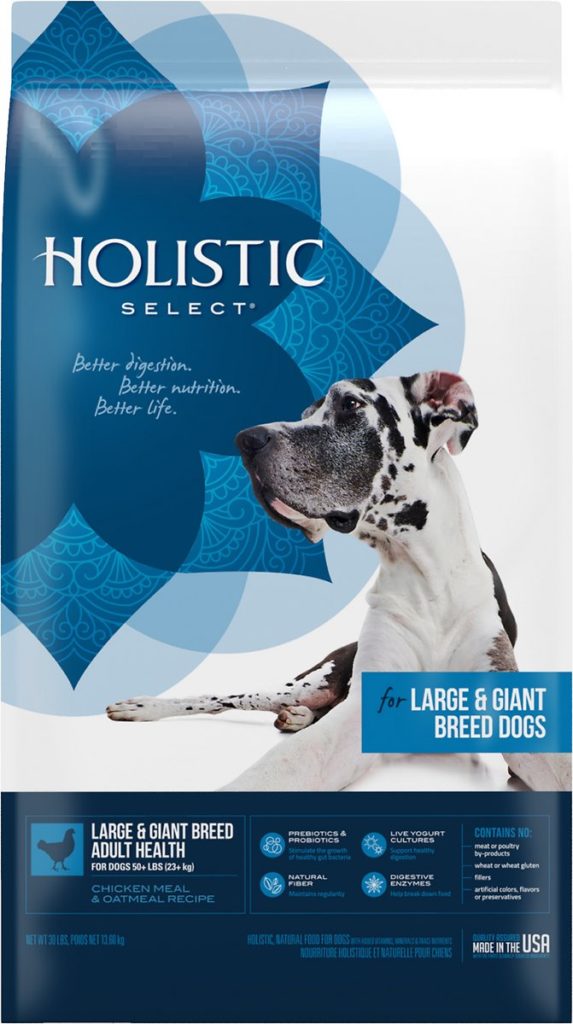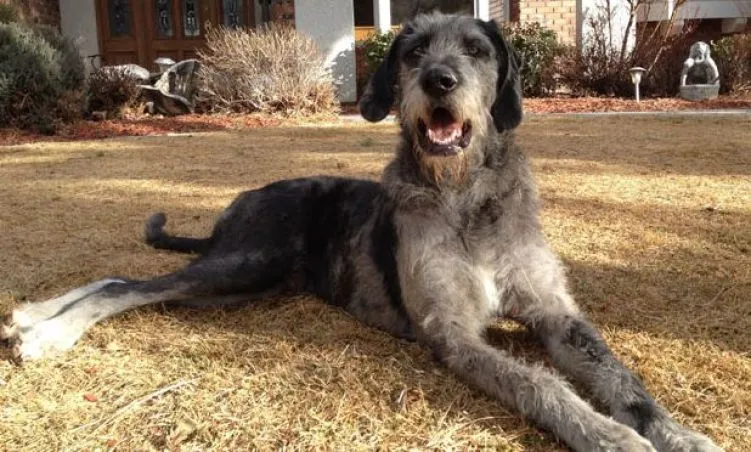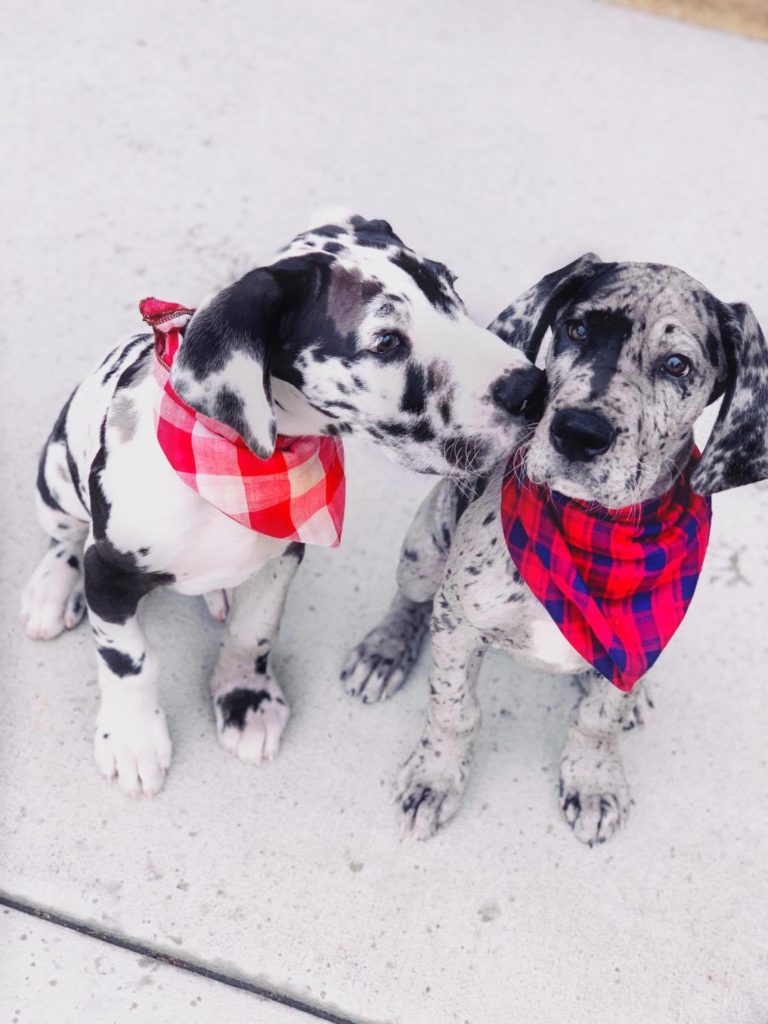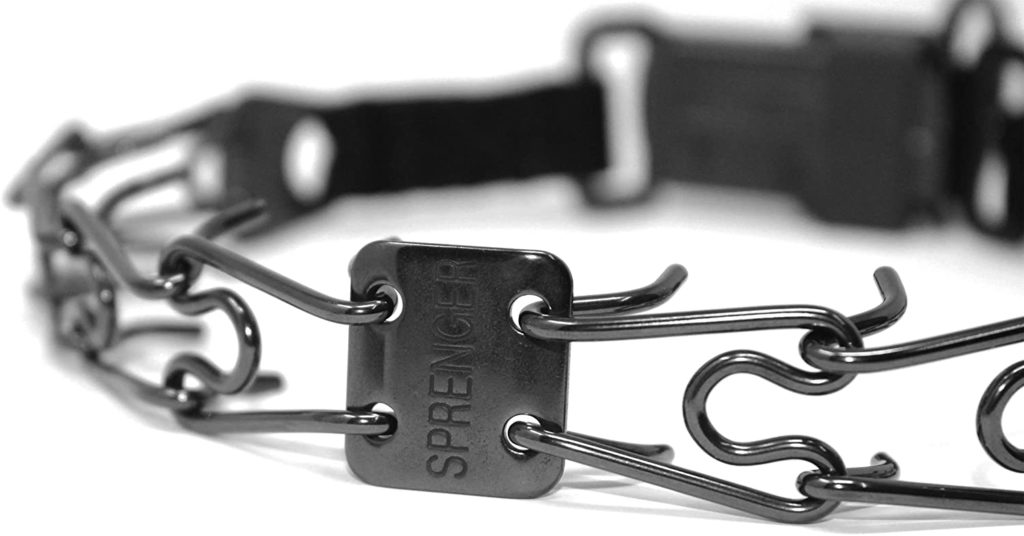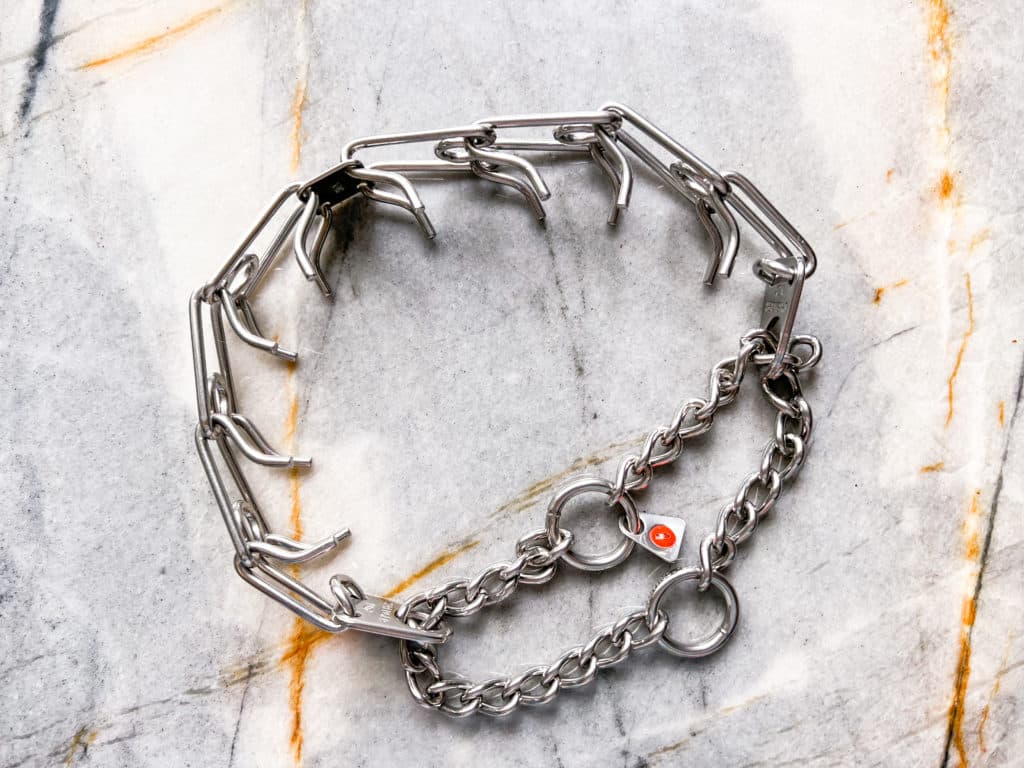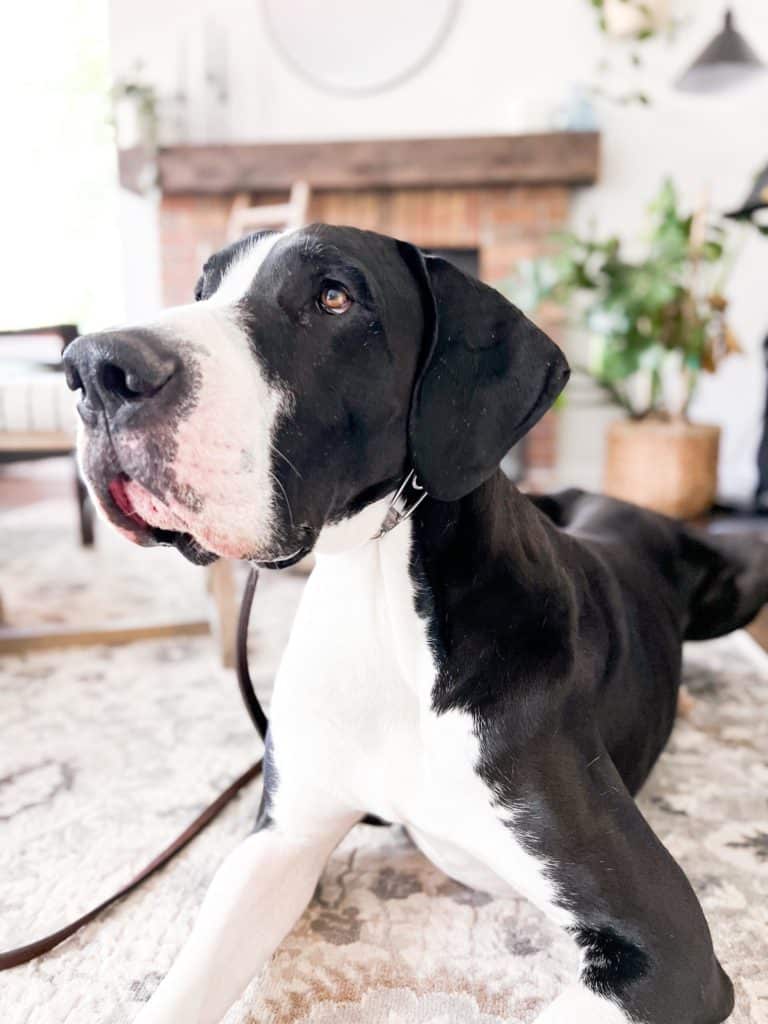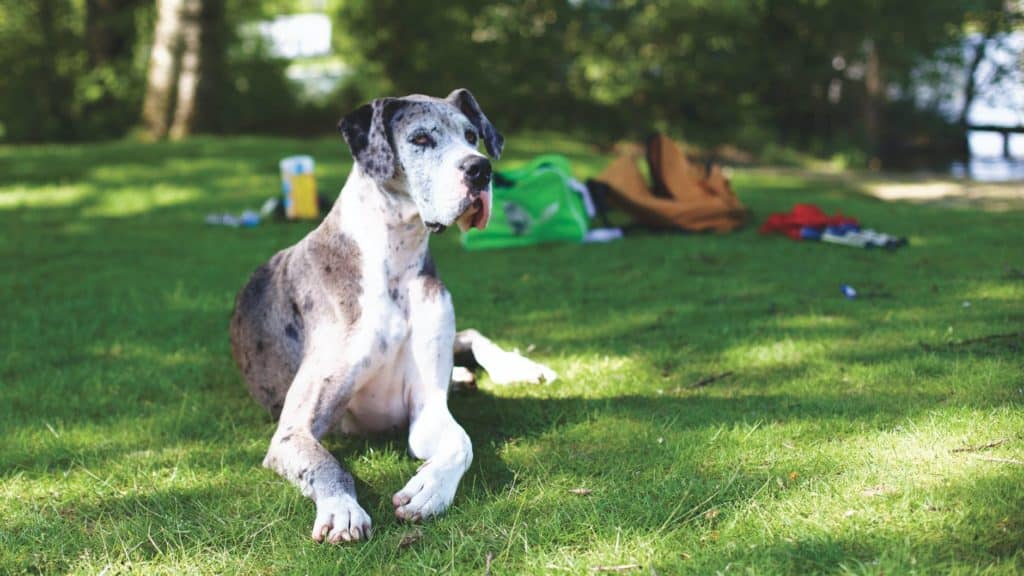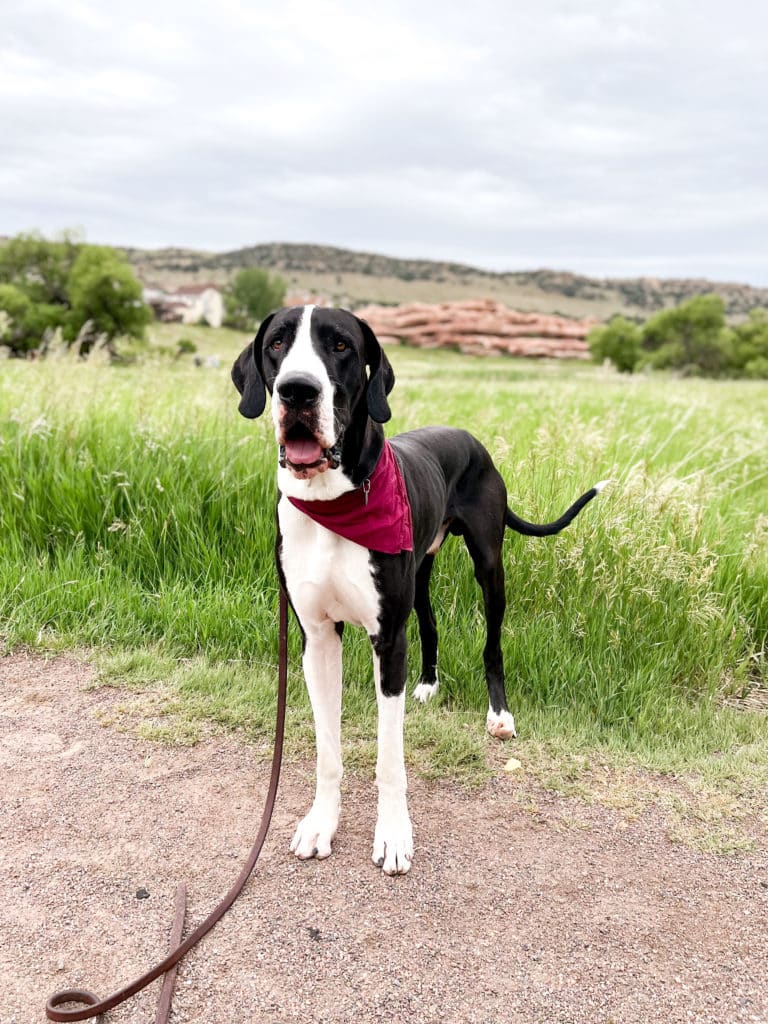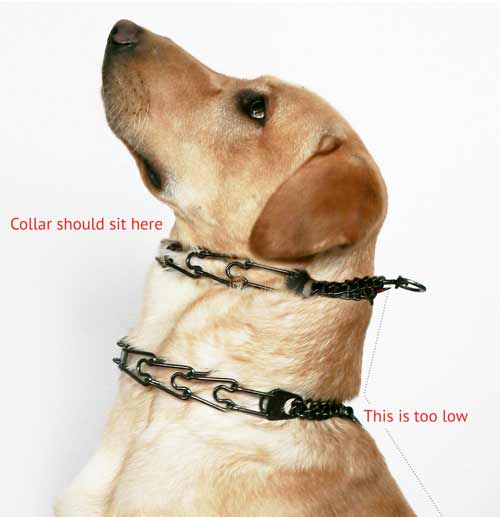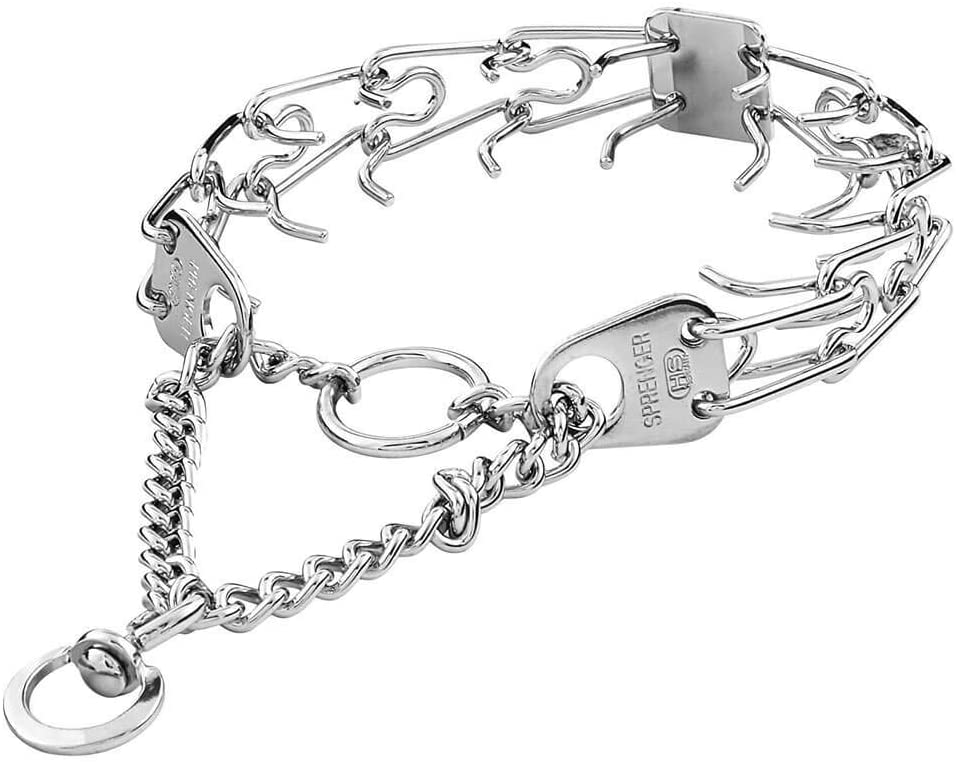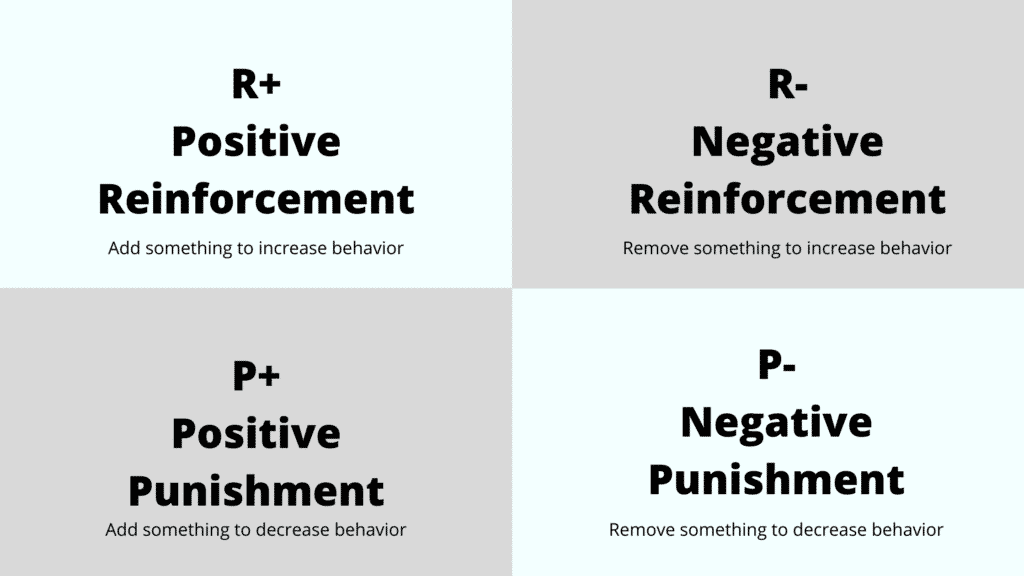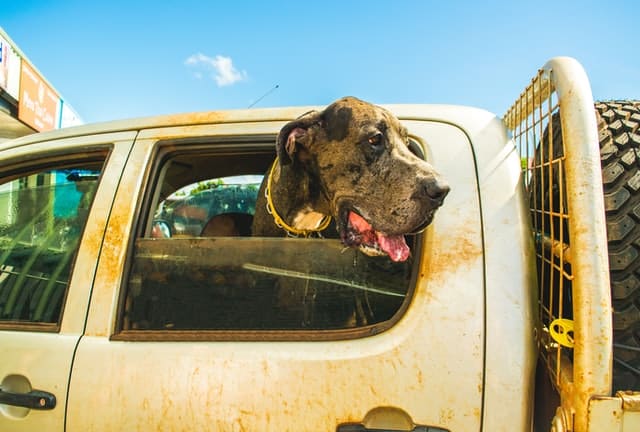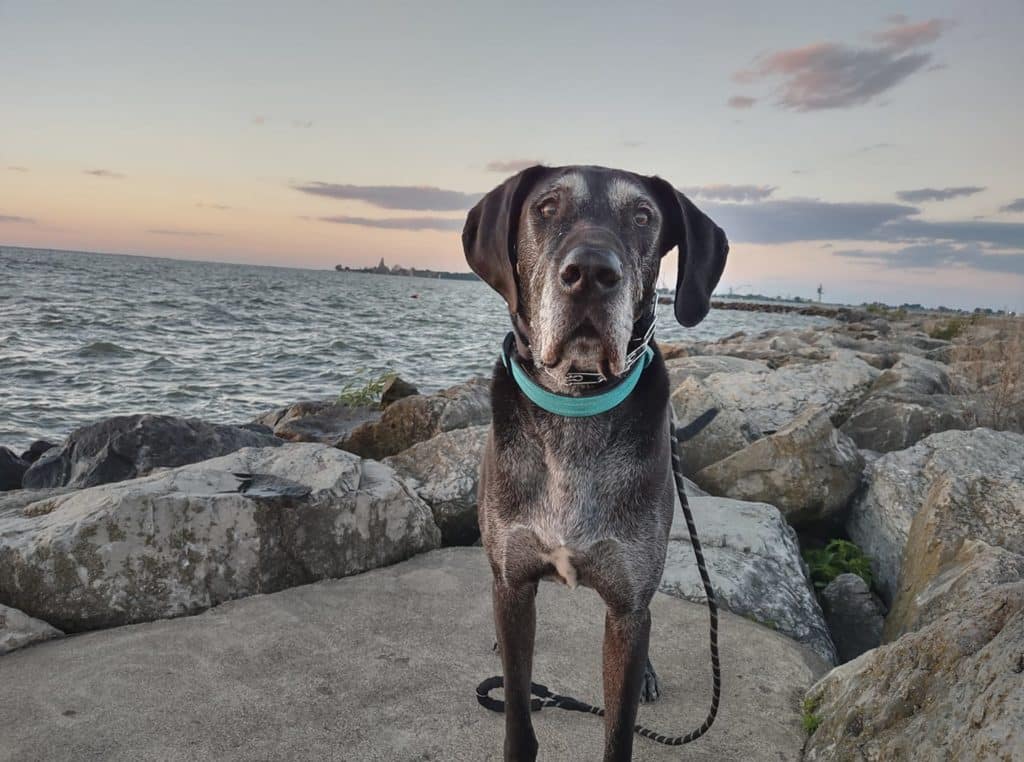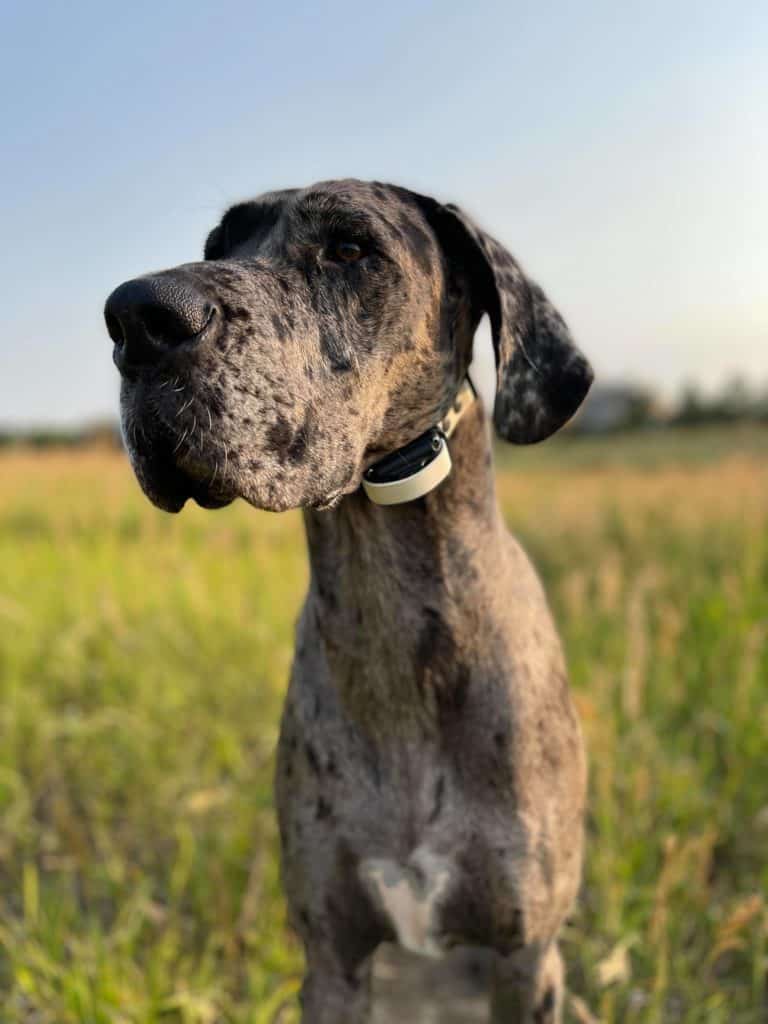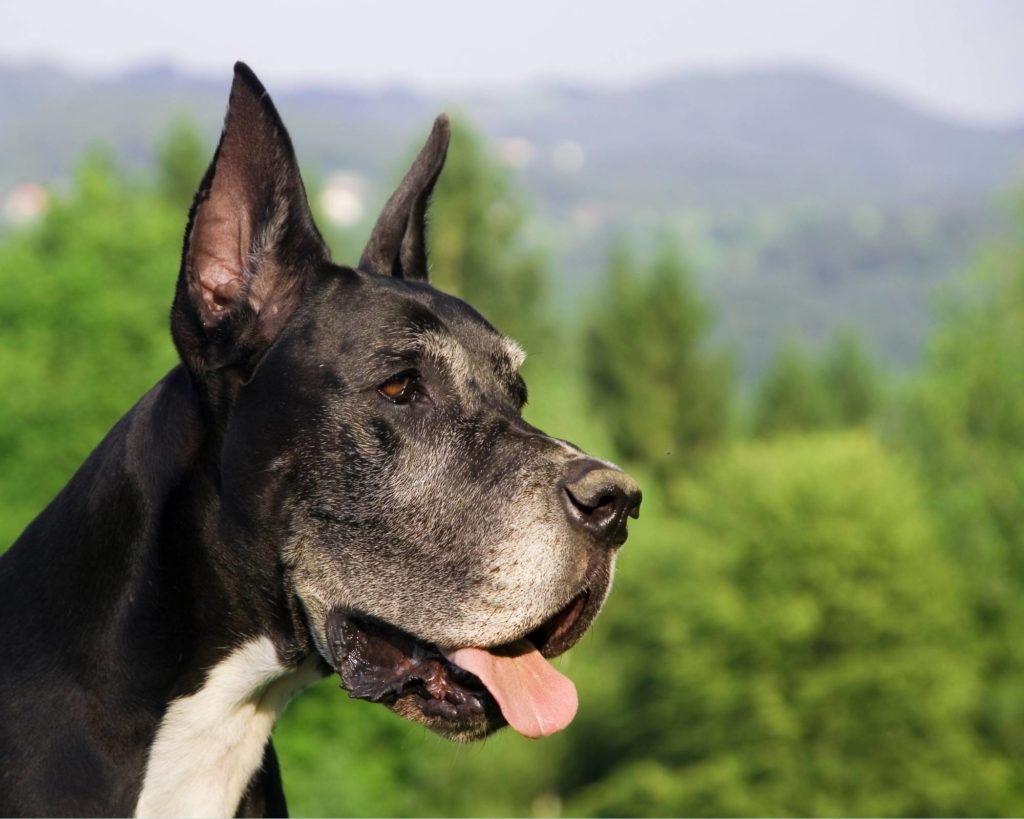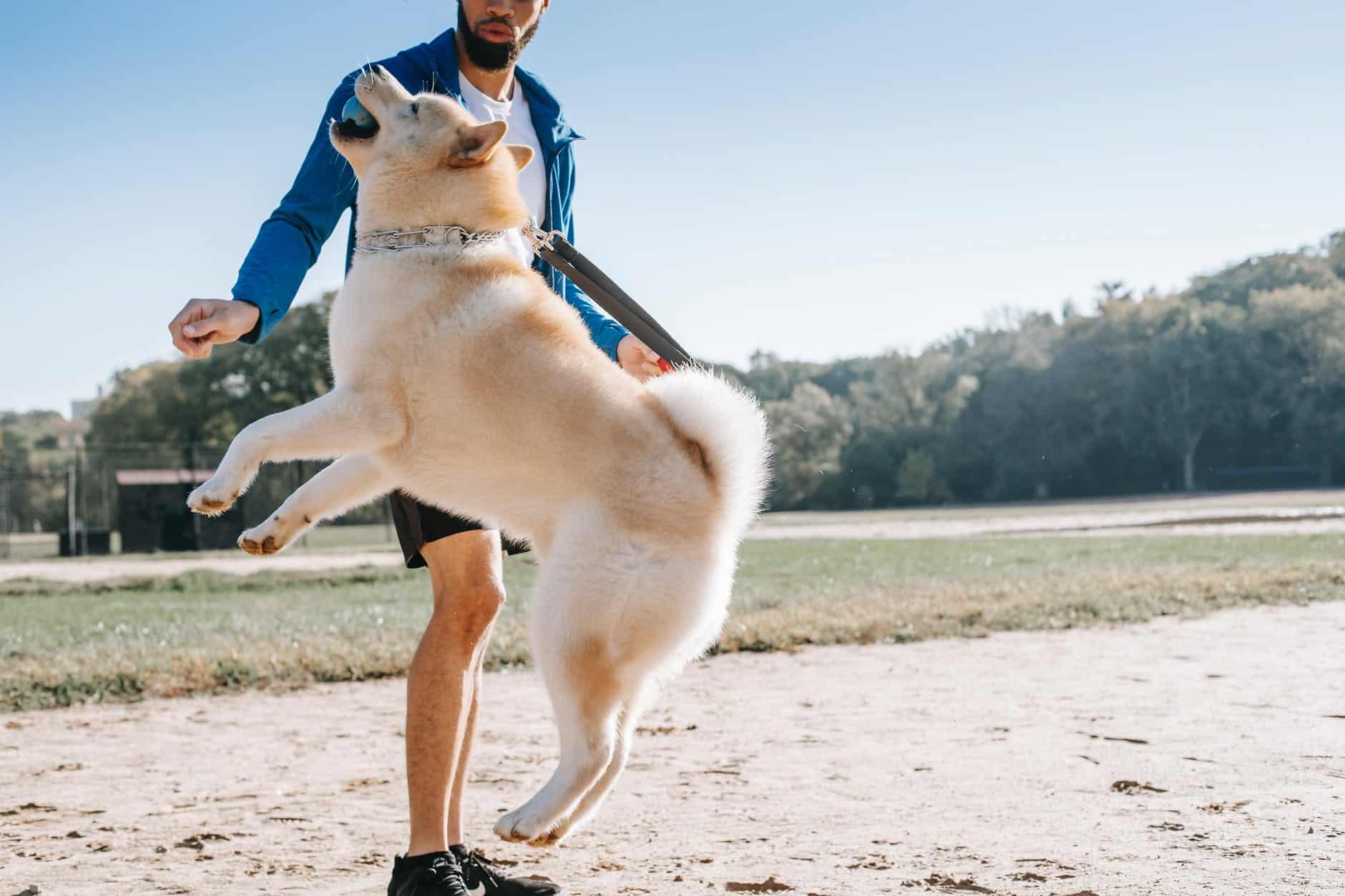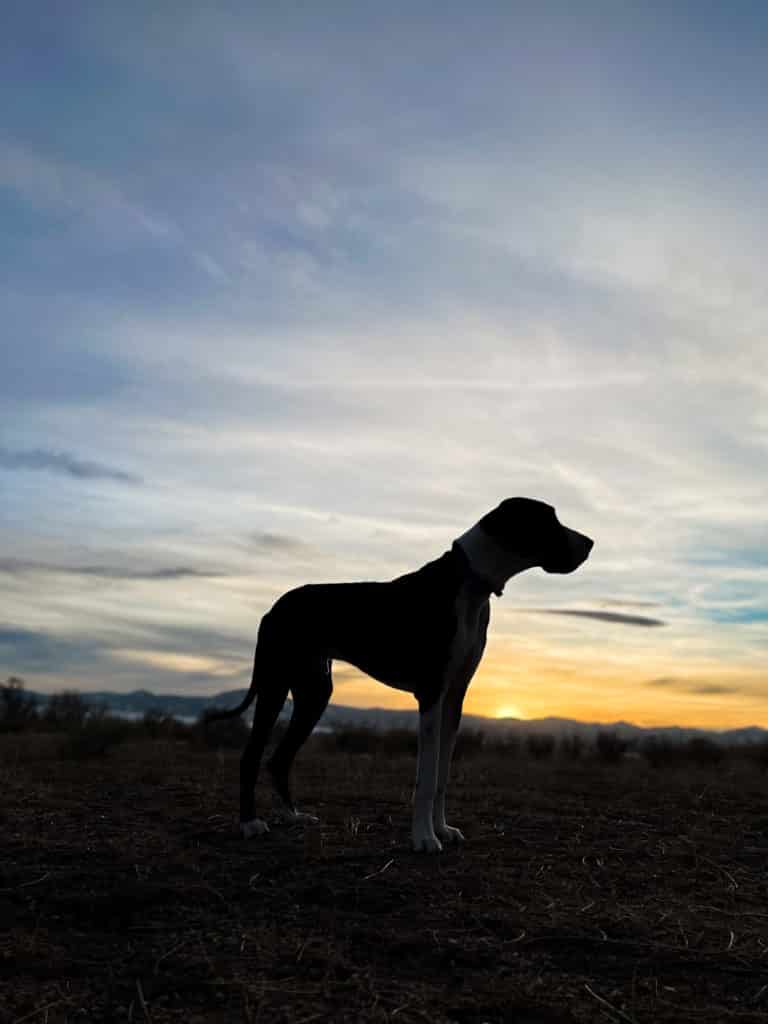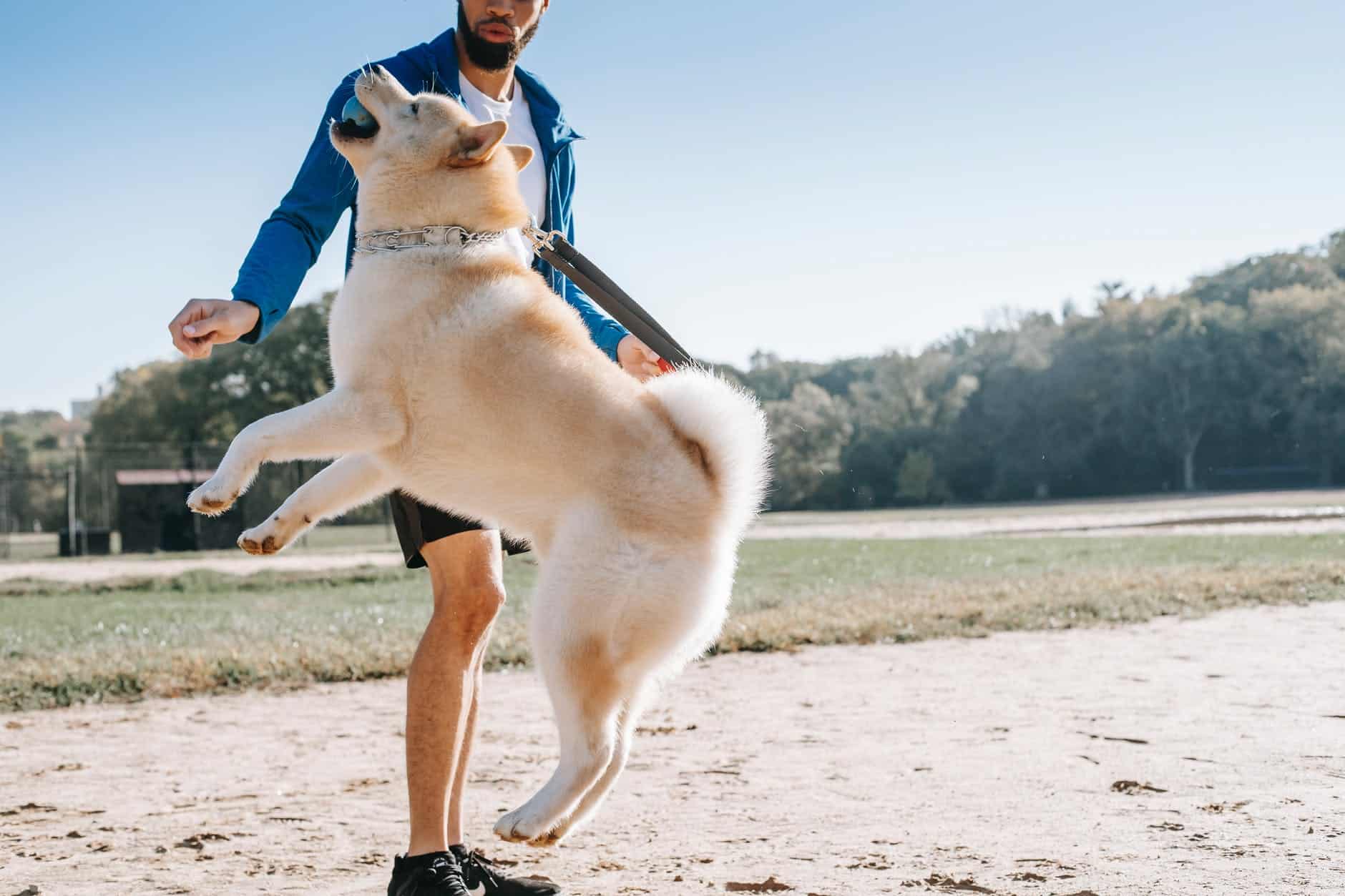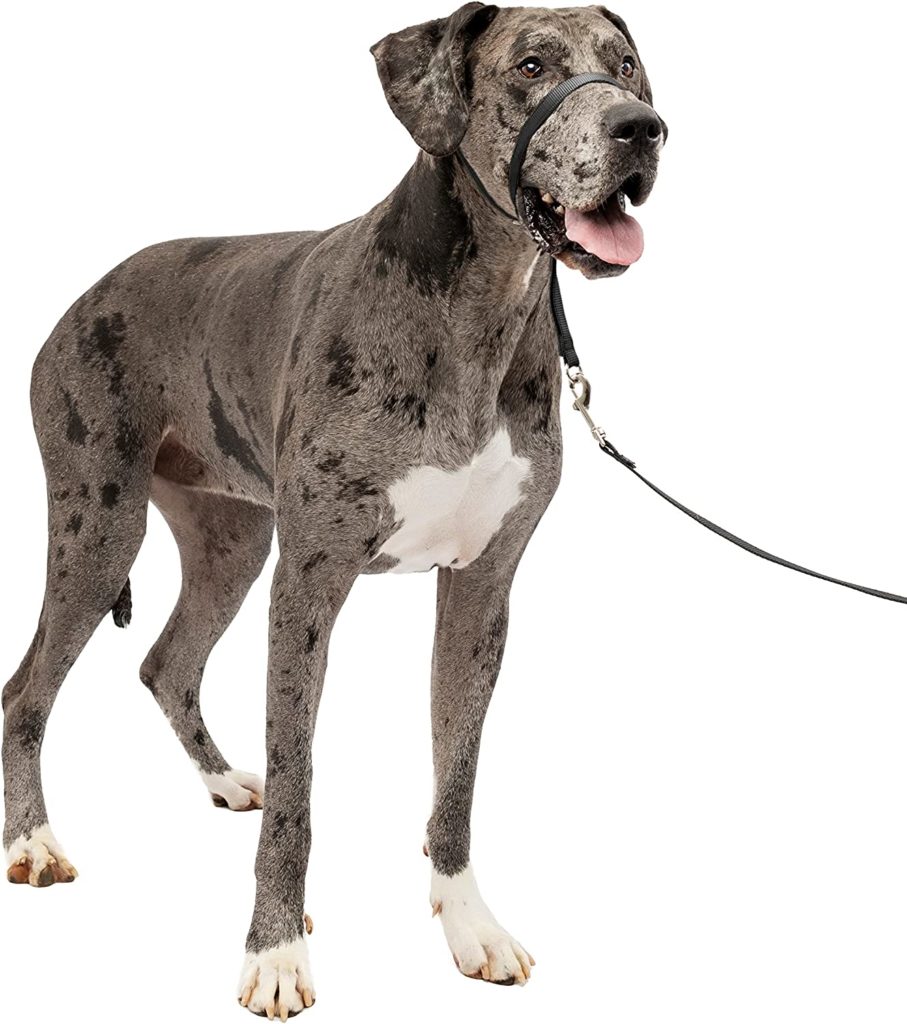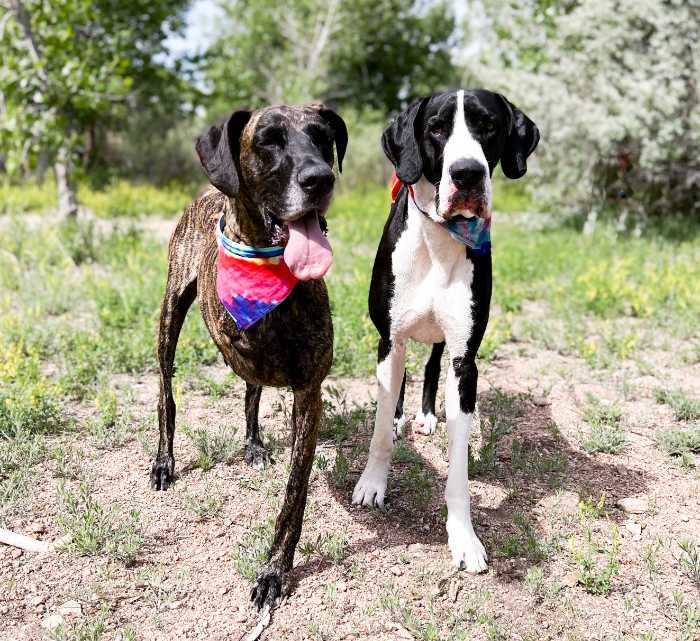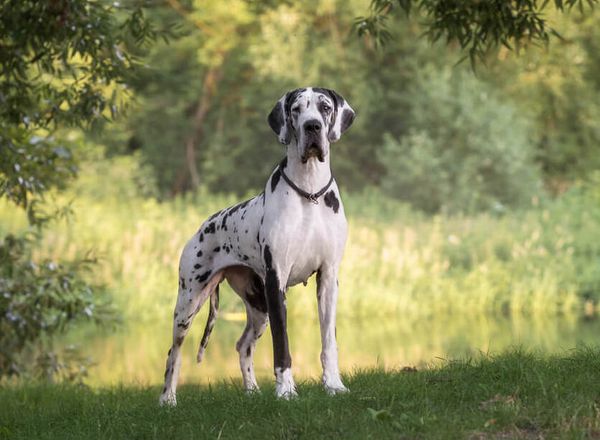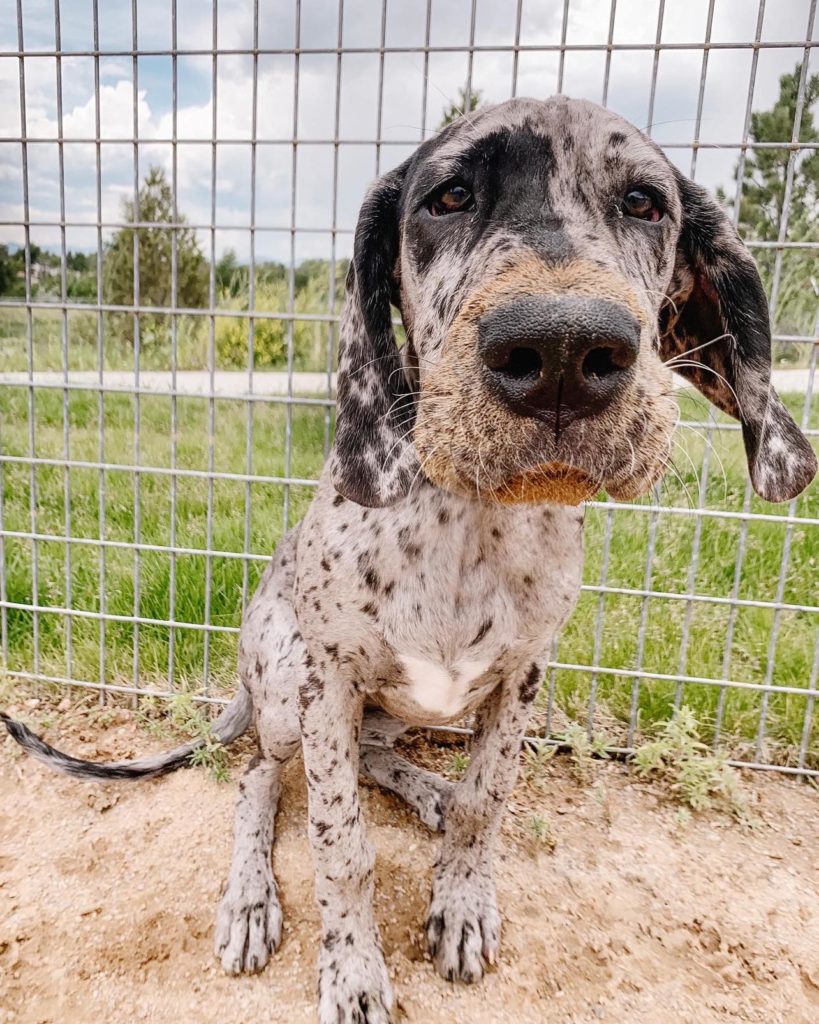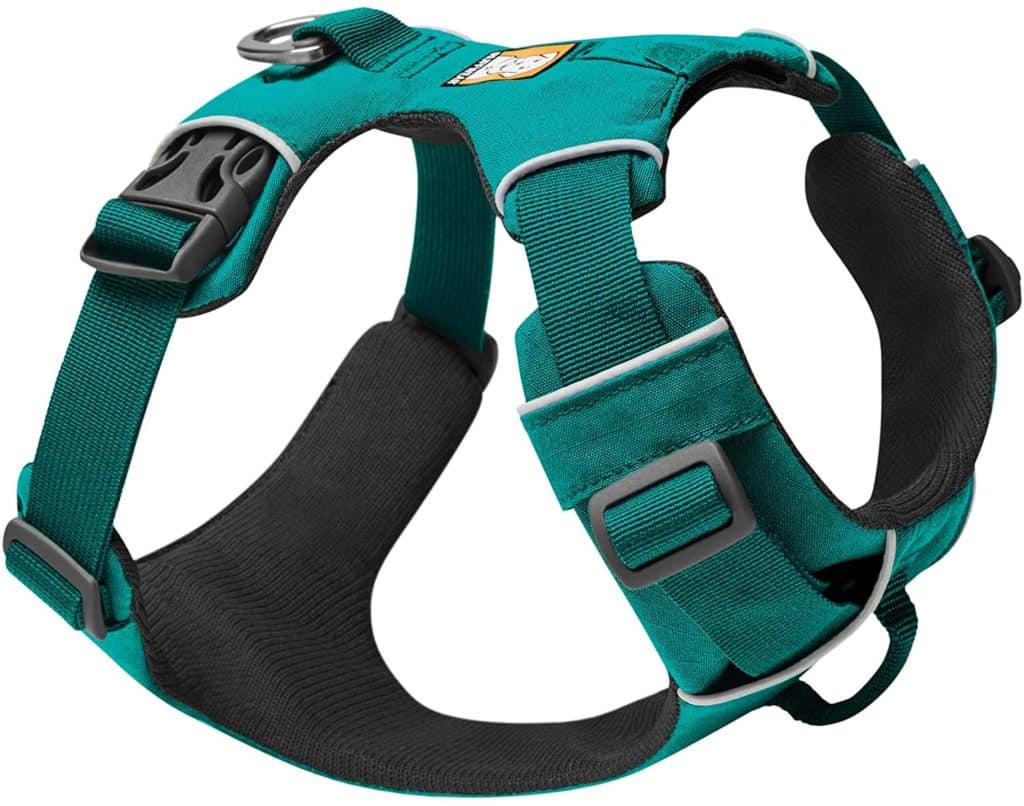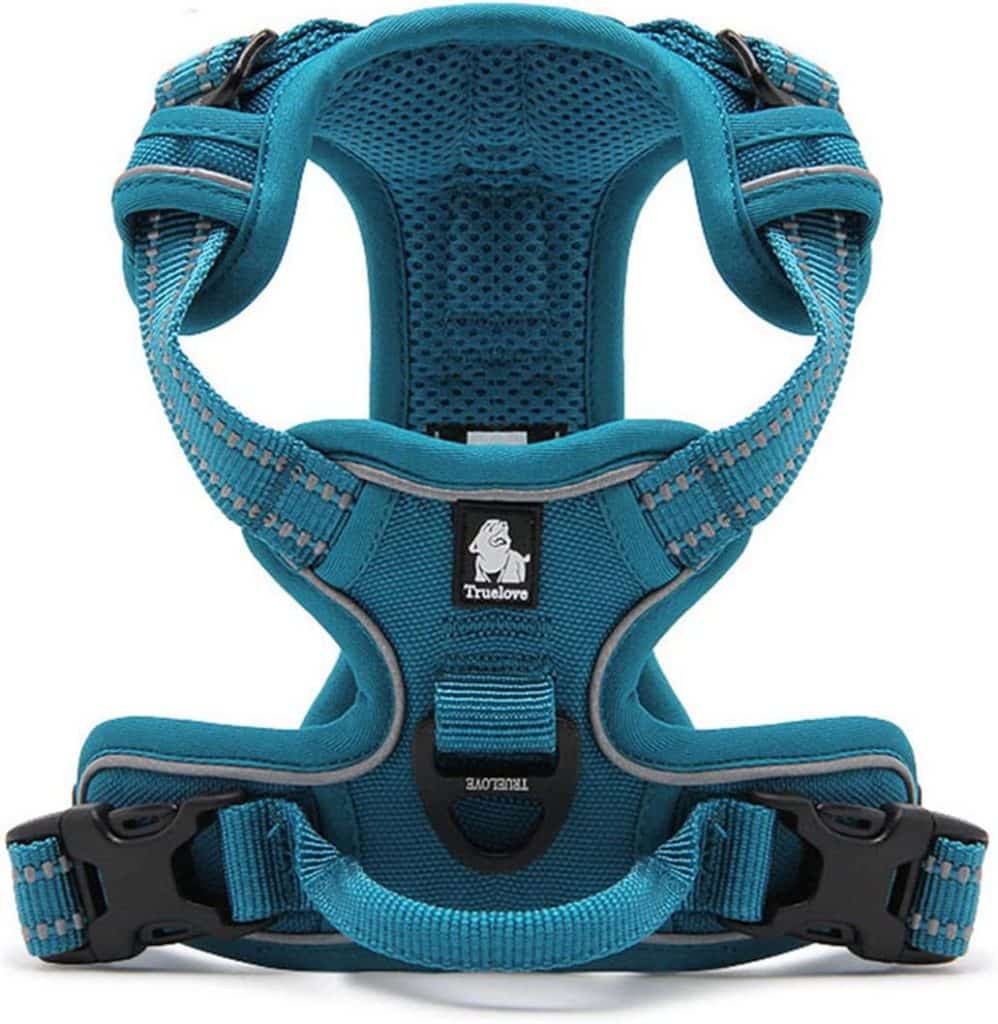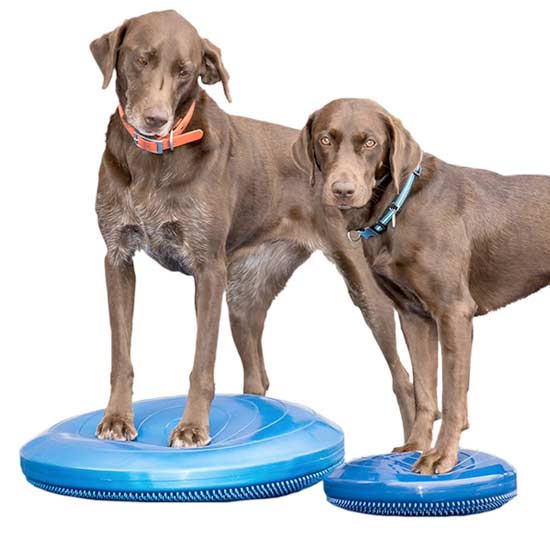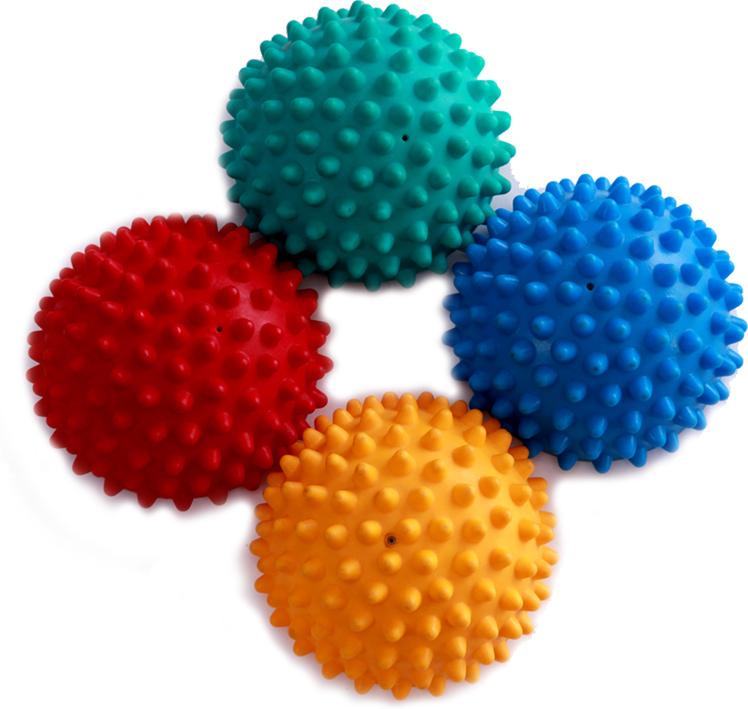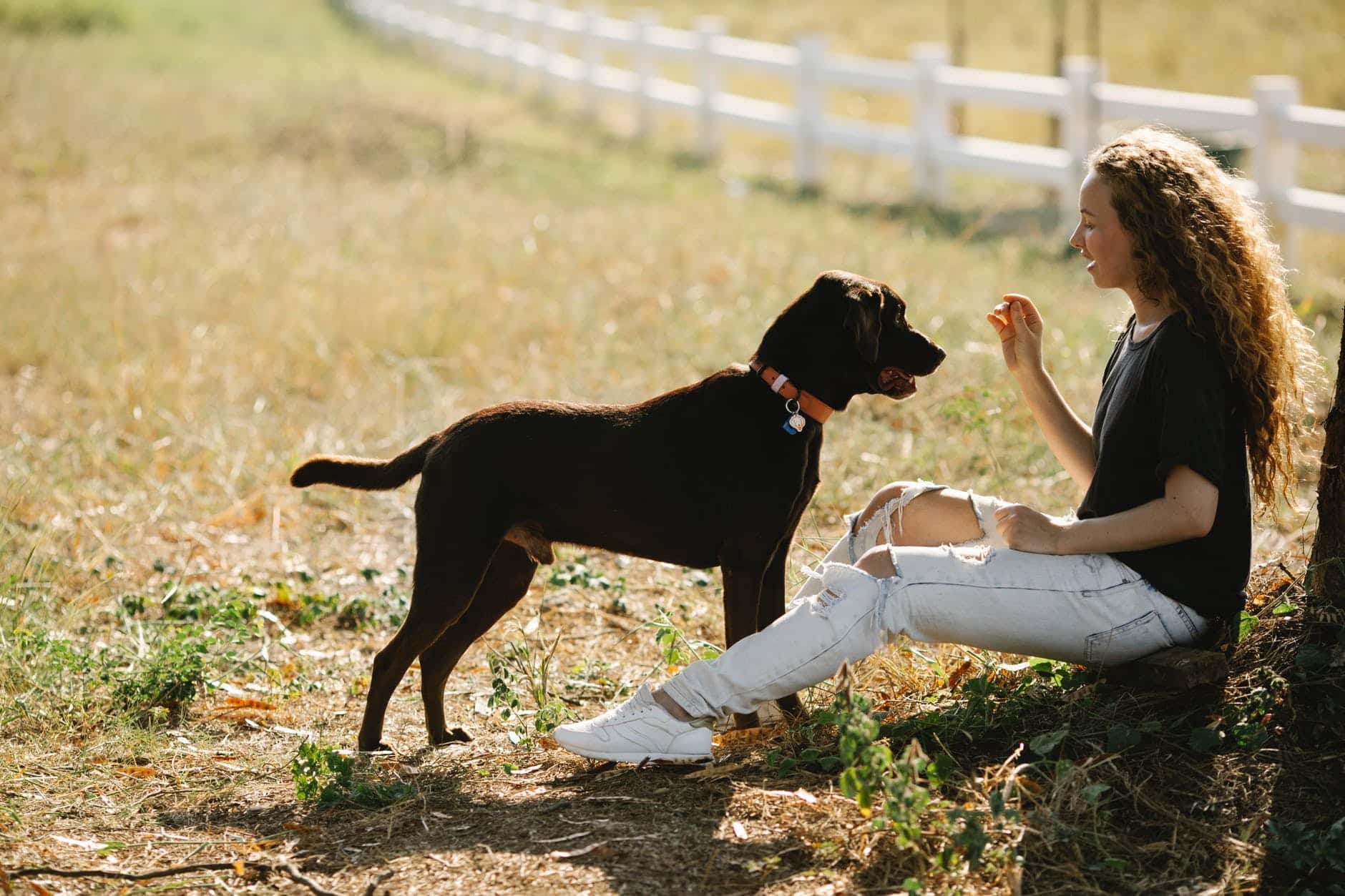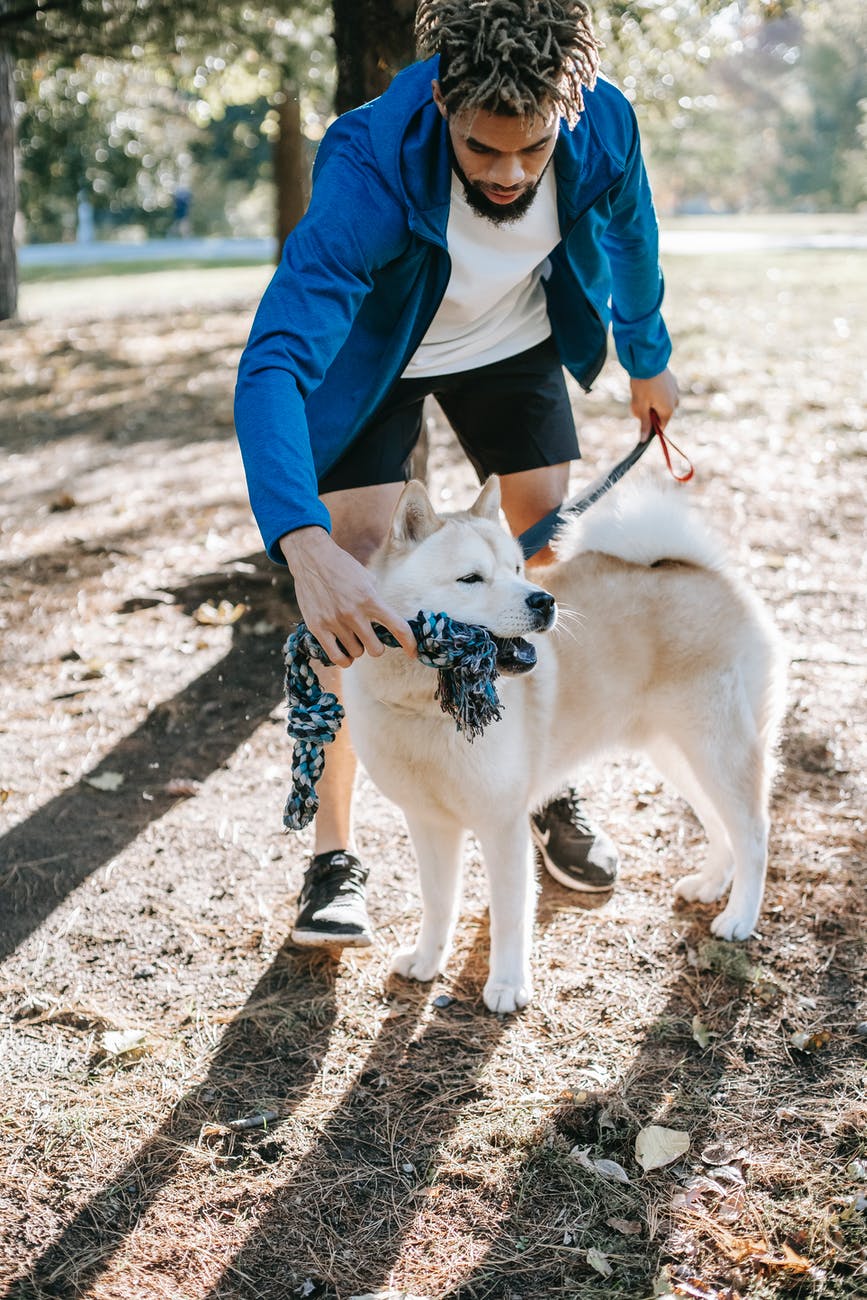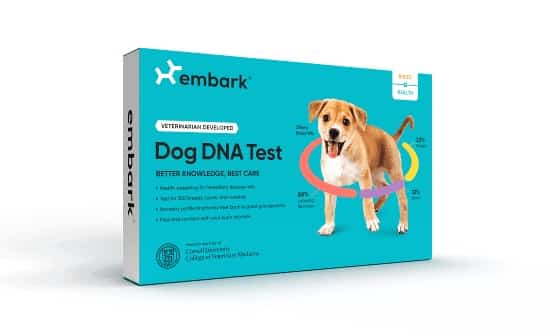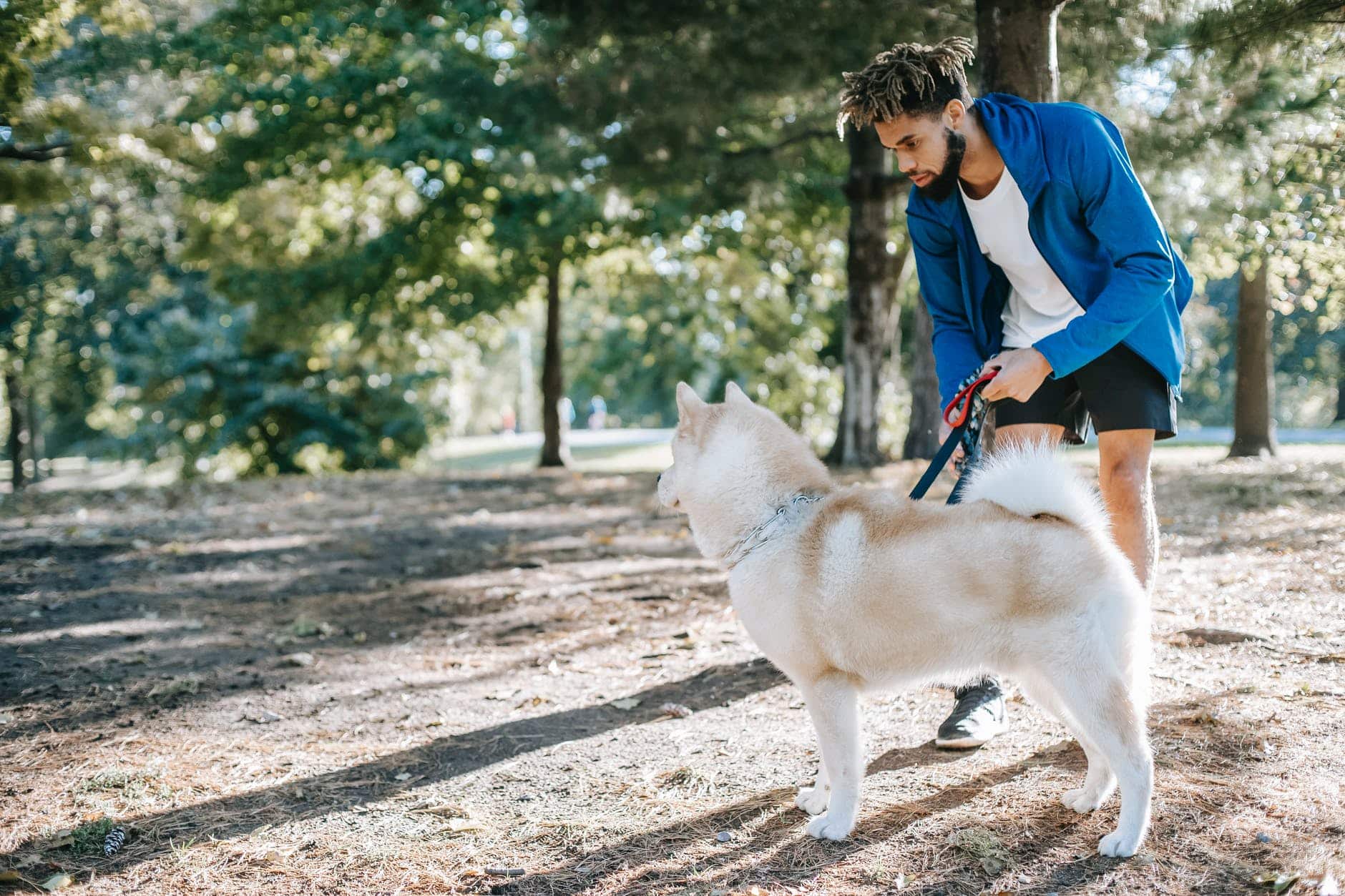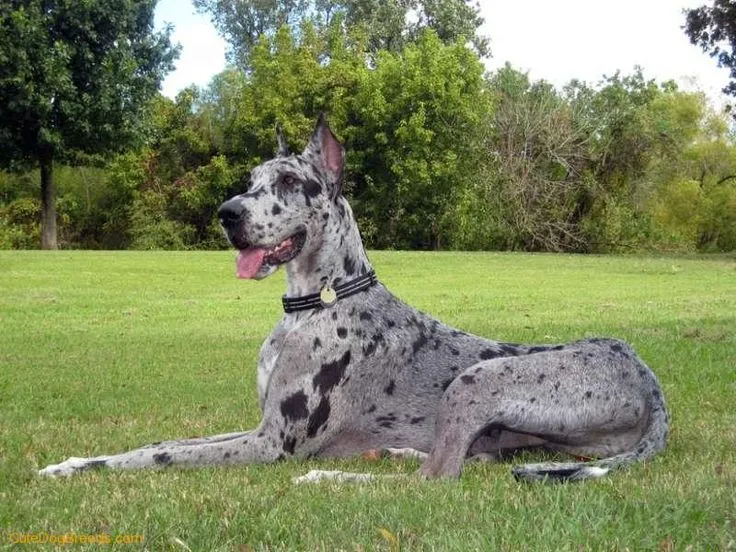Are Great Danes easy to train?
Many people believe that Great Danes are stubborn, spiteful, and defiant. It can lead to questions about whether or not Great Danes are hard to train, especially as they are so large and can easily be destructive or dangerous.
In this blog post, we will discuss some tips for training your Great Dane puppy or adult dog. We’ll also cover some common behavior issues that Great Danes can have and how to deal with them. We are going to show you that training Great Danes is EASY!
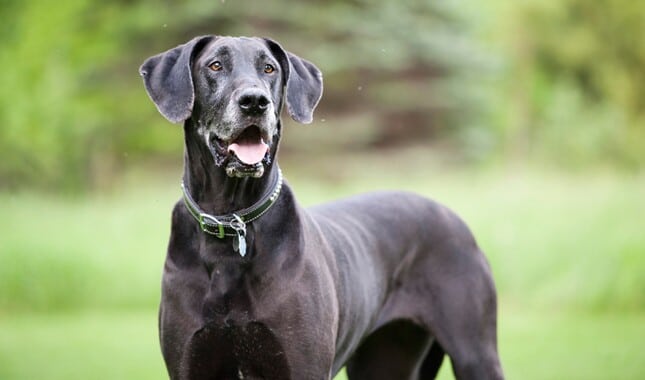
Are Great Danes Hard to Train?
We believe that it’s not that Great Danes are hard to train, it’s that they are often misunderstood.
People see their large size and think that they need to be handled with extreme and forceful techniques. In reality, Great Danes are gentle giants.
They are loving, loyal, and affectionate dogs that just want to please their owners.
The training process should be fun. Basic commands are super easy to teach using positive reinforcement, and it’s never too late to start training important commands the right way!
The Great Dane Potty Training Guide
The New Great Dane Puppy Checklist
The BEST Training Treats for Great Danes
Great Dane Temperament
Despite their large size, Great Danes are really gentle souls. They have a mild and loving temperament, which is why they make such great family pets.
Well-bred and properly trained Great Danes will generally get along well with children and other animals in the home.
However, as a large breed, their size can be intimidating to some people, especially if they have training problems that need to be addressed!
The Best Crates for Great Danes 2022
Are Great Danes Good with Kids?
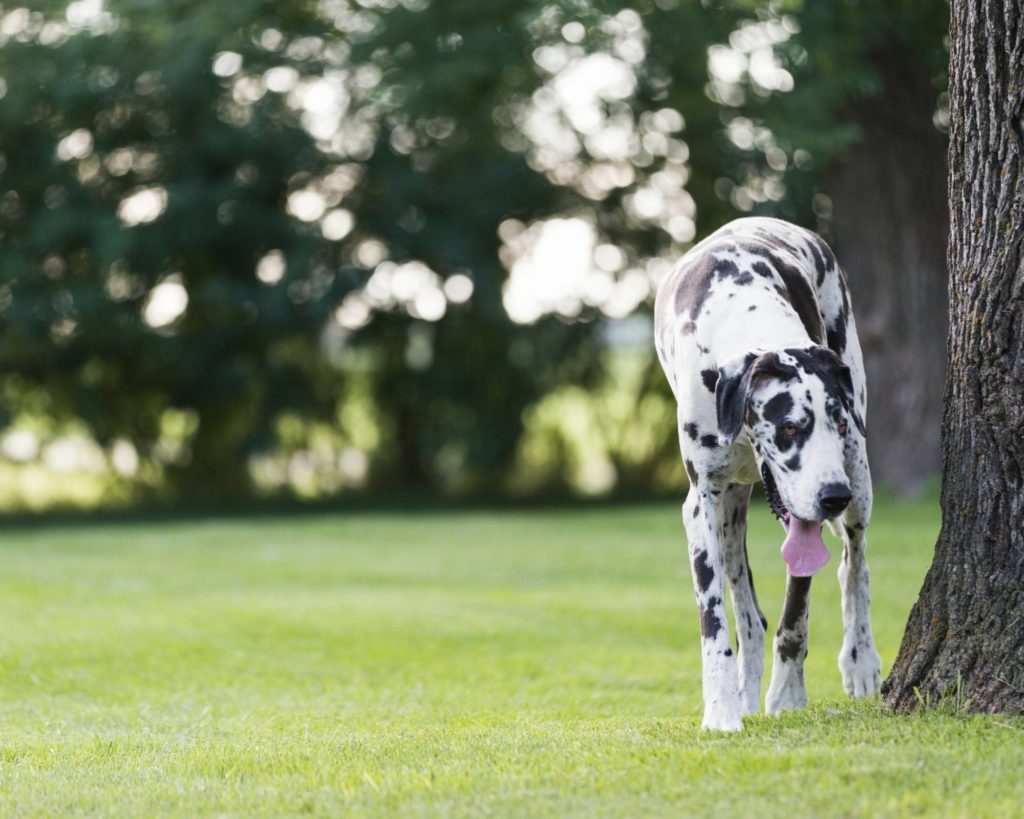
Great Dane Size
Great Danes are one of the largest dog breeds. They can weigh anywhere from 100 to 200 pounds and stand as tall as 36 inches at the shoulder.
Because of their size, they can easily pull you around or knock you over, without meaning to hurt you!
For this reason, it is incredibly important to start early and work hard to reinforce simple commands and basic obedience training.
Common Great Dane Training Problems
Great Danes are huge dogs, so when there are training problems, they feel much, much bigger by comparison to other dogs.
When a Great Dane jumps, chews things up or pulls on the leash they are a danger to themselves and to others. Smaller dogs often get by with some of these things, where as giants really cannot.
Common Dane training problems include:
- Jumping
- Mouthing/Nipping
- Barking
- Destructive Chewing
- Separation Anxiety
- Pulling on the Leash
- Reactivity towards people and dogs
- Poor recall (not coming when called)
All of these things are fixed with diligent attention to rules, boundaries, management, and training; but it takes time.
Great Danes are not hard to train, but they DO require proper behavior management and obedience training. We’re providing more tips on this for you below!
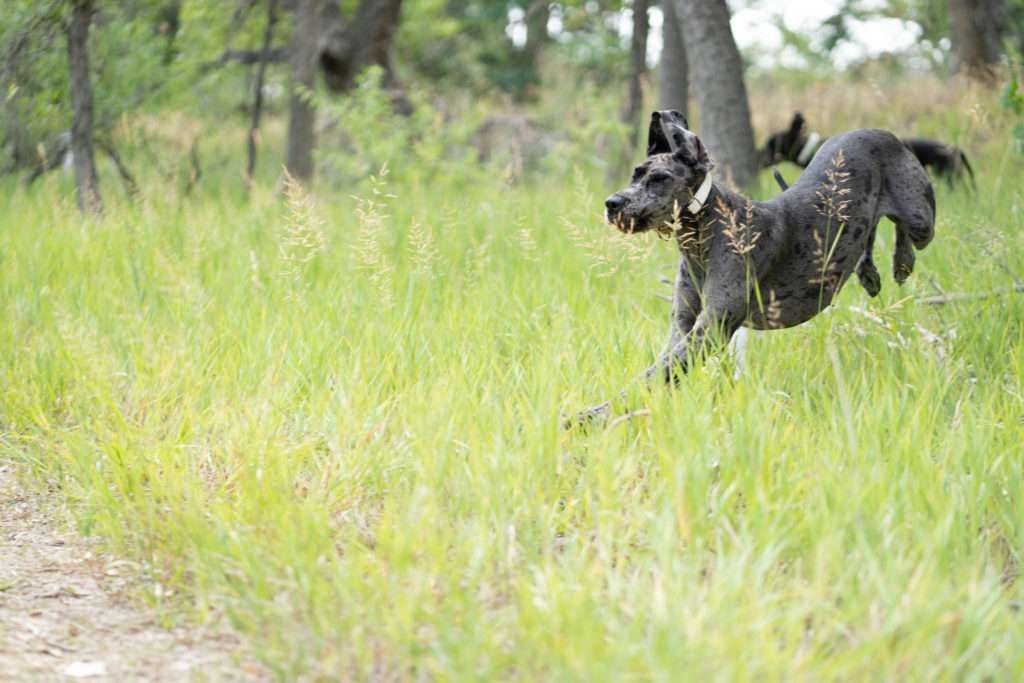
Are Great Danes good for Beginners?
We believe that Great Danes can make excellent family pets and incredible dogs for many people.
However, people who have never owned a dog before may benefit from adopting an older shelter dog with a known temperament, instead.
The most common reasons why Great Danes are often surrendered to rescue include:
- Aggression, which is largely related to genetics and poor socialization
- Out-of-control behavior, which is related to poor socialization, poor enrichment, poor handling, and poor training
- Grew too large, which is related primarily to a lack of education about Great Danes and their size
- Plays too rough with kids, which is related to poor socialization and training, as above
All of those things require new Great Dane owners to be well educated on the breed’s size, temperament, and training requirements as well as how to find an ethical preservation breeder.
Potty Training Tips & Tricks
AKC STAR PUPPY Training
What to Expect When You Bring a Great Dane Puppy Home
Is Training a Great Dane Easy?
We believe that the answer is YES, but where most people fail is that they:
a. Use a heavy-handed punishment-based training approach
b. Don’t correctly manage or handle their dog’s behavior, social needs, and enrichment requirements
b. Don’t realize how many times a dog has to be rewarded for something, and how many times and places it needs to be practiced during training sessions before the skill becomes automatic
We’re going to offer some tips on Great Dane training below, but if you need more help, please consider hiring a certified professional dog trainer in your area.
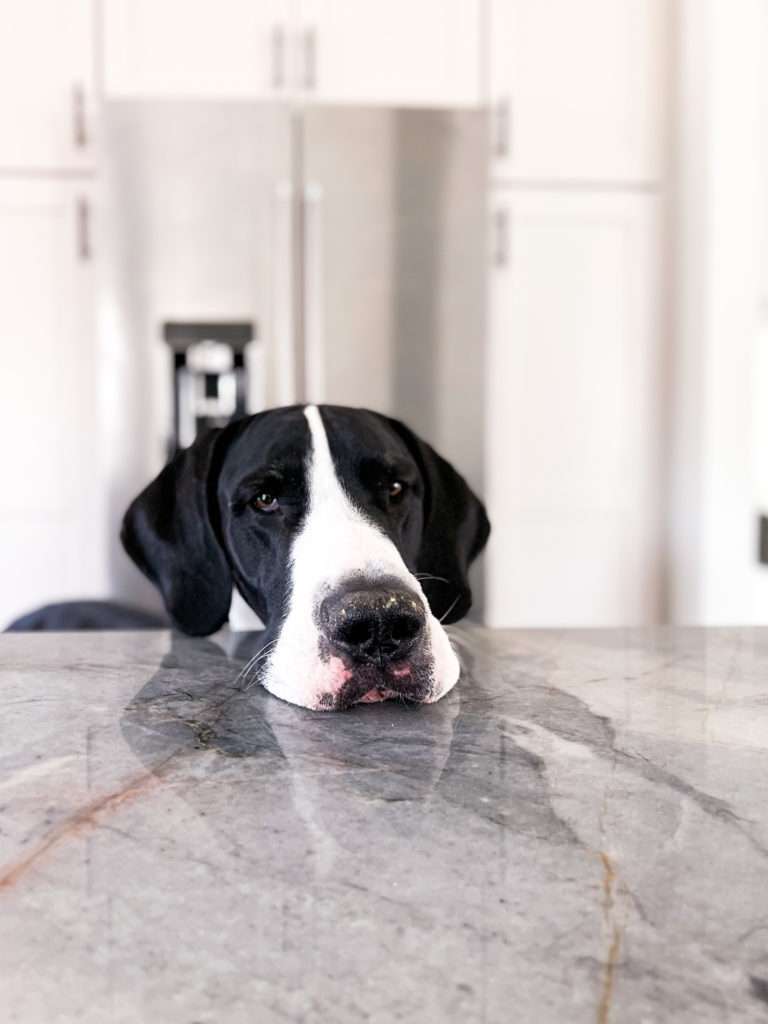
IS GRAIN-FREE FOOD DANGEROUS?
The Best Training Methods for Great Danes
Not all dog training is created equal!
At Hello Danes, we stand firmly against heavy-handed dominance, ‘alpha’, ‘be the boss’, ‘intimidation’, and harsh-punishment-style dog training.
These methods cause an increase in fearful and anxious behavior, and may increase the risk that the dog will bloat as a result!
Below we will outline acceptable training methods for Great Danes and other big dogs.
How to Socialize a Great Dane Puppy
How Dogs Learn – the Basics!
STOP Great Dane Puppy Biting
Positive Reinforcement Training
Positive reinforcement is the process of rewarding a dog with a treat, favorite toy, play, affection, or praise.
Doing so increases the chance that a dog will repeat good behavior!
All new behaviors should be taught this way, including sit, down, heel, come, leave it, wait, touch, and place.
You must practice and reward these skills many times in many different places!
Some people are so impressed that their Great Dane puppy will sit in the kitchen for them every time. They are later shocked, however, when their puppy will not sit on command anywhere else.
Dogs don’t generalize well. They have to learn that sit means sit here, sit there, sit anywhere when asked. It’s imperative that you practice this in different places with lots of distractions.
Everyday life is much more complex than what happens in your living room.
Once they have their lightbulb moment, you are home free and can add additional layers of difficulty, including other commands, and phase out the treats to use only verbal praise!
The Great Dane Potty Training Guide
The New Great Dane Puppy Checklist
The BEST Training Treats for Great Danes
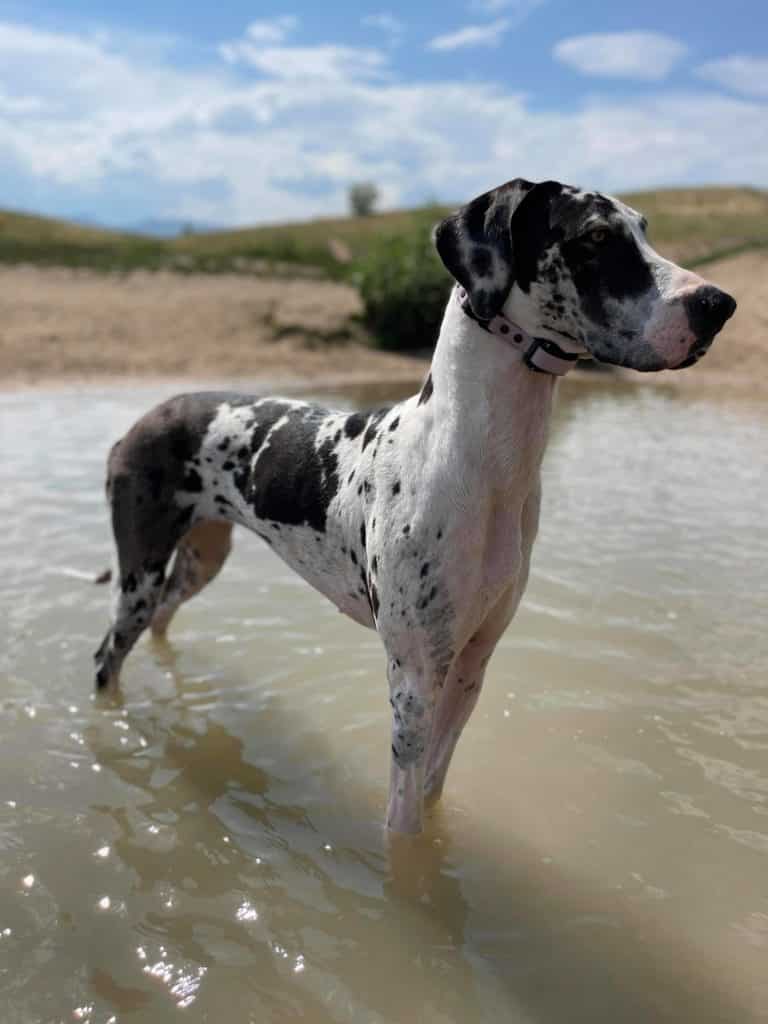
Balanced Training
We recommend pairing positive reinforcement with gentle, modern balanced training.
Balanced training is when you reward your dog for behaviors that you want them to repeat, and then if needed you either manage (prevent) or correct behaviors that you do not want them to repeat.
Some examples of this include:
-Leash walking: you would reward your dog for walking calmly by your side, and then manage or correct them if they pull ahead or lag behind
-Jumping up: you would reward your dog for having all four feet on the ground, and by keeping your dog on a leash when they tend to jump, you can manage and correct the behavior
-Chasing kids: you would reward your dog for calm behavior around kids, and then manage or correct the behavior if they start to chase
-Digging: you would reward your dog for playing near digging spots without digging, and then manage the behavior or balance it by providing an appropriate outlet such as a sandbox or digging pit
Remember that management is not a punishment, but overuse of restrictions and isolation is unfair to your dog.
Corrections don’t have to be harsh, forceful, scary, or painful and can bridge the gap between freedom and ongoing restraint for your dog.
Read here to learn why we don’t recommend “Force-Free” or “Positive Only” dog training!
The Best Training Tools for Great Danes
We believe that the best training tools you can use meet the following guidelines:
- Work primarily as a form of communication, not a form of physical restraint
- Do not obstruct the way a dog moves its shoulders, head, feet, or neck
- Result in dogs gaining more freedom and more enrichment opportunities, without long-haul ongoing processes that may be unreliable or frustrating in the long run
- Are high quality and work without months of conditioning
- Will allow Great Danes to be off-leash and free of restraint as much as possible
For example, no-pull harnesses and Gentle Leaders are aversive tools that rely on physical restraint. They work by altering the dog’s natural movement and restricting forward momentum through physical force. Head collars in particular tend to be distressing and aversive to dogs, even when introduced slowly.
These tools are unfortunately marketed as ‘positive’ and ‘gentle’. However, if you look at the actual mechanics and science of it, they are anything but that.
We are a science-based blog, so when people claim that head collars and harnesses are not aversive, we have questions about their motivations and their scientific thought process!
Keep in mind that Great Danes are GIANT breed dogs. They can and will pull, lunge, and take control of the leash. A Great Dane in a harness can easily become dangerous.
We recommend the use of positive reinforcement, paired with flat collars and a long leash or off-leash work to teach all skills. Engagement and rewards are key!
Following that, the use of a positively implemented, correctly fit prong collar (which uses pressure, not pinching or stabbing) for leash walking is a surprisingly humane and appropriate way to keep your Great Dane safe and be able to go places together without months of incremental ‘positive only’ training or restrictive nylon tools.
Additionally, the use of modern E-Collars, which use gentle muscle stimulation to replace leash pressure, is our favorite go-to training tool for Great Danes.
E-Collars are the ONLY tool that uses absolutely no physical touch or restraint. The sensation the dog feels is more gentle than the pressure from any head collar or harness; it does not shock or punish the dog.
#themoreyouknow
5 Training Mistakes You May Be Making
5 Tips for Loose Leash Training
E-Collar Training + Great Dane Puppies
| Gentle Leader | Prong Collar |
|---|---|
| Aversive to wear, no matter the fit | Non-aversive to wear with correct fit |
| Requires conditioning for wearing & using | Requires training for using, not wearing |
| Looks ‘Gentle’ and seems positive | Looks scary and painful, but is misunderstood |
| Inexpensive | Spendy |
| Can damage nerves, eyes, neck, and spine when used normally | Can only cause damage to the skin if used abusively or incorrectly |
| May cause sores on the bridge of the nose | Does not cause skin sores or abrasions |
| People rarely judge this tool | People are often judgmental |
| May exacerbate underlying health problems | Unlikely to cause orthopedic damage |
| Dangerous for dogs with orthopedic issues, especially wobblers | An alternative choice for dogs who should not be pulling into a harness or collar for any reason |
| Negative body language is seen with normal ‘positive’ use | Negative body language is seen with harsh and incorrect use |
| Effective at reducing pulling | Effective at reducing pulling |
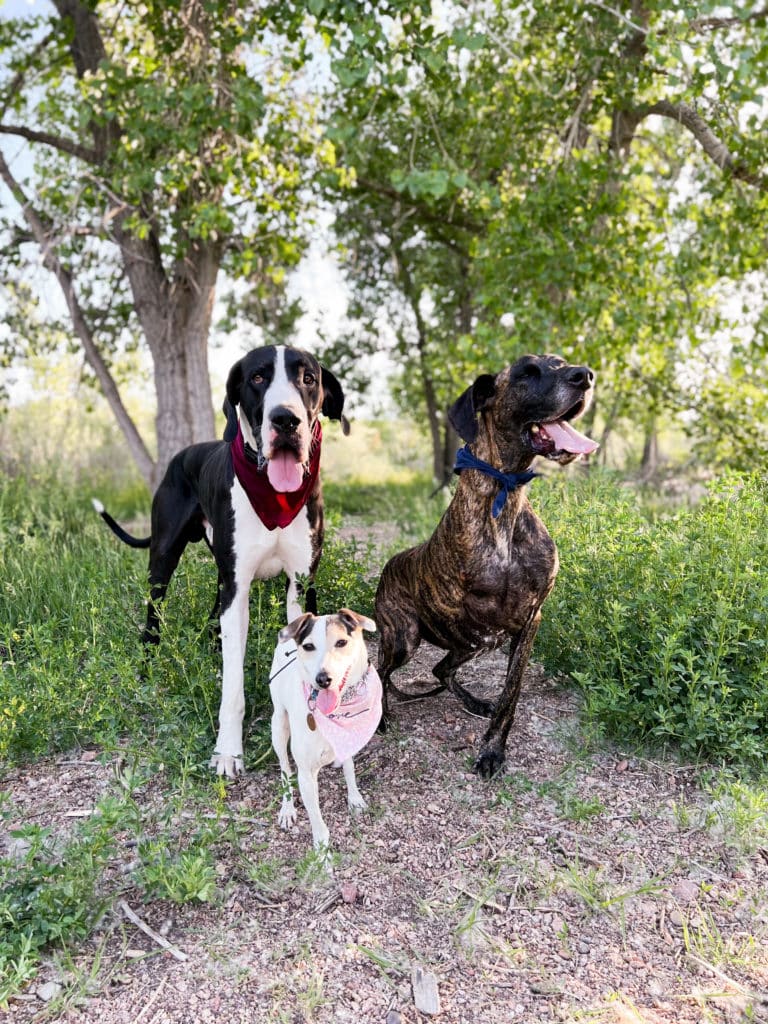
Canine Good Citizen
The AKC Canine Good Citizen test is a fantastic list of goals to work towards.
When your pup can successfully do the following things, it can pass its CGC test (with an accredited AKC CGC Evaluator).
The CGC title, which can then be added to your dog’s registered name, is a great way to show the world that your dog is well-mannered.
Here are the test items:
- Politely greets a friendly stranger
- Sits politely for petting
- Welcomes being groomed, and brushed; and allows paws and ears to be handled
- Walks as directed on a loose leash
- Moves politely through a crowd
- Sits, lies down and stays in place on command
- Comes when called
- Behaves politely around other dogs
- Reacts with confidence to distractions
- Can be left with a trusted person
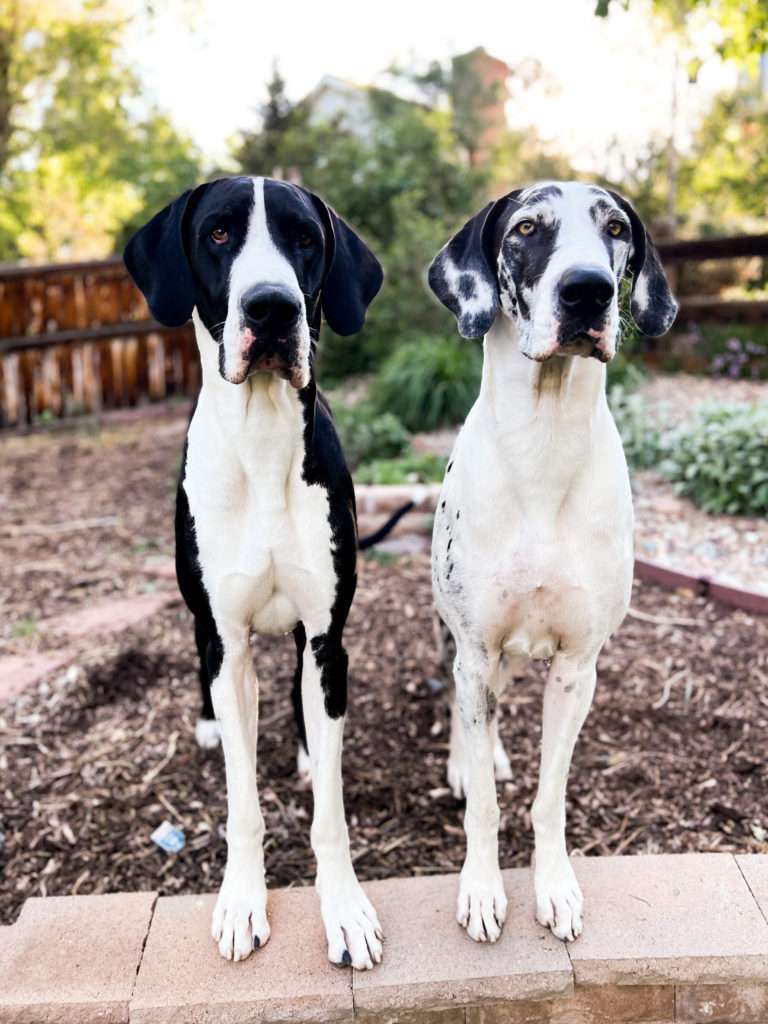
What Commands Should Great Danes Know?
All Great Danes should be taught the following commands. Keep training sessions short, exciting, and rewarding!
To avoid giving too many treats, keep the rewards small and frequent. Your dog doesn’t need a WHOLE treat for each behavior, they just need a tiny bite.
- Sit
- Down
- Leave it
- Back up
- Wait
- Touch
- Look at me
- Heel
- Place
- Free
- Crate up
- Come (arguably the most important command)
Reality Television Dog Training – Our Hot Take
Is My Dog Being Dominant?
Shock Collars – Ethical or Not?
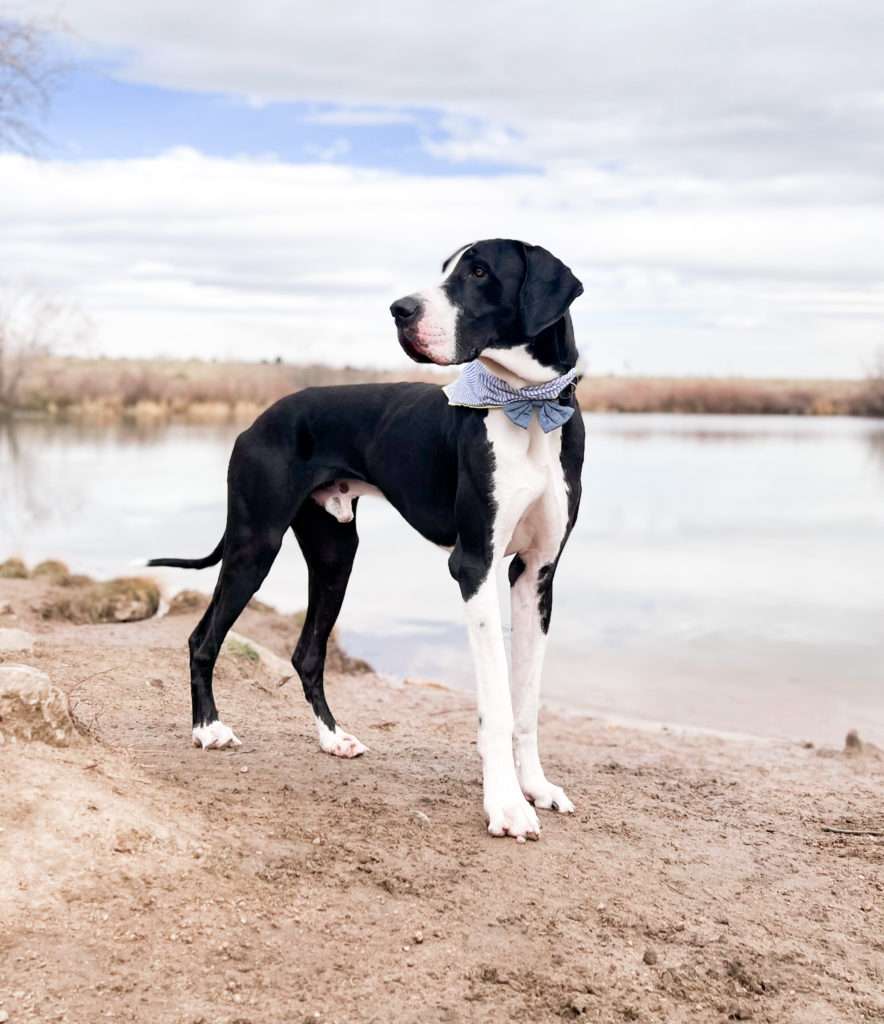
Great Dane Puppy Training
With Great Dane puppies, you have an incredible opportunity to start training at an early age. Great Dane puppies are intelligent dogs and will respond well to treats, praise, play, and attention.
Great Danes are in fact easy to train, so long as you are willing to put the time in!
PRO TIP: most bad behavior is a direct result of poor training, incorrect socialization, inadequate enrichment, and handling or management issues. It’s rarely because a dog is ‘stubborn, willful or defiant’.
Canine Good Citizen Training for Great Danes
AKC STAR PUPPY Training
Deplorable Dog Training – What You Need to Know
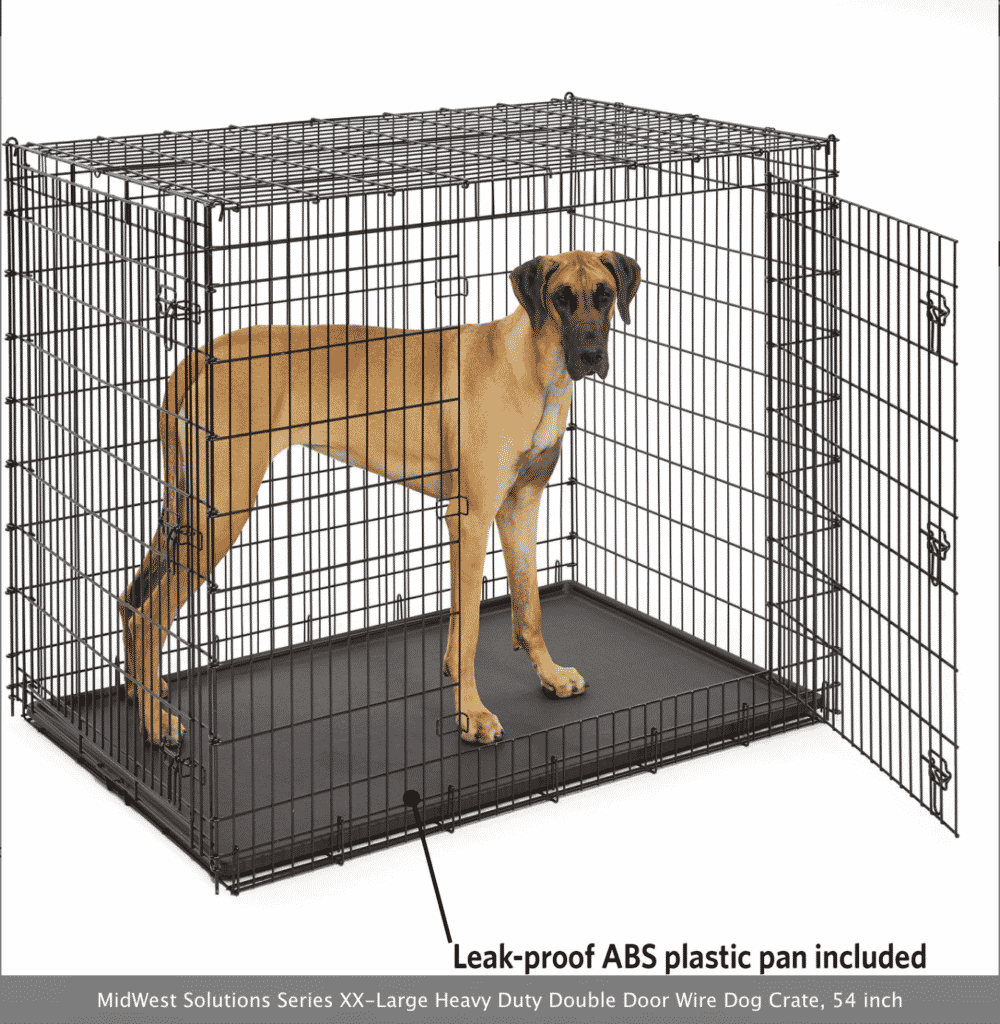
How to crate train a Great Dane: click here
Crate training for Great Danes
The biggest mistake people make when they crate train their Dane puppies is letting them scream, cry and panic inconsolably. This is a bad training technique that literally encourages the puppy to practice the wrong behavior and emotions.
Instead, use a modern training method that makes the crate a fun, safe, and rewarding space.
This may mean starting slow and introducing the crate over several days. Feed meals inside of the crate, and play games where your puppy can learn the basic commands of ‘FREE’ and ‘CRATE UP’!
By making ‘crate up’ and ‘free’ into a game or fun trick, your puppy will be crate trained in no time at all.
Teach your Great Dane to love their crate, and it will be a safe place for them for years to come.
How I Found Balanced Dog Training
Franchise Dog Training Companies – Good or Bad?
6 E-Collar Training Myths – BUSTED
How to Socialize a Great Dane Puppy
Socialization is one of the most important things you can do for your Great Dane puppy.
Start socialization early, and continue throughout the puppy’s life. Socialization is how your puppy learns to be comfortable around people, other animals, new environments, and different sounds and situations.
A well-socialized dog is a happy dog! The best way to socialize your Dane puppy is to expose them to as many new people, places, and things as possible. But, do NOT scare them. If they are fearful, this exposure can actually make things worse.
Every experience must end on a positive note. The more positive experiences they have, the more confident and well-rounded they will be!
Avoid having constant tension on the leash; this mild pressure will result in poor socialization experiences.
Our Great Dane puppy socialization guide will tell you everything you need to know!
All about Great Dane Puppy Training Classes
We recommend starting puppy socialization and 101 obedience classes by 10-12 weeks of age.
Puppy classes are an excellent way to train and socialize your Dane. They will give them a solid foundation of obedience commands that will result in good behavior.
Classes are also a great way to meet other dog owners in your area, receive feedback on your technique, and work with your dog around distractions.
If you only ever train your dog inside of your house, don’t be shocked when they ignore your commands outside of the house!
Most trainers offer intermediate and advanced obedience classes as well. Don’t stop at puppy classes! As your Dane grows, so should their education.
Once your puppy has advanced, you may even consider taking classes for fitness or scent work. Fun tricks can be built upon and used to obtain AKC trick dog titles as well!
Great Dane Puppy Fear Stages
What is Puppy Culture?
Great Dane Puppy Training 101
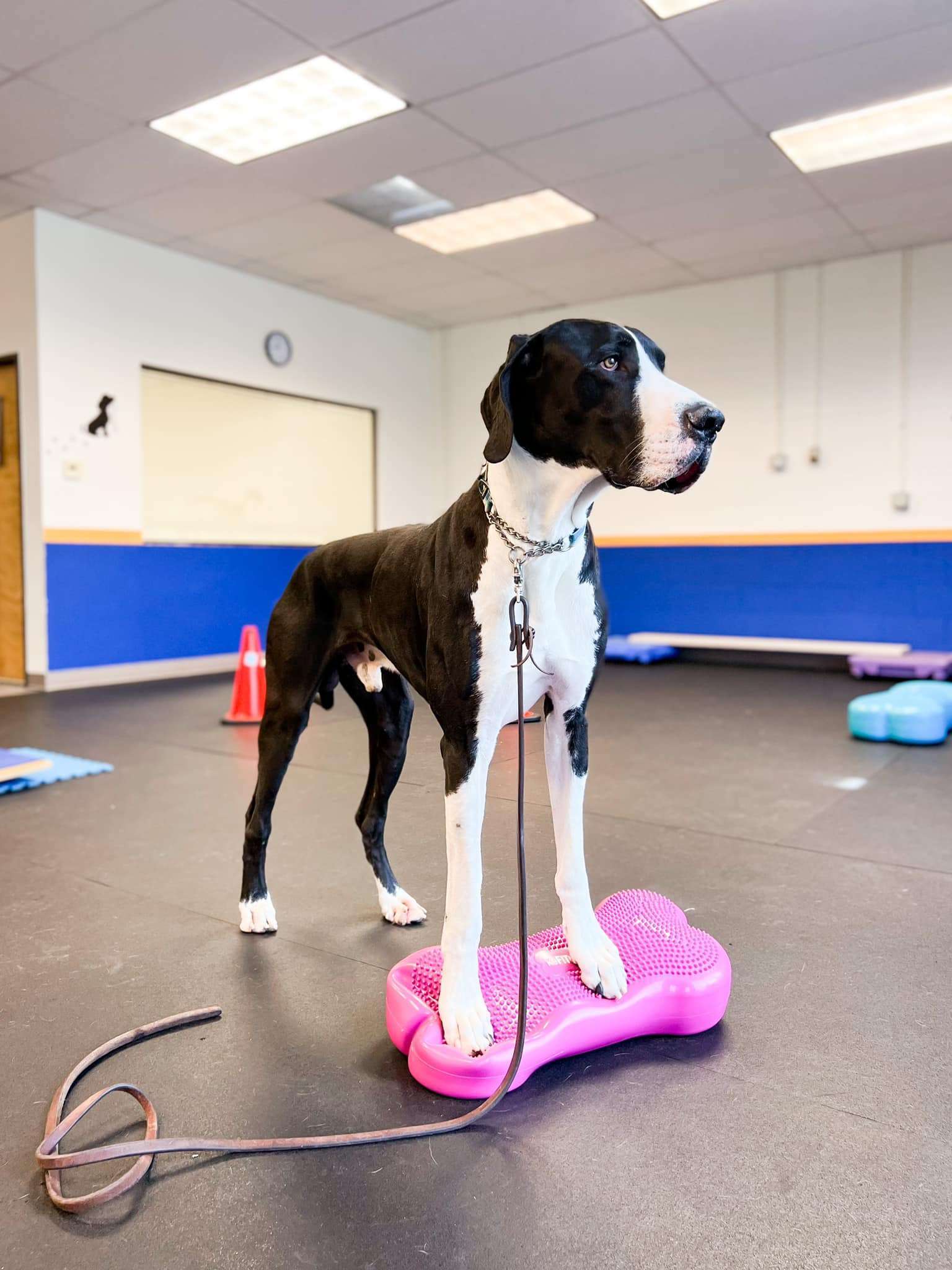
Private Training for Great Danes
Sometimes, group classes aren’t the best option. If you have a dog with special needs, or if you’re looking for more personalized attention, private training may be the way to go.
With private training, you can work one-on-one with a trainer to address specific training goals. This type of training is great for dogs who are shy, fearful, or aggressive.
The bottom line is this: if you want a well-trained dog, you need to put in the time and effort!
Training takes patience, consistency, and commitment.
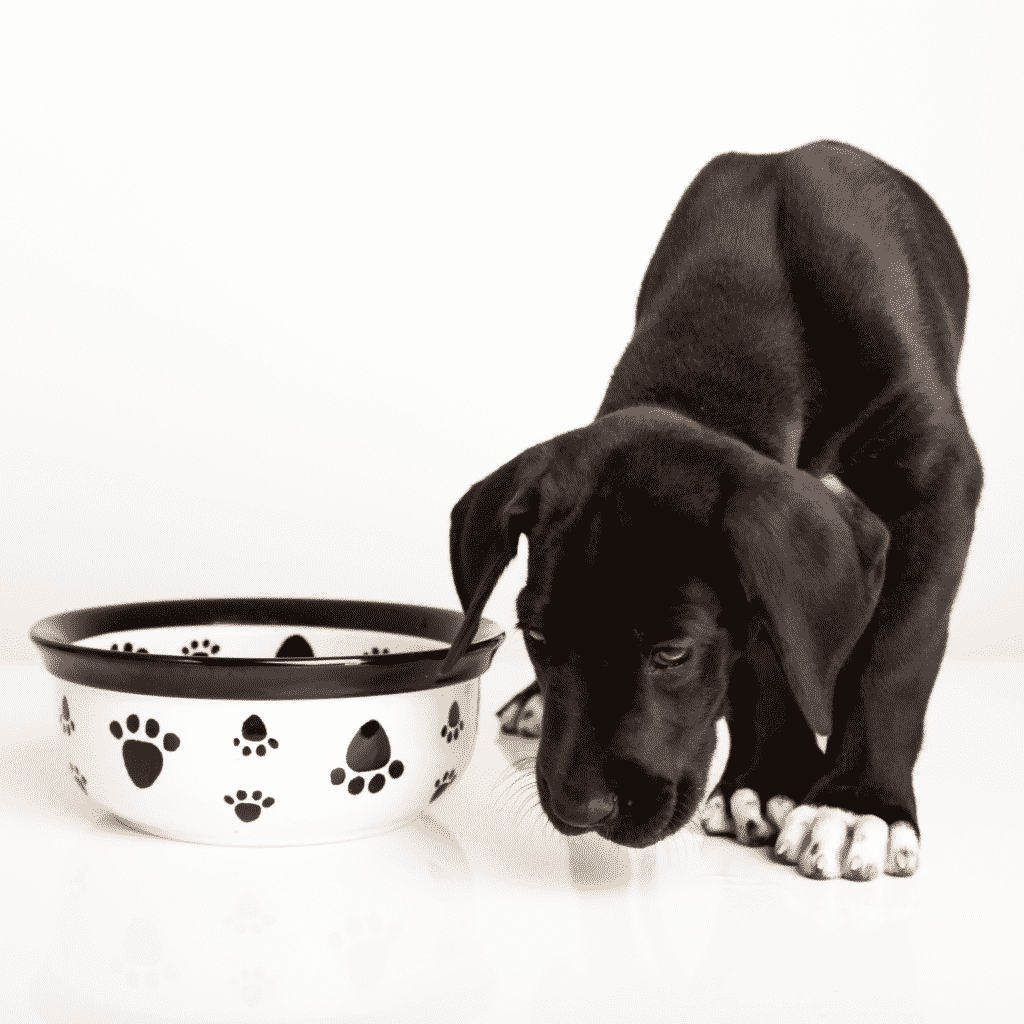
WHAT IS INGREDIENT SPLITTING IN DOG FOOD?
Learn about this dubious marketing practice that may be harming your dog! ↗
Adult Great Dane Training Tips
We’re going to provide some of our favorite Great Dane training tips below!
Having a well-trained, well-socialized Great Dane is an absolute joy. The following basic commands are easy to master if you break them down and start at a level where your dog can learn.
Loose leash walking
We recommend a two-step process for teaching loose leash skills for dogs that pull, lunge, and drag you down the street.
Step One
Practice off-leash in your living room. Use high-value rewards (small bites!) to reward your dog for taking steps next to your left hip and looking at you as you walk together, turn corners, and navigate obstacles.
Gradually increase the difficulty, distance, and distractions. Once your dog can take 10 steps, clip a loose leash onto a flat collar and keep practicing both indoors and out in low-distraction environments.
Step Two
Once your dog is happily following you around off-leash or on a loose leash, it’s time to add a prong collar.
A correctly fit prong collar will not hurt your dog and will give you the ability to keep your dog safe while walking in high-traffic areas or around other dogs.
You must first teach your dog how to respond to the pressure from the collar. Here is an excellent video on this training technique!
Remember to use reinforcement (praise, treats, and toys) when your dog is walking politely on a leash!
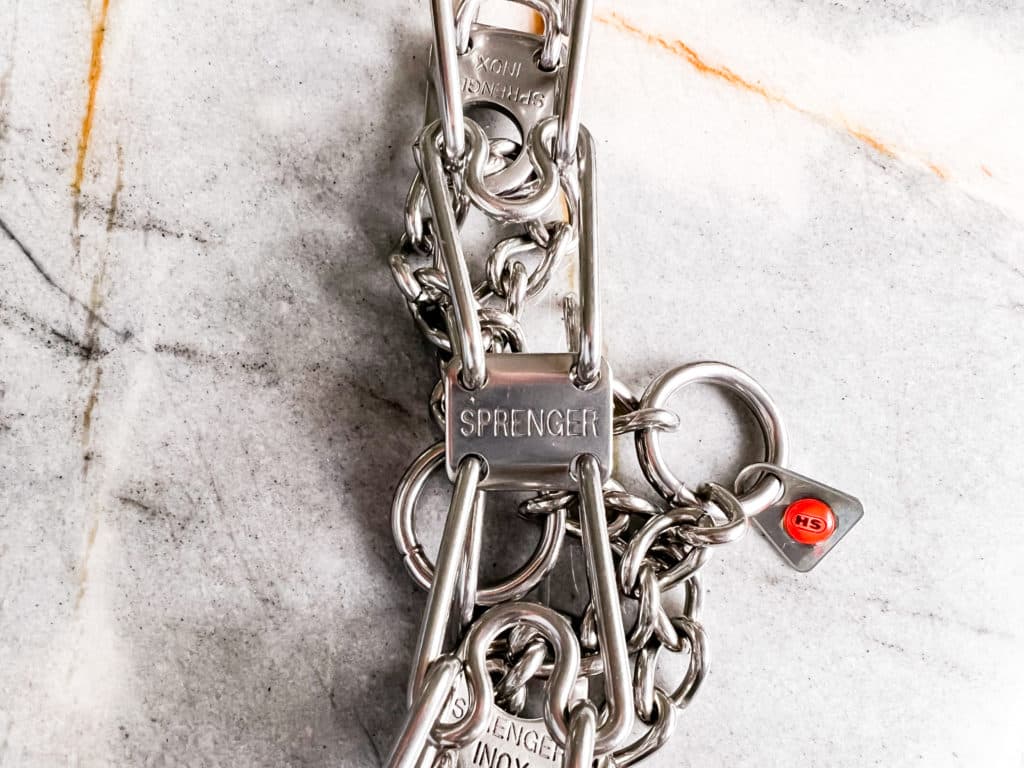
How to choose the best prong collar for your Great Dane.
Coming when Called
We recommend first installing an amazing recall. This means rewarding your dog with treats, toys, and praise when they come to you.
Offer a cue word or phrase such as “here” or “come” while your dog is not paying attention to you, then immediately reward them when they turn their head towards you.
Do this in short training sessions throughout the day, and gradually increase the distance and distractions. Never scold your dog for blowing you off or not coming when called!
Once your dog has a good recall, it’s time to layer in the E-Collar so they can safely be off-leash.
Polite Social Skills
Great Danes MUST have polite social skills with people and dogs. It is dangerous for them to be humping, jumping, mouthing, or being rude in any way.
Positive socialization, obedience training, and working with an accredited AKC CGC Evaluator/Trainer will ensure that your Great Dane is a polite, friendly, calm, confident citizen anywhere you go.
Stay & Place
Stay and Place training is critical for all dogs, but especially important for Great Danes.
This is because Great Danes are giant dogs and can easily knock over small children or elderly people when they jump up or lean on them.
As with all new skills, this is easy to teach using rewards!
Start with your dog in a sit or down, then take one step away from them. If they move, simply stop and go back to the beginning. Train your Great Dane to stay by starting at a very basic level, and working your way up.
When they stay put, even if it’s just for a second, reward/treat and then repeat.
Gradually increase the distance, time, and distractions.
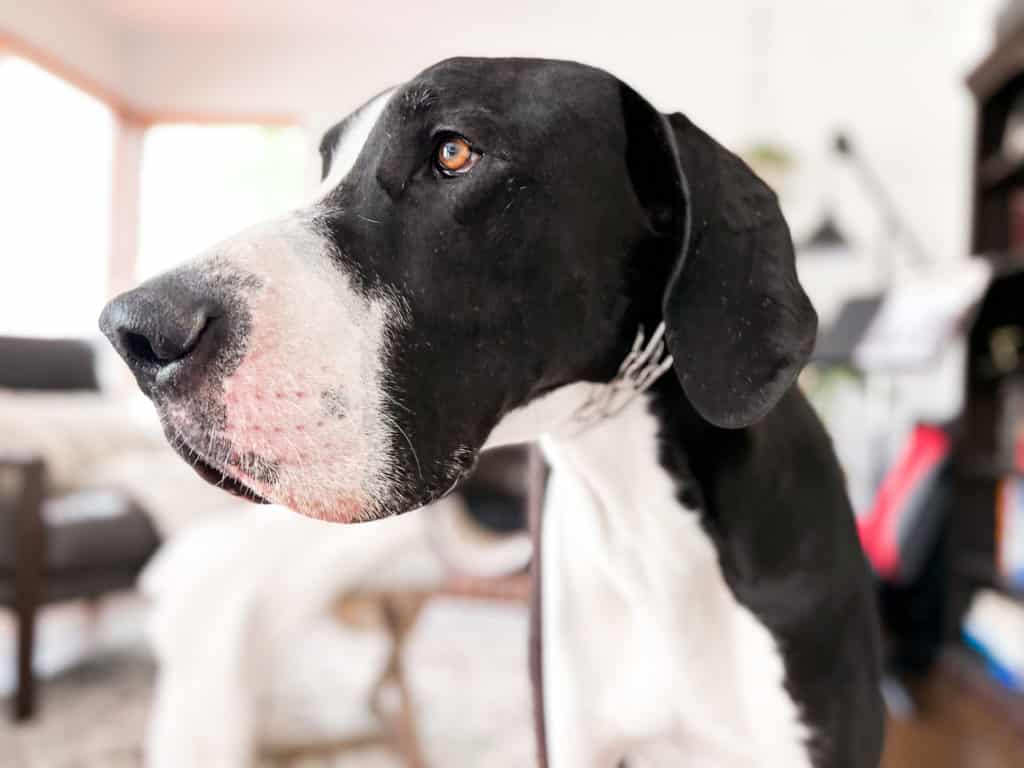
Training Great Danes is Easy
We believe that training Great Danes is easy. Start at a young age if possible. Use lots of verbal praise, small treats, and rewards.
If you find yourself saying NO more than you are saying YES, ask yourself the following questions:
- Does my dog actually know the behavior that I am asking, in this level of distractions?
- Is my puppy mature enough physically and mentally to respond to this?
- Am I being fair with my corrections, or am I being frustrated?
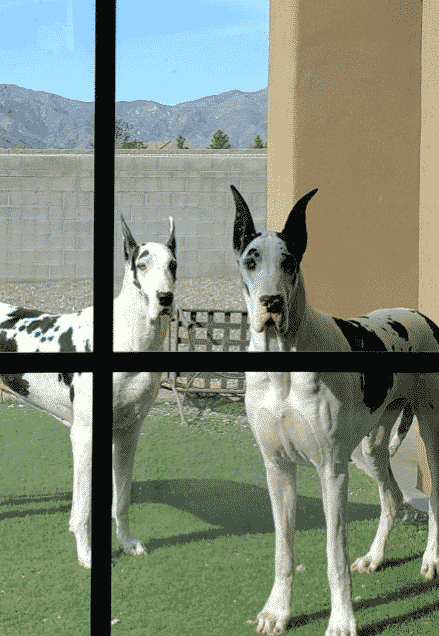
JOIN OUR COMMUNITY
Do you like modern positive+balanced off-leash dog training, science-based information, life with Danes, educated ownership and chatting with other like-minded people?
Join our growing Facebook group!
